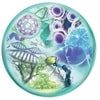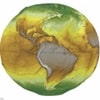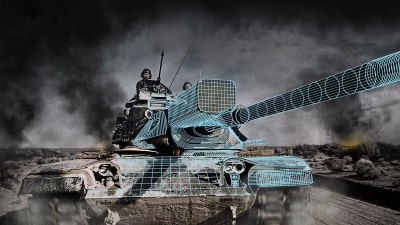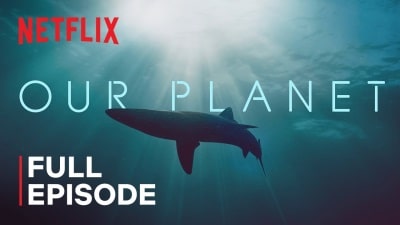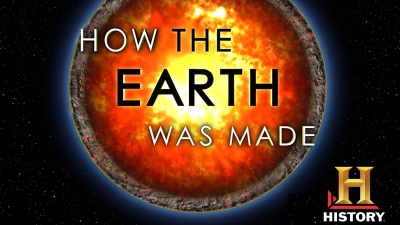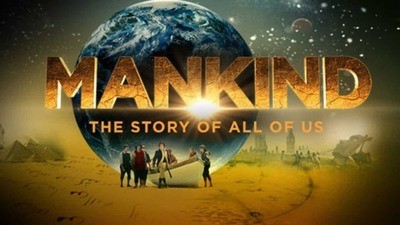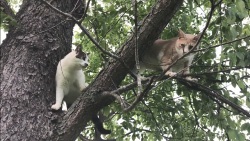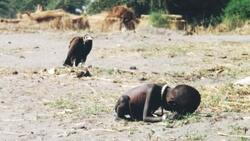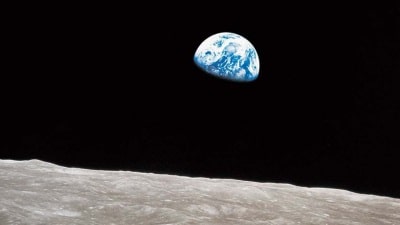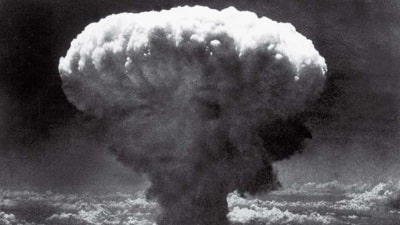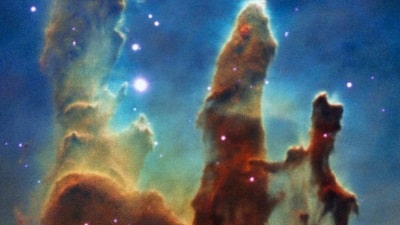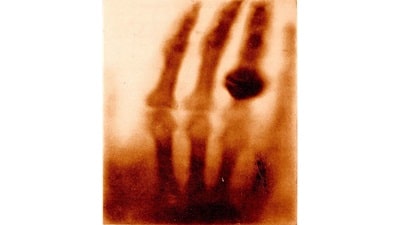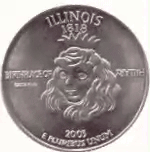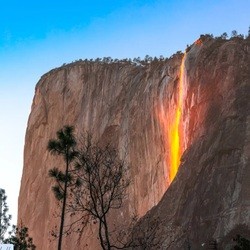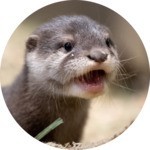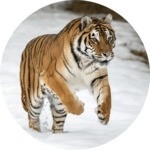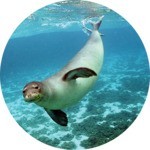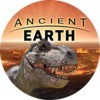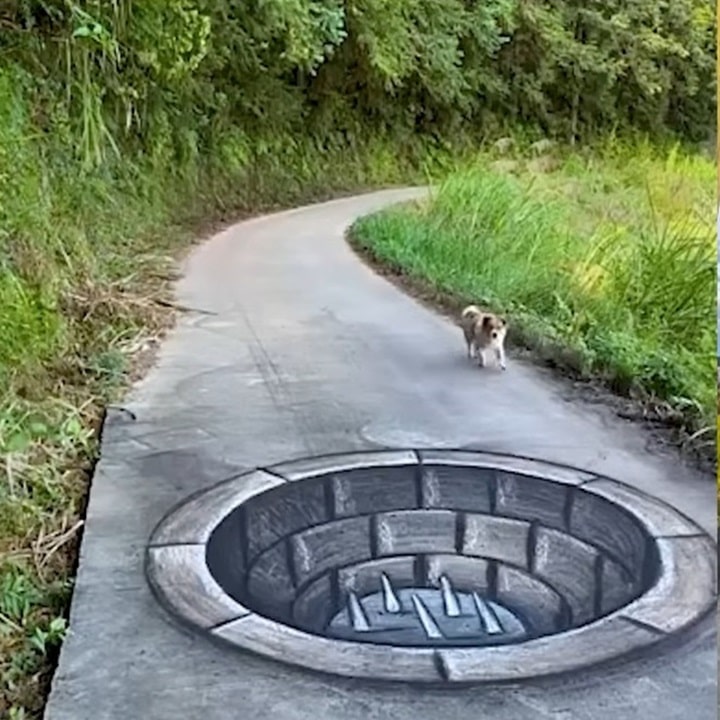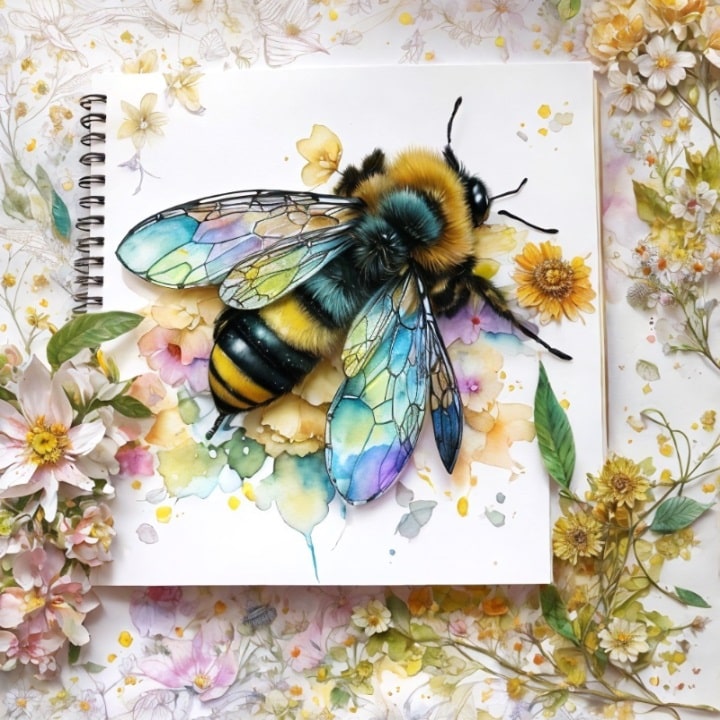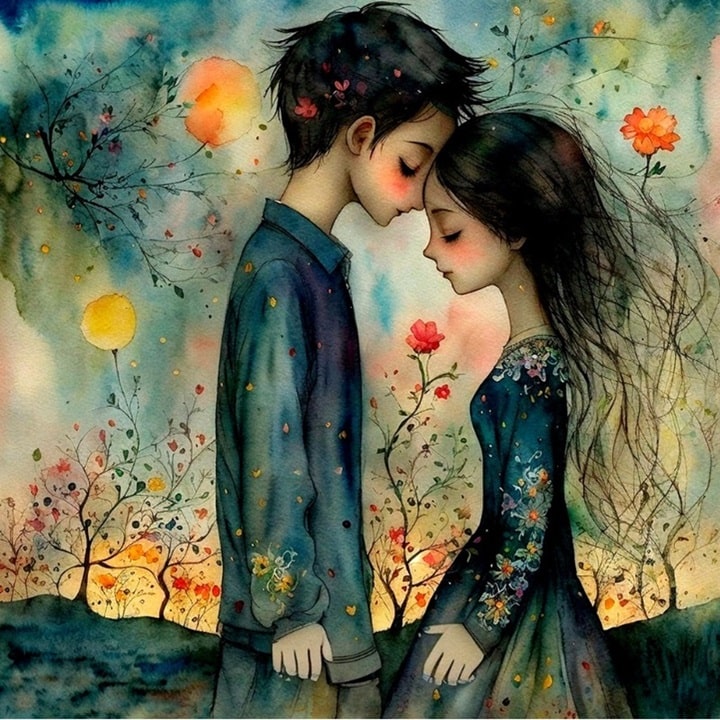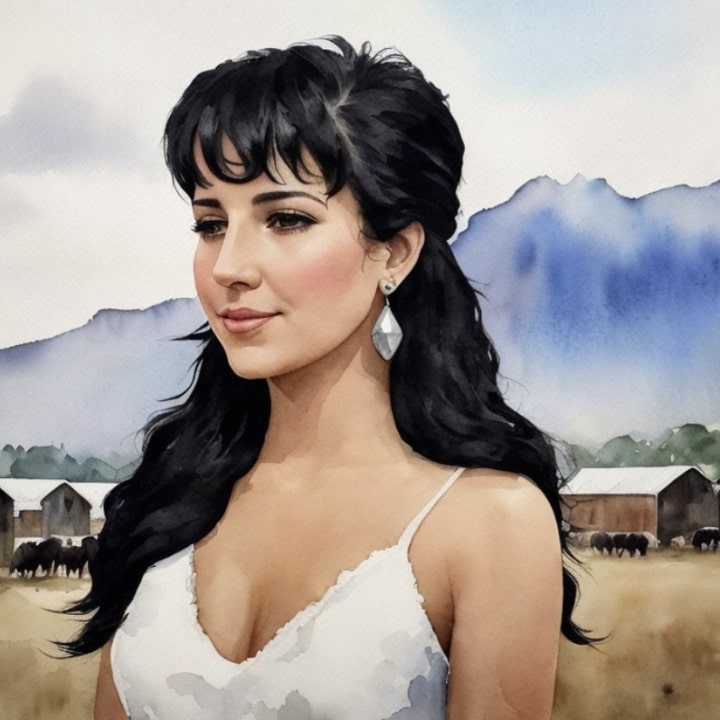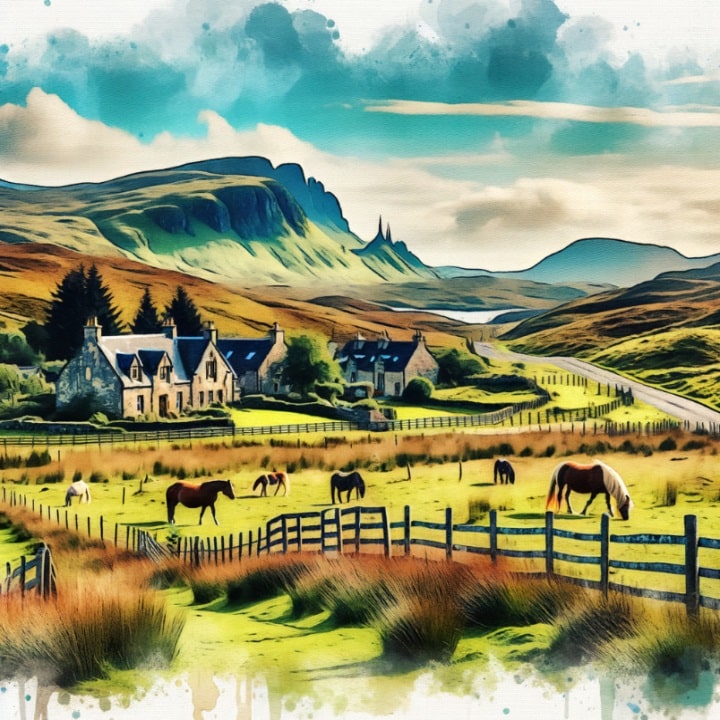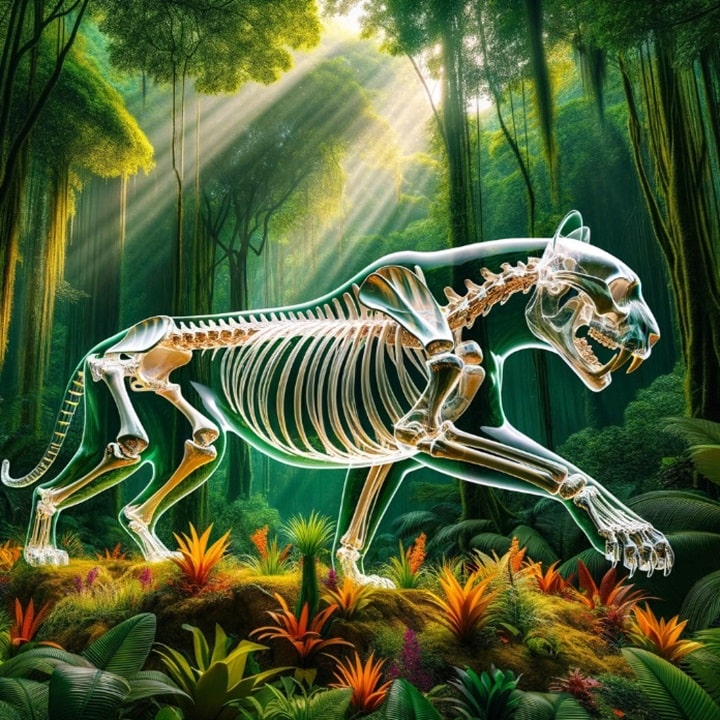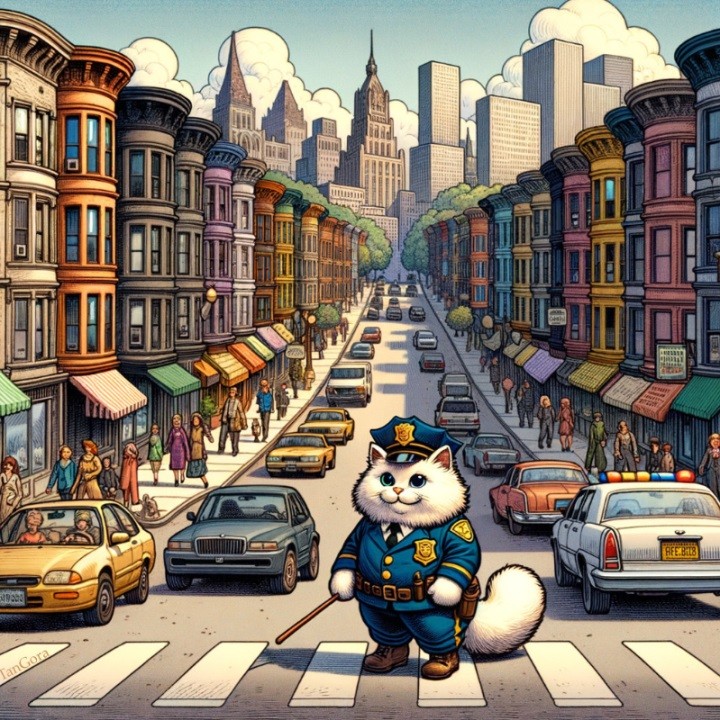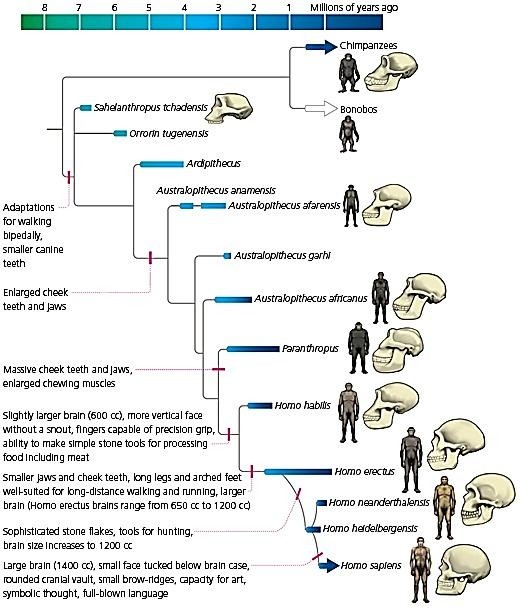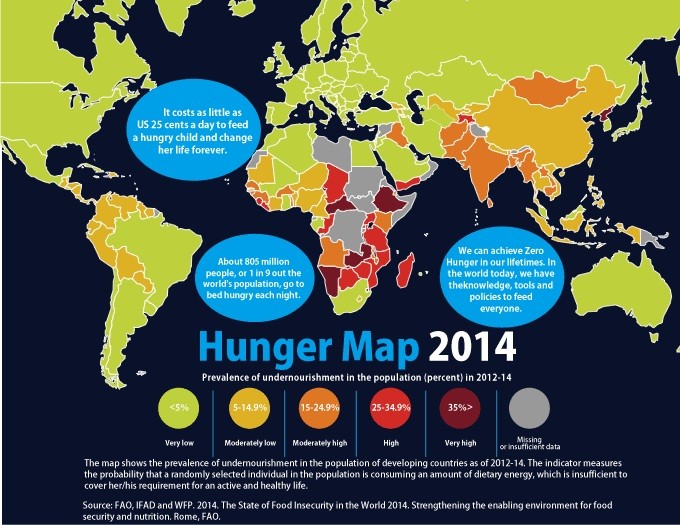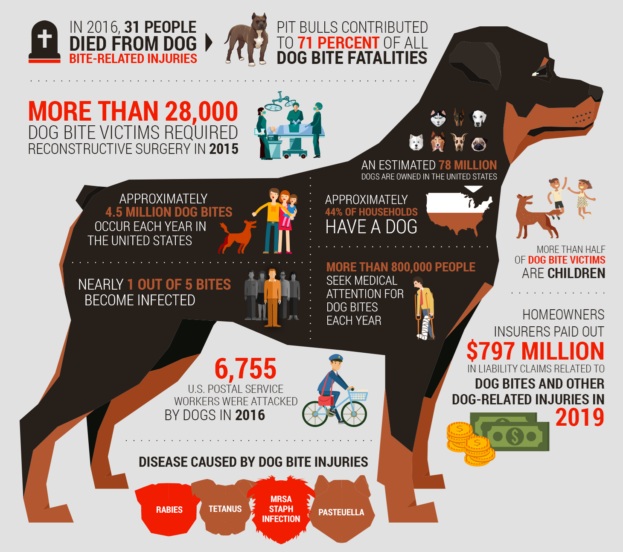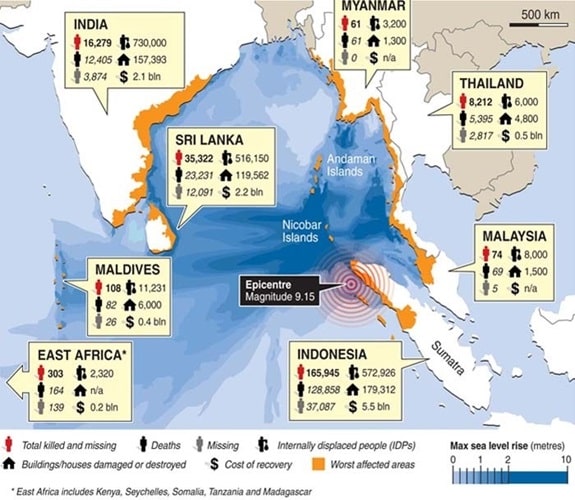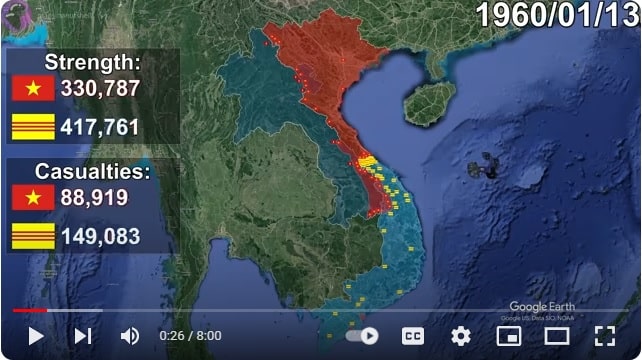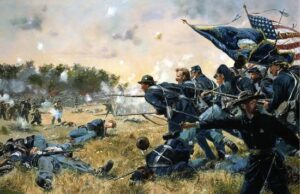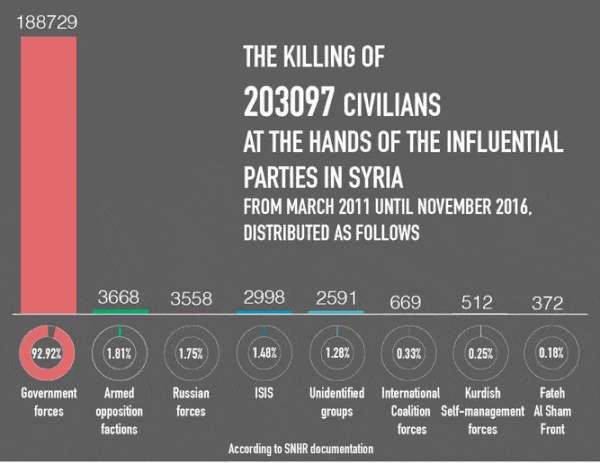
*Animation
🙂 African slaves on slave ships endured cramped, unsanitary conditions with little food or water. They faced brutal treatment and suffered from diseases. Many died during the voyage, enduring immense suffering. (1500-1850)
💀
🙂 The Industrial Revolution spurred rapid population growth, rising from 1 billion in 1800 to over 8 billion by 2022, driven by advancements in agriculture, medicine, sanitation, and improved living standards.
💀
(8.2 billion today)
🙂 Blue whale (Balaenoptera musculus), the largest animal on Earth today, measures about 30 meters in length and weighs between 180 to 200 tons. This is larger than any dinosaur. Blue whales can live up to 70 to 90 years, with some individuals reaching over 100 years.
🙂 A tiger would generally have the advantage in a fight with a lion due to its superior strength, speed, and agility. While lions hunt in prides, tigers are solitary hunters, giving the tiger the upper hand in one-on-one combat.
🙂 The question "Which came first, the chicken or the egg?" is a philosophical inquiry about cause and effect. Scientifically, the egg came first, as birds similar to chickens existed before and evolved into modern chickens through genetic mutations.
🙂 Of all the many and varied types of execution – electrocution, hanging, shooting, gassing, stoning – lethal injection has emerged as the new method of choice for some because of its allegedly humane qualities. 🐬
🙂 The Bubonic Plague, also known as the Black Death, was a devastating pandemic that struck Europe in the 14th century (1347–1351). It led to the death of an estimated 25 to 30 million people in Europe alone, about one-third of the population at the time.
🙂 Two-thirds of the world’s polar bear population could face extinction by 2050 if global warming continues to melt their Arctic sea-ice habitat. The loss of ice affects their ability to hunt seals and find breeding grounds, threatening their survival.
🙂 Approximately 9.1% of the global population suffers from chronic undernourishment, while 27% of children under five face severe food poverty, highlighting the widespread and persistent issue of malnutrition worldwide.
💀
🙂 Countries with high traffic accident rates relative to their population include Venezuela, Thailand, Egypt, India, Russia, and Mexico with death rates around 50, 33, 26, 21, 19, and 17 per 100,000 people, respectively.
🙂 As of 2024, the top five strongest military powers are the United States, Russia, China, India, and South Korea, based on factors like manpower, equipment, technological advancements, and logistical capacity.
🙂 In the United States, over 1 million vertebrate animals are killed by vehicle collisions every day. Globally, the number amounts to roughly 5.5 million killed per day, which when extrapolated climbs to over 2 billion annually.
💀
🙂 The countries with the highest income per capita in the world include Luxembourg, Switzerland, Ireland, Norway, Qatar, Macau, and the United States, with Luxembourg consistently ranking at the top.
🙂 Approximately 4.5 million people are bitten by dogs annually in the U.S., with about 800,000 requiring medical attention for their injuries. Additionally, around 30-50 fatalities occur each year in the U.S. due to severe dog attacks.
💀
🙂 The 2004 Indian Ocean tsunami was triggered by a massive undersea earthquake off Sumatra's coast. With heights up to 100 feet, it caused widespread destruction, claiming between 230,000 to 280,000 lives.
💀
🙂 World agricultural production has significantly increased over the past several decades, nearly quadrupling since 1961, driven by technological advancements, better farming practices, more fertilizer use, and expanded cultivated land.
🙂 Feral cats are responsible for the deaths of billions of wildlife annually. In the United States alone, feral and free-roaming domestic cats kill an estimated 1.3 to 4 billion birds and 6.3 to 22.3 billion mammals each year.
🙂 According to the World Health Organization (WHO), between 2030 and 2050, climate change is expected to cause approximately 250,000 additional deaths per year, from undernutrition, malaria, diarrhoea and heat stress alone.
🙂 Globally, there were 249 million cases of malaria in 2022. And in that same year, there were over 608,000 malaria deaths. In 2022, 95% of malaria-related deaths and 94% of malaria cases occurred in the WHO African region.]
🙂 Globally, it is estimated that more than 100 million people have died on the roads since the birth of the motor car.
In addition, countless others have been injured, often suffering life-altering consequences.
🙂 Animal Testing: In the United States, around 1 million animals are used in research annually, excluding species like mice and rats. In the European Union, over 10 million animals are used in experiments each year.
🙂 Usain Bolt of Jamaica set the world record of 9.58 seconds in the 100 meters at the 2009 World Championships in Athletics in Berlin. The cheetah can run more than twice as fast as Usain Bolt.
🙂 The Moon formed about 4.5 billion years ago from debris after a collision between a Mars-sized object and Earth. Its influence on Earth's environment, tilt, and tides has been crucial for life's development and sustainability.
🙂 The most expensive painting ever sold at auction is "Salvator Mundi" attributed to Leonardo da Vinci. It was sold for $450.3 million in November 2017 at Christie's auction house in New York.
🙂 The estimated total cost of James Webb Space Telescope, including development, launch, and operations, is $10 billion USD. The most expensive aircraft carrier, USS Gerald R. Ford, is $13 billion USD (estimated).
🙂 The oldest person ever verified by reliable records is Jeanne Calment, a French woman who lived to be 122 years and 164 days old. She was born on February 21, 1875, and passed away on August 4, 1997.
🙂 The Greenland shark is one of the longest-living animals, known to live over 400 years. Bristlecone pines, found in the western US, are among the longest-living plants, with some specimens over 4,800 years old.
🙂 Scientists have estimated that there are around 8.7 million species of plants and animals in existence. However, only around 1.2 million species have been identified and described so far, most of which are insects.
🙂 There are 195 countries in the world today. This total comprises 193 countries that are member states of the United Nations and 2 countries that are non-member observer states: the Holy See and the State of Palestine.
🙂 Astronomers estimate that there are at least 100 billion galaxies in the observable universe, with each galaxy containing anywhere from tens of millions to trillions of stars, revealing the vastness and complexity of the cosmos.
🙂 The deadliest natural disaster in recorded history occurred during the 1931 China floods, which claimed an estimated 1 to 4 million lives as a result of heavy rainfall and overflowing rivers.
🙂 The tallest building in the world is the Burj Khalifa, located in Dubai, United Arab Emirates, standing at a height of 828 meters (2,717 feet). The Burj Khalifa serves as a symbol of modern engineering and architectural innovation.
🙂 In January 2022, the estimated population of the whole world was approximately 7.9 billion people. Some estimates put the total number of humans who have ever lived at around 100 billion.
🙂 In 2023, the toll of gun-related injuries was staggering, claiming over 42,967 lives, with more than half attributed to suicides. Simultaneously, motor vehicle traffic crashes resulted in 40,990 fatalities.
 Clicking the image on the left opens a popup in the center or left.
Clicking the image on the left opens a popup in the center or left.Click the title below the video to open the lyrics in a separate window.
🌺 A Lover's Concerto - The Toys (1965)
How gentle is the rain
That falls softly on the meadow?
Birds high up in the trees
Serenade the flowers with their melodies
Oh-oh, see, there beyond the hill
The bright colors of the rainbow
Some magic from above
Made this day for us, just to fall in love
Now, I belong to you
From this day until forever
Just love me tenderly
And I’ll give to you every part of me
Oh-oh, don’t ever make me cry
Through long, lonely nights without love
Be always true to me
Keep this day in your heart eternally
Someday we shall return
To this place upon the meadow
We’ll walk out in the rain
Hear the birds above singing once again
Oh-oh, you hold me in your arms
And say once again you love me
And if your love is true
Everything will be just as wonderful
You’ll hold me in your arms
And say once again you love me
And if your love is true
Everything will be just as wonderful
You’ll hold me in your arms
And say once again you love me
And if your love is true
🌺 California Dreamin’ – The Mamas & The Papas (1965)
All the leaves are brown
And the sky is gray
I went for a walk
On a winters day
I’d be safe and warm
If I was in LA
California dreamin’
On such a winters day
Went to a church, yes I did
I stopped along the way
When I got down on my bended knees
And I began to pray
You know the preacher digs a call
‘Cause he knows I’m gunna stay
He knows I’m gunna stay, I told him so
California dreamin’
Oh, somebody hit me now
I wanna go so bad, yeah
‘Cause all the leaves are brown
And the skies are gray, yeah
I went for a walk
On a winters day, ooh
I’d be safe and warm
If I was in LA
California dreamin’
On such a winters day
Such a winters day
On such a winters day
Yeah, yeah, whoa
California dreamin’
California dreamin’
Gotta, gotta, gotta get some sunshine
Before I blow my mind
Gotta get some sunshine
California dreamin’
California dreamin’
Ohh, let’s go there one day
California dreamin’, ohh
California dreamin’
Got to get to LA
Friend of mine told me there’s sunshine every day
California dreamin’, ohh
🌺 Can’t Help Falling in Love with You – Elvis Presley (1961)
Wise men say
“Only fools rush in”
But I can’t help
Falling in love with you
Shall I stay?
Would it be a sin
If I can’t help
Falling in love with you?
Like a river flows
Surely to the sea
Darling, so it goes
Some things are meant to be
Take my hand
Take my whole life, too
For I can’t help
Falling in love with you
Like a river flows
Surely to the sea
Darling, so it goes
Some things are meant to be
🌺 Happy Together - The Turtles (1967)
Imagine me and you, I do
I think about you day and night, it’s only right
To think about the girl you love and hold her tight
So happy together
If I should call you up, invest a dime
And you say you belong to me, and ease my mind
Imagine how the world could be, so very fine
So happy together
I can’t see me lovin’ nobody but you
For all my life
When you’re with me, baby, the skies’ll be blue
For all my life
Me and you, and you and me
No matter how they toss the dice, it had to be
The only one for me is you, and you for me
So happy together
I can’t see me lovin’ nobody but you
For all my life
When you’re with me, baby, the skies’ll be blue
For all my life
Me and you, and you and me
No matter how they toss the dice, it had to be
The only one for me is you, and you for me
So happy together
Ba-ba-ba-ba ba-ba-ba-ba ba-ba-ba ba-ba-ba-ba
Ba-ba-ba-ba ba-ba-ba-ba ba-ba-ba ba-ba-ba-ba
Me and you, and you and me
No matter how they toss the dice, it had to be
The only one for me is you, and you for me
So happy together
So happy together
And how is the weather?
So happy together
We’re happy together
So happy together
Happy together
So happy together
So happy together
🌺 The House of the Rising Sun – The Animals (1964)
There is a house way down in New Orleans
They call the Rising Sun
And it’s been the ruin of many a poor boy
And God I know I’m one
Mother was a tailor, yeah, yeah
Sewed my Levi jeans
My father was a gamblin’ man, yeah, yeah
Down, way down in New Orleans
Now the only thing a gamblin’ man ever needs
Is a suitcase, Lord, and a trunk
And the only time a fool like him is satisfied
Is when he’s all stone cold drunk
Oh, mothers, tell your children
Not to do what I have done
Spend your lives in sin and misery
In the House of the Rising Sun
🌺 I Will Follow Him – Peggy March (1963)
Love him, I love him, I love him
And where he goes I’ll follow, I’ll follow, I’ll follow
I will follow him
Follow him wherever he may go
There isn’t an ocean too deep
A mountain so high it can keep me away
I must follow him (follow him)
Ever since he touched my hand I knew
That near him I always must be
And nothing can keep him from me
He is my destiny (destiny)
I love him, I love him, I love him
And where he goes I’ll follow, I’ll follow, I’ll follow
He’ll always be my true love, my true love, my true love
From now until forever, forever, forever
I will follow him (follow him)
Follow him wherever he may go
There isn’t an ocean too deep
A mountain so high it can keep, keep me away
Away from my love (I love him, I love him, I love him)
I love him, I love him, I love him
And where he goes I’ll follow, I’ll follow, I’ll follow
He’ll always be my true love, my true love, my true love
From now until forever, forever, forever
I will follow him (follow him)
Follow him wherever he may go
There isn’t an ocean too deep
A mountain so high it can keep, keep me away
Away from my love
And where he goes I’ll follow, I’ll follow, I’ll follow
I know I’ll always love him, I love him, I love him
And where he goes I’ll follow, I’ll follow, I’ll follow
I know I’ll always love him, I love him, I love him
And where he goes I’ll follow
🌺 If – Sissel Kyrkjebø (1971)
If a picture paints a thousand words
Then why can’t I paint you?
The words will never show
The you I’ve come to know
If a face could launch a thousand ships
Then where am I to go?
There’s no one home but you
You’re all that left me too
And when my love for life is running dry
You come and pour yourself on me
If a girl could be to places
At one time, I’d be with you
Tomorrow and today
Beside you all the way
If the world show stop revolving
Spinning slowly down to die
I’d spend the end with you
And when the worlds was through
Then one by one the stars would all go out
Then you and I would simply fly away
🌺 Love Potion No. 9 – The Searchers (1964)
I took my troubles down to Madame Rue
You know that gypsy with the gold-capped tooth
She’s got a pad down on Thirty-Fourth and Vine
Sellin’ little bottles of Love Potion Number Nine
I told her that I was a flop with chicks
I’d been this way since 1956
She looked at my palm and she made a magic sign
She said “What you need is Love Potion Number Nine”
She bent down and turned around and gave me a wink
She said “I’m gonna make it up right here in the sink”
It smelled like turpentine, it looked like India Ink
I held my nose, I closed my eyes, I took a drink
I didn’t know if it was day or night
I started kissin’ everything in sight
But when I kissed a cop down on Thirty-Fourth and Vine
He broke my little bottle of Love Potion Number Nine
🌺 Sad Movies – Sue Thomson (1961)
Sa-a-a-d movies
Always make me cry
He said he had to work
So I went to the show alone
They turned down the lights
And turned the projector on
And just as the news of the world started to begin
I saw my darlin’ and my best friend walk in
Though I was sittin’ there they didn’t see
And so they sat right down in front of me
When he kissed her lips I almost died
And in the middle of the color cartoon
I started to cry.
Oh-oh-oh, sa-a-a-d movies
Always make me cry
Oh-oh-oh, sa-a-a-d movies
Always make me cry
(Doo-be doo-be doo-be doo-be doo be)
So I got up and slowly walked on home
And mama saw the tears and said “what’s wrong?”
And so to keep from telling her a lie
I just said “sa-a-a-d movies
Make me cry” (make me cry, oh-oh, oh)
Oh-oh-oh, sa-a-a-d movies
Always make me cry
Oh-oh-oh, sa-a-a-d movies
Always make me cry
(Doo-be doo-be doo-be doo-be doo be)
“Sa-a-a-d movies
Make me cry”
🌺 Rain And Tears – Aphrodite’s Child (1968)
Rain and tears are the same
But in the sun you’ve got to play the game
When you cry
In winter time
You can pretend
It’s nothing but the rain
How many times I’ve seen
Tears coming from your blue eyes
Rain and tears, are the same
But in the sun
You’ve got to play the game
Give me an answer, love (oh)
I need an answer, love (oh)
Rain and tears in the sun
But in your heart
You feel the rainbow waves
Rain and tears
Both I shun
For in my heart there ‘ll never be a sun
Rain and tears, are the same
But in the sun
You’ve got to play the game
Game
🌺 Do You Hear What I Hear? – Bing Crosby (1963)
Do you hear what I hear?
Said the night wind to the little lamb
Do you see what I see?
(Do you see what I see?)
Way up in the sky, little lamb
Do you see what I see?
(Do you see what I see?)
A star, a star, dancing in the night
With a tail as big as a kite
With a tail as big as a kite
Said the little lamb to the shepherd boy
Do you hear what I hear?
(Do you hear what I hear?)
Ringing through the sky, shepherd boy
Do you hear what I hear?
(Do you hear what I hear?)
A song, a song high above the trees
With a voice as big as the sea
With a voice as big as the sea
Said the shepherd boy to the mighty king
Do you know what I know? (Do you know what I know?)
In your palace warm, mighty king
Do you know what I know? (Do you know what I know?)
A Child, a Child shivers in the cold
Let us bring him silver and gold
Let us bring him silver and gold
Said the king to the people everywhere
Listen to what I say! (Listen to what I say!)
Pray for peace, people, everywhere
Listen to what I say! (Listen to what I say!)
The Child, the Child sleeping in the night
He will bring us goodness and light
He will bring us goodness and light
🌺 All I Want for Christmas Is You – Mariah Carey (1994)
I don’t want a lot for Christmas
There is just one thing I need
I don’t care about the presents underneath the Christmas tree
I just want you for my own
More than you could ever know
Make my wish come true
All I want for Christmas is you
Yeah
I don’t want a lot for Christmas
There is just one thing I need (and I)
Don’t care about the presents underneath the Christmas tree
I don’t need to hang my stocking there upon the fireplace
Santa Claus won’t make me happy with a toy on Christmas Day
I just want you for my own
More than you could ever know
Make my wish come true
All I want for Christmas is you
You, baby
Oh, I won’t ask for much this Christmas
I won’t even wish for snow (and I)
I’m just gonna keep on waiting underneath the mistletoe
I won’t make a list and send it to the North Pole for Saint Nick
I won’t even stay awake to hear those magic reindeer click
‘Cause I just want you here tonight
Holding on to me so tight
What more can I do?
Oh, baby, all I want for Christmas is you
You, baby
Oh-oh, all the lights are shining so brightly everywhere (so brightly, baby)
And the sound of children’s laughter fills the air (oh, oh, yeah)
And everyone is singing (oh, yeah)
I hear those sleigh bells ringing
Santa, won’t you bring me the one I really need? (Yeah, oh)
Won’t you please bring my baby to me?
Oh, I don’t want a lot for Christmas
This is all I’m asking for
I just wanna see my baby standing right outside my door
Oh, I just want you for my own
More than you could ever know
Make my wish come true
Oh, baby, all I want for Christmas is you
You, baby
All I want for Christmas is you, baby
All I want for Christmas is you, baby
All I want for Christmas is you, baby
All I want for Christmas (all I really want) is you, baby
All I want (I want) for Christmas (all I really want) is you, baby
🌺 Save the Last Dance for Me – The Drifters (1960)
You can dance
Every dance with the guy
Who gives you the eye
Let him hold you tight
You can smile
Every smile for the man
Who held your hand
‘Neath the pale moonlight
But don’t forget who’s taking you home
And in whose arms you’re gonna be
So darlin’
Save the last dance for me, hmm
Oh, I know (oh, I know)
That the music’s fine (yes, I know)
Like sparkling wine (oh, I know)
Go and have your fun (yes, I know, oh, I know)
Laugh and sing (yes, I know)
But while we’re apart (oh, I know)
Don’t give your heart (yes, I know)
To anyone (oh, I know, yes, I know)
But don’t forget who’s taking you home
And in whose arms you’re gonna be
So darlin’
Save the last dance for me, hmm
Baby, don’t you know I love you so?
Can’t you feel it when we touch?
I will never, never let you go
I love you, oh, so much
You can dance (you can dance)
Go and carry on (you can dance)
‘Till the night is gone (you can dance)
And it’s time to go (you can dance, you can dance)
If he asks (you can dance)
If you’re all alone (you can dance)
Can he take you home (you can dance)
You must tell him, no (you can dance)
‘Cause don’t forget who’s taking you home
And in whose arm’s you’re gonna be
So darlin’
Save the last dance for me
‘Cause don’t forget who’s taking you home
And in whose arm’s you’re gonna be
So darlin’
Save the last dance for me, hmm
Save the last dance for me, hmm-hmm
Save the last dance for me, hmmm
Save
🌺 What a Feeling – Irene Cara (1983)
First, when there’s nothing
But a slow glowing dream
That your fear seems to hide
Deep inside your mind
All alone, I have cried
Silent tears full of pride
In a world made of steel
Made of stone
Well, I hear the music
Close my eyes, feel the rhythm
Wrap around, take a hold of my heart
What a feeling
Being’s believin’
I can have it all, now I’m dancing for my life
Take your passion
And make it happen
Pictures come alive
You can dance right through your life
Now I hear the music
Close my eyes, I am rhythm
In a flash, it takes hold of my heart
What a feeling
Being’s believin’
I can have it all, now I’m dancing for my life
Take your passion
And make it happen
Pictures come alive
You can dance right through your life
What a feeling
What a feeling (I am music now)
Being’s believin’ (I am rhythm now)
Pictures come alive
You can dance right through your life
What a feeling (I can really have it all)
What a feeling (pictures come alive when I call)
I can have it all (I can really have it all)
Have it all (pictures come alive when I call)
(Call, call, call, call)
I can have it all (being’s believin’)
Being’s believin’ (take your passion)
Make it happen
(What a feeling)
What a feeling
🌺 Amazing grace – Nana Mouskouri (1972)
Amazing grace, how sweet the sound
That saved a wretch like me.
I once was lost, but now I’m found.
Was blind, but now I see.
‘Twas grace that taught my heart to feel
And grace my fears relieved.
How precious did that grace appear
The hour I first believed.
Though many dangers toils and snares
We have already come
‘Twas grace that brought us save that far
And grace will lead us home
Amazing grace, how sweet the sound
That saved a wretch like me.
I once was lost, but now I’m found.
Was blind, but now I see
🌺 I’m in Love with a Wonderful Guy – Mitzi Gaynor (1958)
I expect every one
Of my crowd to make fun
Of my proud protestations of faith in romance.
And they’ll say I’m naive
As a babe to believe
Any fable I hear from a person in pants.
Fearlessly I’ll face them and argue their doubts away.
Loudly I’ll sing about flowers and spring.
Flatly I’ll stand on my little flat feet and say,
Love is a grand and a beautiful thing!
I’m not ashamed to reveal
The world-famous feeling I feel.
I’m as corny as Kansas in August,
I’m as normal as blueberry pie.
No more a smart
Little girl with no heart,
I have found me a wonderful guy.
I am in a conventional dither
With a conventional star in my eye,
And you will note
There’s a lump in my throat
When I speak of that wonderful guy.
I’m as trite and as gay
As a daisy in May,
A cliché coming true!
I’m bromidic and bright
As a moon-happy night
Pouring light on the dew.
I’m as corny as Kansas in August,
High as a flag on the Fourth of July!
If you’ll excuse
An expression I use,
I’m in love,
I’m in love,
I’m in love,
I’m in love,
I’m in love with a wonderful guy!
🌺 Love Is Blue – Claudine Longet (1967)
Doux, doux, l'amour est doux
Douce est ma vie, ma vie dans tes bras
Doux, doux, l'amour est doux
Douce est ma vie, ma vie près de toi
Gris, gris, l'amour est gris
Pleure mon cœur lorsque tu t'en vas
Gris, gris, le ciel est gris
Tombe la pluie quand tu n'es plus là
Comme l'eau
Comme l'eau qui coule
Mon âme
Coure après ton amour
Yesterday, we were together (doux, doux, l'amour est doux)
And life was sweet (douce est ma vie, ma vie dans tes bras)
Today, you're gone, my life is sad (doux, doux, l'amour est doux)
And love is blue (douce est ma vie, ma vie avec toi)
Comme l'eau
Comme l'eau qui coule
Mon âme
Coure après ton amour
Le bleu, l'amour est bleu
Le ciel est bleu lorsque tu reviens
Bleu, bleu, l'amour est bleu
L'amour est bleu quand tu prends ma main
🌺 Que Sera, Sera – Doris Day (1956)
When I was just a little girl
I asked my mother, what will I be
Will I be pretty? Will I be rich?
Here’s what she said to me
Qué será, será
Whatever will be, will be
The future’s not ours to see
Qué será, será
What will be, will be
When I grew up and fell in love
I asked my sweetheart what lies ahead?
Will we have rainbows day after day?
Here’s what my sweetheart said
Qué será, será
Whatever will be, will be
The future’s not ours to see
Qué será, será
What will be, will be
Now I have children of my own
They ask their mother, what will I be
Will I be handsome? Will I be rich?
I tell them tenderly
Qué será, será
Whatever will be, will be
The future’s not ours to see
Qué será, será
What will be, will be
Qué será, será
🌺 What a Wonderful World – Louis Armstrong (1967)
I see trees of green, red roses too
I see them bloom for me and you
And I think to myself
What a wonderful world
I see skies of blue and clouds of white
The bright blessed days, the dark sacred nights
And I think to myself
What a wonderful world
The colors of the rainbow
So pretty in the sky
Are also on the faces
Of people going by
I see friends shaking hands, saying, “How do you do?”
They’re really saying, “I love you”
I hear babies cry, I watch them grow
They’ll learn much more
Than I’ll ever know
And I think to myself
What a wonderful world
Yes, I think to myself
What a wonderful world
🌺 I’ll be seeing you – Deirdre Harrison (1992)
I’ll be seeing you
In all the old familiar places
That this heart of mine embraces
All day through
In that small cafe
The park across the way
The children’s carousel
The chestnut trees
The wishing well
In that small cafe
And I’ll be seeing you
In every lovely summer’s day
In everything that’s light and gay
I’ll always think of you that way
I’ll find you in the morning sun
And when the night is new
I’ll be looking at the moon
But I’ll be seeing you
In that small cafe
The park across the way
The children’s carousel
The chestnut trees
The wishing well
I’ll be seeing you
In every lovely summer’s day
In everything that’s light and gay
I’ll always think of you that way
I’ll find you in the morning sun
And when the night is new
I’ll be looking at the moon
But I’ll be seeing you
🌺 Those Were the Days – Mary Hopkin (1968)
Once upon a time there was a tavern
Where we used to raise a glass or two
Remember how we laughed away the hours
Think of all the great things we would do?
Those were the days, my friend
We thought they’d never end
We’d sing and dance forever and a day
We’d live the life we choose
We’d fight and never lose
For we were young and sure to have our way
La-la-la-da-da-da
La-la-la-da-da-da
Da-da-da-da, la-da-da-da-da
Then the busy years went rushing by us
We lost our starry notions on the way
If by chance I’d see you in the tavern
We’d smile at one another and we’d say
Those were the days, my friend
We thought they’d never end
We’d sing and dance forever and a day
We’d live the life we choose
We’d fight and never lose
Those were the days, oh yes, those were the days
La-la-la-da-da-da
La-la-la-da-da-da
Da-da-da-da, da-da-da-da-da
Just tonight I stood before the tavern
Nothing seemed the way it used to be
In the glass I saw a strange reflection
Was that lonely woman really me?
Those were the days, my friend
We thought they’d never end
We’d sing and dance forever and a day
We’d live the life we choose
We’d fight and never lose
Those were the days, oh yes, those were the days
La-la-la-da-da-da
La-la-la-da-da-da
Da-da-da-da, da-da-da-da-da
La-la-la-da-da-da
La-la-la-da-da-da
Da-da-da-da, da-da-da-da-da
Through the door, there came familiar laughter
I saw your face and heard you call my name
Oh, my friend, we’re older but no wiser
For in our hearts, the dreams are still the same
Those were the days, my friend
We thought they’d never end
We’d sing and dance forever and a day
We’d live the life we choose
We’d fight and never lose
Those were the days, oh yes, those were the days
La-la-la-da-da-da
La-la-la-da-da-da
Da-da-da-da, da-da-da-da-da
La-la-la-da-da-da
La-la-la-da-da-da
Da-da-da-da, da-da-da-da-da
La-la-la-la-la-la-la
La-la-la-la-la-la-la
La-la-la-la-la-la-la
🌺 My Way – André Rieu (1969)
And now, the end is near
And so I face the final curtain
My friend, I’ll say it clear
I’ll state my case, of which I’m certain
I’ve lived a life that’s full
I traveled each and every highway
And more, much more than this
I did it my way
Regrets, I’ve had a few
But then again, too few to mention
I did what I had to do
And saw it through without exemption
I planned each charted course
Each careful step along the byway
And more, much more than this
I did it my way
Yes, there were times, I’m sure you knew
When I bit off more than I could chew
But through it all, when there was doubt
I ate it up and spit it out
I faced it all, and I stood tall
And did it my way
I’ve loved, I’ve laughed and cried
I’ve had my fill, my share of losing
And now, as tears subside
I find it all so amusing
To think I did all that
And may I say, not in a shy way
Oh, no, oh, no, not me
I did it my way
For what is a man, what has he got?
If not himself, then he has naught
To say the things he truly feels
And not the words of one who kneels
The record shows I took the blows
And did it my way
Yes, it was my way
🌺 Tie a Yellow Ribbon – Tony Orlando & Dawn (1973)
I’m comin’ home, I’ve done my time
Now I’ve got to know what is and isn’t mine
If you received my letter telling you I’d soon be free
Then you’ll know just what to do
If you still want me, if you still want me
Whoa, tie a yellow ribbon ’round the ole oak tree
It’s been three long years, do you still want me?
If I don’t see a ribbon round the ole oak tree
I’ll stay on the bus, forget about us, put the blame on me
If I don’t see a yellow ribbon ’round the ole oak tree
Bus driver, please look for me
‘Cause I couldn’t bear to see what I might see
I’m really still in prison and my love, she holds the key
A simple yellow ribbon’s what I need to set me free
And I wrote and told her please
Whoa, tie a yellow ribbon ’round the ole oak tree
It’s been three long years, do you still want me?
If I don’t see a ribbon round the ole oak tree
I’ll stay on the bus, forget about us, put the blame on me
If I don’t see a yellow ribbon ’round the ole oak tree
Now the whole damned bus is cheerin’
And I can’t believe I see
A hundred yellow ribbons round the ole oak tree
I’m comin’ home
Tie a ribbon ’round the ole oak tree
Tie a ribbon ’round the ole oak tree
Tie a ribbon ’round the ole oak tree
Tie a ribbon ’round the ole oak tree
🌺 Auld Lang Syne – Vivian Leigh (1940)
Should auld acquaintance be forgot
And never brought to mind?
Should auld acquaintance be forgot
And the days of auld lang syne?
For auld lang syne, my dear
For auld lang syne
We’ll drink a cup of kindness yet
For the sake of auld lang syne
And surely you will buy your cup
And surely I’ll buy mine!
We’ll take a cup of kindness yet
For the sake of auld lang syne
We two have paddled in the stream
From morning sun till night
The seas between us Lord and swell
Since the days of auld lang syne
For old acquaintance be forgot
And never brought to mind
Should old acquaintance be forgot
For the sake of auld lang syne?
For old acquaintance be forgot
And never brought to mind
Should old acquaintance be forgot
In the days of auld lang syne?
For auld lang syne, my dear
For auld lang syne
We’ll drink a cup of kindness yet
For the sake of auld lang syne
🌺 What Is a Youth – Glen Weston (1968)
What is a youth?
Impetuous fire
What is a maid?
Ice and desire
The world wags on
A rose will bloom
It then will fade
So does a youth
So does the fairest maid
Comes a time when one sweet smile
Has it’s season for awhile
Then love’s in love with me
Some may think only to marry
Others will tease and tarry
Mine is the very best parry
Cupid he rules us all
Caper the caper sing me the song
Death will come soon to hush us along
Sweeter than honey and bitter as gall
Love is a past time that never will pall
Sweeter than honey and bitter as gall
Cupid he rules us all
A rose will bloom
It then will fade
So does a youth
So does the fairest maid
🌺 Woman in Love – Barbra Streisand (1980)
Life is a moment in space
When the dream is gone
It’s a lonelier place
I kiss the morning goodbye
But down inside you know
We never know why
The road is narrow and long
When eyes meet eyes
And the feeling is strong
I turn away from the wall
I stumble and fall
But I give you it all
I am a woman in love
And I do anything
To get you into my world
And hold you within
It’s a right I defend
Over and over again
What do I do?
With you eternally mine
In love there is
No measure of time
We planned it all at the start
That you and I
Live in each other’s hearts
We may be oceans away
You feel my love
I hear what you say
No truth is ever a lie
I stumble and fall
But I give you it all
I am a woman in love
And I do anything
To get you into my world
And hold you within
It’s a right I defend
Over and over again
What do I do?
I am a woman in love
And I’m talking to you
You know, I know, how it feels?
What a woman can do
It’s a right
I defend over and over again
I am a woman in love
And I do anything
To get you into my world
And hold you within
It’s a right I defend
Over and over again
🌺 Rivers of Babylon – Boney M. (1978)
By the rivers of Babylon, there we sat down
Yeah, we wept, when we remembered Zion
By the rivers of Babylon, there we sat down
Yeah, we wept, when we remembered Zion
There the wicked
Carried us away in captivity
Required from us a song
Now how shall we sing the Lord’s song in a strange land?
There the wicked
Carried us away in captivity
Requiring of us a song
Now how shall we sing the Lord’s song in a strange land?
Yeah, yeah, yeah, yeah, yeah
Let the words of our mouth and the meditation of our heart
Be acceptable in thy sight here tonight
Let the words of our mouth and the meditation of our hearts
Be acceptable in thy sight here tonight
By the rivers of Babylon, there we sat down
Yeah, we wept, when we remembered Zion
By the rivers of Babylon, there we sat down
Yeah, we wept, when we remembered Zion
By the rivers of Babylon (dark tears of Babylon)
There we sat down (you got to sing a song)
Yeah, we wept (sing a song of love)
When we remembered Zion (yeah, yeah, yeah, yeah, yeah)
By the rivers of Babylon (rough bits of Babylon)
There we sat down (you hear the people cry)
Yeah, we wept (they need their God)
When we remembered Zion (ooh, have the power)
🌺 Delilah – Tom Jones (1967)
I saw the light on the night that I passed by her window
I saw the flickering shadow of love on her blind
She was my woman
As she deceived me I watched and went out of my mind
My, my, my Delilah
Why, why, why Delilah
I could see, that girl was no good for me
But I was lost like a slave that no man could free
At break of day when that man drove away I was waiting
I crossed the street to her house and she opened the door
She stood there laughing
I felt the knife in my hand and she laughed no more
My, my, my Delilah
Why, why, why Delilah
So before they come to break down the door
Forgive me Delilah I just couldn’t take anymore
🌺 Memory – Barbra Streisand (1981)
Midnight, not a sound from the pavement
Has the moon lost her memory?
She is smiling alone
In the lamplight, the withered leaves collect at my feet
And the wind begins to moan
Memory, all alone in the moonlight
I can dream of the old days
Life was beautiful then
I remember the time I knew what happiness was
Let the memory live again
Every street lamp seems to beat
A fatalistic warning
Someone mutters and the street lamp sputters
And soon it will be morning
Daylight, I must wait for the sunrise
I must think of a new life
And I mustn’t give in
When the dawn comes, tonight will be a memory too
And a new day will begin
Burnt out ends of smoky days
The stale, cold smell of morning
A street lamp dies, another night is over
Another day is dawning
Touch me, it’s so easy to leave me
All alone with the memory
Of my days in the sun
If you touch me, you’ll understand what happiness is
Look, a new day has begun
🌺 The Way We Were – Barbra Streisand (1973)
Memories
Light the corners of my mind
Misty watercolor memories
Of the way we were
Scattered pictures
Of the smiles we left behind
Smiles we gave to one another
For the way we were
Can it be that it was all so simple then?
Or has time re-written every line?
If we had the chance to do it all again
Tell me, would we?
Could we?
Memories
May be beautiful and yet
What’s too painful to remember
We simply to choose to forget
So it’s the laughter
We will remember
Whenever we remember
The way we were
The way we were
🌺 I Will Always Love You – Whitney Houston (1992)
If I should stay
I would only be in your way
So I’ll go, but I know
I’ll think of you every step of the way
And I will always love you
I will always love you
You
My darling, you, mm, mm
Bittersweet memories
That is all I’m taking with me
So goodbye, please don’t cry
We both know I’m not what you, you need
And I will always love you
I will always love you
You
I hope life treats you kind
And I hope you have all you’ve dreamed of
And I wish you joy and happiness
But above all this, I wish you love
And I will always love you
I will always love you
I will always love you
I will always love you
I will always love you
I, I will always love you
You
Darling, I love you
I’ll always, I’ll always love you
🌺 Unchained Melody – Righteous Brothers (1965)
Woah, my love, my darling
I’ve hungered for your touch
A long, lonely time
And time goes by so slowly
And time can do so much
Are you still mine?
I need your love
I need your love
God speed your love to me
Lonely rivers flow
To the sea, to the sea
To the open arms of the sea, yeah
Lonely rivers sigh
“Wait for me, wait for me”
I’ll be coming home, wait for me
Woah, my love, my darling
I’ve hungered, hungered for your touch
A long, lonely time
And time goes by so slowly
And time can do so much
Are you still mine?
I need your love
I need your love
God speed your love to me
🌺 To Sir with Love – Lulu (1967)
Those schoolgirl days
Of telling tales and biting nails are gone
But in my mind
I know they will still live on and on
But how do you thank someone
Who has taken you from crayons to perfume?
It isn’t easy, but I’ll try
If you wanted the sky
I would write across the sky in letters
That would soar a thousand feet high
“To sir, with love”
The time has come
For closing books and long last looks must end
And as I leave
I know that I am leaving my best friend
A friend who taught me right from wrong
And weak from strong
That’s a lot to learn
What, what can I give you in return?
If you wanted the moon
I would try to make a start
But I would rather you let me give my heart
“To sir, with love”
🌺 The Sound of Silence – Simon & Garfunkel (1964)
Hello darkness, my old friend
I’ve come to talk with you again
Because a vision softly creeping
Left its seeds while I was sleeping
And the vision that was planted in my brain
Still remains
Within the sound of silence
In restless dreams I walked alone
Narrow streets of cobblestone
‘Neath the halo of a street lamp
I turned my collar to the cold and damp
When my eyes were stabbed by the flash of a neon light
That split the night
And touched the sound of silence
And in the naked light I saw
Ten thousand people, maybe more
People talking without speaking
People hearing without listening
People writing songs that voices never share
No one dared
Disturb the sound of silence
“Fools” said I, “You do not know
Silence like a cancer grows
Hear my words that I might teach you
Take my arms that I might reach you”
But my words like silent raindrops fell
And echoed in the wells of silence
And the people bowed and prayed
To the neon god they made
And the sign flashed out its warning
In the words that it was forming
And the sign said, “The words of the prophets
Are written on the subway walls
And tenement halls
And whispered in the sounds of silence”
🌺 Somewhere over the Rainbow – Judy Garland (1939)
Somewhere over the rainbow
Way up high
There’s a land that I heard of
Once in a lullaby
Somewhere over the rainbow
Skies are blue
And the dreams that you dare to dream
Really do come true
Someday I’ll wish upon a star
And wake up where the clouds are far behind me
Where troubles melt like lemon drops
Away above the chimney tops
That’s where you’ll find me
Somewhere over the rainbow
Bluebirds fly
Birds fly over the rainbow
Why then, oh, why can’t I?
Somewhere over the rainbow
Bluebirds fly
Birds fly over the rainbow
Why then, oh, why can’t I?
If happy little bluebirds fly
Beyond the rainbow
Why, oh why can’t I?
🌺 Hallelujah – Lucy Thomas (2021)
I heard there was a secret chord
That David played, and it pleased the Lord
But you don’t really care for music, do ya?
Well it goes like this
The fourth, the fifth
The minor fall and the major lift
The baffled King composing “Hallelujah”
Hallelujah, Hallelujah
Hallelujah, Hallelujah
Your faith was strong but you needed proof
You saw her bathing on the roof
Her beauty and the moonlight overthrew ya
She tied you to her kitchen chair
She broke your throne and she cut your hair
And from your lips she drew the Hallelujah
Hallelujah, Hallelujah
Hallelujah, Hallelujah
Maybe there’s a God above
But all I’ve ever learned from love
Was how to shoot somebody who out drew ya
And it’s not a cry that you hear at night
It’s not someone who’s seen the light
It’s a cold and it’s a broken Hallelujah
Hallelujah
Hallelujah, Hallelujah
(Hallelujah, Hallelujah)
(Hallelujah), Hallelujah
Hallelujah, Hallelujah
🌺 Only You – The Platters (1955)
Only you can make this world seem right
Only you can make the darkness bright
Only you and you alone can thrill me like you do
And fill my heart with love for only you
Oh, only you can make all this change in me
For it’s true, you are my destiny
When you hold my hand, I understand the magic that you do
You’re my dream come true, my one and only you
Oh-oh, only you can make all this change in me
For it’s true, you are my destiny
When you hold my hand, I understand the magic that you do
You’re my dream come true, my one and only you (one and only you)
🌺 Where The Boys Are – Connie Francis (1960)
Where the boys are, someone waits for me
A smilin’ face, a warm embrace, two arms to hold me tenderly
Where the boys are, my true love will be
He is walkin’ down some street in town, and I know he’s lookin’ there for me
In the crowd of a million people, I’ll find my valentine
And then I’ll climb to the highest steeple and tell the world he’s mine
‘Til he holds me, I’ll wait impatiently
Where the boys are, where the boys are
Where the boys are, someone waits for me
‘Til he holds me, I’ll wait impatiently
Where the boys are, where the boys are
Where the boys are, someone waits for me
🌺 Where Do I Begin – Andy Williams (1970)
Where do I begin
To tell the story of how great a love can be
The sweet love story that is older than the sea
The simple truth about the love she brings to me
Where do I start
With her first hello
She gave new meaning to this empty world of mine
There’d never be another love, another time
She came into my life and made the living fine
She fills my heart
She fills my heart with very special things
With angels’ songs, with wild imaginings
She fills my soul with so much love
That anywhere I go I’m never lonely
With her around, who could be lonely
I reach for her hand, it’s always there
How long does it last
Can love be measured by the hours in a day
I have no answers now but this much I can say
I know I’ll need her ’til the stars all burn away
And she’ll be there
🌺 Changing Partners – Patti Page (1953)
We were waltzin’ together to a dreamy melody
When they called out “Change partners” and you waltzed away from me
Now my arms feel so empty as I gaze around the floor
And I’ll keep on changing partners till I hold you once more
Though we danced for one moment and too soon we had to part
In that wonderful moment something happened to my heart
So I’ll keep changing partners till you’re in my arms, and then
Oh, my darlin’ I will never change partners again
Though we danced for one moment and too soon we had to part
In that wonderful moment something happened to my heart
So I’ll keep changing partners till you’re in my arms, and then
Oh, my darlin’ I will never change partners again
Though we danced for one moment and too soon we had to part
In that wonderful moment something happened to my heart
So I’ll keep changing partners till you’re in my arms, and then
Oh, my darlin’ I will never change partners again
🌺 I Went to Your Wedding – Patti Page (1952)
I went to your wedding
Although I was dreading
The thought of losing you
The organ was playing
My poor heart kept saying
“Your dreams, your dreams are through”
You came down the aisle
Wearing a smile
A vision of loveliness
I uttered a sigh
Whispered goodbye
Goodbye to my happiness
Your mother was crying
Your father was crying
And I was crying too
The teardrops were falling
Because we were losing you
You came down the aisle
Wearing a smile
A vision of loveliness
🌺 Love Letters In the Sand – Pat Boone (1957)
On a day like today
We passed the time away
Writing love letters in the sand
How you laughed when I cried
Each time I saw the tide
Take our love letters from the sand
You made a vow that you would ever be true
But somehow that vow meant nothing to you
Now my broken heart aches
With every wave that breaks
Over love letters in the sand
Now my broken heart aches
With every wave that breaks
Over love letters in the sand
🌺 Imagine – John Lennon (1971)
Imagine there's no heaven
It's easy if you try
No hell below us
Above us, only sky
Imagine all the people
Livin' for today
Ah
Imagine there's no countries
It isn't hard to do
Nothing to kill or die for
And no religion, too
Imagine all the people
Livin' life in peace
You
You may say I'm a dreamer
But I'm not the only one
I hope someday you'll join us
And the world will be as one
Imagine no possessions
I wonder if you can
No need for greed or hunger
A brotherhood of man
Imagine all the people
Sharing all the world
You
You may say I'm a dreamer
But I'm not the only one
I hope someday you'll join us
And the world will live as one
241208 Syrian rebels, led by the Hay’at Tahrir al-Sham (HTS), entered Damascus and claimed control of the city on December 8, 2024. The Assad regime collapsed as rebels declared victory, ending over five decades of Baathist rule.
💀
240623 More than 1,300 people died during this year’s Hajj pilgrimage in Saudi Arabia as the faithful faced extreme high temperatures at Islamic holy sites in the desert kingdom, Saudi authorities announced Sunday.
231007 Israel–Hamas war: Under the direction of Yahya Sinwar, Hamas launches a large-scale incursion into southern Israel from the Gaza Strip, killing more than 1,200 Israelis and taking about 240 hostages in a highly coordinated attack.
230415 The Sudanese civil war, which began on April 15, 2023, has caused over 24,000 deaths, displaced more than 14 million people, devastated entire communities, and left millions facing famine and severe humanitarian hardships.
220224 Russia launched an unprecedented invasion of its neighbor Ukraine, with military assaults on several key Ukrainian cities including its capital, Kyiv. Its goal, Putin said, was what he called “the demilitarization” of Ukraine.
210815 The Taliban seized Kabul on August 15th, dissolving President Ashram Ghani's government. Since then, about 123,000 people have been airlifted out of the country, with 50,000 finding shelter in the United States.
200120 The first confirmed case of COVID-19 in the USA was reported on January 20, 2020, in Washington. As of May 18, 2024, the pandemic has caused 7,047,741 confirmed deaths, making it the fifth-deadliest pandemic in history.
050829 Hurricane Katrina, which hit the Gulf Coast in August 2005, was one of the deadliest and costliest hurricanes in US history. It caused catastrophic damage, leading to over 1,800 fatalities and widespread flooding due to levee failures.
2004/04 The Rwandan conflict between Tutsis and Hutus resulted in a devastating genocide in 1994, claiming about a million lives in just 100 days. Among the horrors, an estimated 150,000 to 250,000 women suffered sexual violence.
010911 The September 11, 2001 attacks, orchestrated by al-Qaeda, involved hijacked planes crashing into the World Trade Center, the Pentagon, and a Pennsylvania field, resulting in nearly 3,000 deaths and reshaping global security policies.
891109 On November 9, 1989, the people of East Germany used peaceful pressure and perseverance to help bring down the Berlin Wall, which was a turning point in history for Germany and beyond.
291024 The beginning of America’s "Great Depression" occurred on “Black Thursday,” October 24, 1929 when 16 million shares of stock were quickly sold by panicking investors who had lost faith in the American economy.
1. When did Homo sapiens first appear?
Homo sapiens first appeared around 300,000 years ago in Africa. Fossil and genetic evidence show that they evolved from earlier hominids, such as Homo heidelbergensis.
2. What is the average lifespan of Homo sapiens?
The average lifespan of modern Homo sapiens varies widely depending on factors such as health, environment, and access to healthcare. In pre-industrial societies, the average lifespan was around 30-40 years, while in modern times, it is around 70-80 years in developed countries.
3. How did Homo sapiens evolve from earlier hominids?
Homo sapiens evolved from earlier hominids through a process of natural selection, with key changes including a larger brain, smaller teeth, and more refined tools. The development of social structures and language also played a role in their evolution.
4. What were the early tools used by Homo sapiens?
Early Homo sapiens used stone tools, such as flint tools, to hunt, gather, and process food. They also used bone and wood tools for crafting and construction. Some of the earliest tools include hand axes and spears.
5. Did Homo sapiens co-exist with Neanderthals?
Yes, Homo sapiens co-existed with Neanderthals for several thousand years. There is evidence of interbreeding between the two species, which suggests some genetic exchange.
6. What was the diet of early Homo sapiens?
Early Homo sapiens had a varied diet that included hunting large game, fishing, and gathering plant materials such as fruits, nuts, seeds, and tubers. Their diet likely depended on the environment they lived in.
7. How did Homo sapiens spread across the globe?
Homo sapiens spread across the globe in waves, beginning in Africa and migrating into Asia, Europe, and eventually the Americas and Oceania. This migration occurred over thousands of years, driven by environmental changes and population pressures.
8. What is the significance of Homo sapiens' ability to communicate?
Homo sapiens' ability to communicate allowed them to share knowledge, plan hunts, cooperate in social structures, and develop complex societies. Language also played a crucial role in transmitting cultural and technological innovations.
9. When did Homo sapiens begin to develop agriculture?
Homo sapiens began to develop agriculture around 10,000 years ago during the Neolithic Revolution. This shift from a hunter-gatherer lifestyle to settled farming allowed for the growth of permanent settlements and the rise of complex civilizations.
10. What evidence supports the theory of Homo sapiens' migration from Africa?
Genetic studies, such as those of mitochondrial DNA, support the theory that Homo sapiens originated in Africa and migrated outwards. Fossil evidence, such as early human remains found in the Middle East and Europe, further supports this migration.
11. What was the role of fire in Homo sapiens' development?
Fire was crucial for cooking food, providing warmth, and offering protection from predators. It also played a role in socialization and allowed Homo sapiens to live in cooler climates.
12. How did Homo sapiens adapt to different climates and environments?
Homo sapiens adapted to various climates by developing tools, clothing, and shelter to suit different environments. They learned to use fire for warmth and protection and adapted their diet based on local resources.
13. Did Homo sapiens have a written language?
Homo sapiens did not develop written language until around 5,000 years ago, with the advent of early writing systems like cuneiform in Mesopotamia and hieroglyphs in Egypt. Prior to that, communication was primarily oral.
14. How did Homo sapiens' physical features differ from their ancestors?
Homo sapiens had a larger brain, a more rounded skull, smaller teeth, and a more pronounced chin compared to earlier hominids like Homo erectus and Homo habilis. These physical traits helped Homo sapiens adapt to their environments and develop complex behaviors.
15. What were the first forms of art created by Homo sapiens?
The first forms of art created by Homo sapiens include cave paintings, carvings, and sculptures. These are found in places like the caves of Lascaux in France and the Blombos Cave in South Africa, dating back as far as 70,000 years ago.
16. How did Homo sapiens' brain size compare to earlier hominids?
Homo sapiens have a brain size of around 1,300-1,400 cubic centimeters, which is larger than that of earlier hominids like Homo erectus (900-1,100 cm³) and Homo habilis (510 cm³). This increase in brain size is linked to the development of complex language, culture, and problem-solving abilities.
17. What role did tools play in Homo sapiens' survival?
Tools were essential for survival, as they allowed Homo sapiens to hunt, gather, process food, and build shelters. Tools also played a role in social cooperation and cultural development.
18. How did Homo sapiens hunt and gather food?
Homo sapiens hunted large game with spears and other weapons, fished, and gathered plant materials. They also used tools to process food, such as cutting meat and grinding seeds or grains.
19. What was the social structure of early Homo sapiens?
Early Homo sapiens lived in small, kin-based groups. Social roles were likely divided by age and gender, with men typically hunting and women gathering. Over time, more complex social structures emerged as societies grew larger.
20. How did Homo sapiens' clothing evolve over time?
Homo sapiens' clothing evolved as they adapted to different environments. Early clothing consisted of animal hides and plant fibers, while later innovations included woven textiles and the development of various garment types.
21. What were the first forms of religion practiced by Homo sapiens?
The earliest forms of religion practiced by Homo sapiens likely involved animism and ancestor worship. Early humans believed that natural objects, animals, and even celestial bodies possessed spirits. Rituals, burial practices, and symbolic art suggest they sought to connect with supernatural forces.
22. How did Homo sapiens’ cognitive abilities differ from other species?
Homo sapiens had advanced problem-solving skills, abstract thinking, and complex language abilities, which set them apart from other species. Their ability to create symbolic art, use sophisticated tools, and plan for the future demonstrated higher cognitive functions.
23. What were the major challenges faced by early Homo sapiens?
Early Homo sapiens faced challenges such as harsh climates, predation by large animals, competition for resources, and the need to adapt to new environments. Surviving in various landscapes required innovation, cooperation, and the development of complex social structures.
24. Did Homo sapiens interact with other species of humans?
Yes, Homo sapiens interacted with other human species like Neanderthals and Denisovans. Genetic evidence suggests interbreeding occurred, contributing to the genetic makeup of modern humans outside of Africa.
25. What is the genetic evidence linking modern humans to Homo sapiens?
DNA analysis shows that modern humans share a common ancestry with early Homo sapiens. Fossilized remains and genetic markers indicate a migration out of Africa around 60,000 years ago, leading to the spread of Homo sapiens across the world.
26. What are some of the earliest archaeological sites related to Homo sapiens?
Some of the oldest sites include Jebel Irhoud in Morocco, which has remains dating back around 300,000 years, and Blombos Cave in South Africa, which contains early evidence of symbolic behavior and tool use.
27. How did Homo sapiens develop their capacity for language?
The development of language likely evolved gradually through increasing social complexity and brain development. The FOXP2 gene, associated with speech and language, suggests Homo sapiens had the neurological capacity for complex communication.
28. Did Homo sapiens live in groups or alone?
Homo sapiens lived in social groups, which helped them survive by enabling cooperative hunting, resource sharing, and protection against predators. Social bonds and communication were crucial for their success.
29. How did Homo sapiens deal with death and the afterlife?
Early Homo sapiens practiced ritual burials, often including grave goods, which suggests they believed in an afterlife. Cave paintings and carvings may also indicate early spiritual beliefs.
30. What role did Homo sapiens' culture play in their survival?
Culture allowed Homo sapiens to develop knowledge, traditions, and skills that were passed down through generations. This enabled them to adapt to diverse environments and innovate solutions to survival challenges.
31. How did Homo sapiens build shelters?
Early Homo sapiens built shelters using natural materials like wood, bones, and animal hides. Some lived in caves, while others constructed temporary dwellings suited to their environment.
32. When did Homo sapiens first start to domesticate animals?
The domestication of animals began around 15,000 years ago, with dogs being among the first species to be domesticated. Over time, humans also domesticated livestock for food, labor, and companionship.
33. What are the physical characteristics of Homo sapiens?
Homo sapiens have a relatively large brain, a rounded skull, a small face with a prominent chin, and a lighter skeletal structure compared to earlier human species.
34. Did Homo sapiens ever practice cannibalism?
Evidence suggests that some Homo sapiens groups may have practiced cannibalism, possibly for survival during food shortages or as part of rituals, but it was not a widespread behavior.
35. What tools were used by Homo sapiens in the Stone Age?
Homo sapiens used a variety of stone tools, including blades, scrapers, and spear points. Over time, they developed more specialized tools, improving hunting and survival techniques.
36. What is the difference between Homo sapiens and Homo neanderthalensis?
While both species were intelligent, Homo sapiens had a more advanced ability for symbolic thought, complex language, and artistic expression. Neanderthals had a more robust build and were better adapted to cold climates.
37. How did Homo sapiens' brains evolve over time?
Over thousands of years, Homo sapiens’ brains became more efficient, leading to improvements in memory, problem-solving, and social interaction. This cognitive development contributed to cultural and technological advancements.
38. What was the impact of the Ice Age on Homo sapiens?
The Ice Age forced Homo sapiens to develop new survival strategies, such as wearing clothes, building shelters, and improving hunting techniques to adapt to colder environments.
39. How did Homo sapiens evolve in response to environmental pressures?
Homo sapiens adapted through genetic and cultural changes, such as developing darker or lighter skin for UV regulation and creating tools to exploit different food sources.
40. Did Homo sapiens experience significant cultural changes over time?
Yes, cultural evolution was a key aspect of Homo sapiens’ success. They developed agriculture, formed civilizations, and created art, leading to complex societies that shaped the world.
41. How did Homo sapiens adapt to living in different parts of the world?
Homo sapiens adapted to various environments by developing different tools, clothing, and shelter to cope with extreme climates. They also evolved different physical traits, such as skin color, to deal with varying sunlight levels and temperatures.
42. What is the earliest evidence of Homo sapiens’ migration out of Africa?
The earliest evidence of Homo sapiens' migration out of Africa comes from fossil remains found in the Levant and dates back about 120,000 years. Genetic studies also support a migration event around 60,000 years ago.
43. How did Homo sapiens’ ancestors evolve into different species?
Homo sapiens’ ancestors, such as Homo habilis and Homo erectus, evolved into different species through a combination of environmental changes, genetic mutations, and natural selection. These evolutionary pressures led to the development of distinct hominid species adapted to specific regions and conditions.
44. What are the major differences between Homo sapiens and Homo erectus?
Homo sapiens have a larger brain, smaller brow ridges, and a more complex tool-making ability compared to Homo erectus. Homo erectus had a more robust body and was more adapted to long-distance walking, while Homo sapiens evolved greater cognitive abilities and social structures.
45. How did Homo sapiens communicate before the development of language?
Before the development of language, Homo sapiens likely communicated through gestures, facial expressions, and vocalizations. These forms of communication would have been supplemented by simple sounds and body language to convey basic ideas.
46. What was the impact of Homo sapiens on other species?
Homo sapiens significantly impacted other species through hunting, habitat modification, and the introduction of new diseases. This led to the extinction of some species and the displacement of others, particularly in regions where humans became dominant.
47. What was the role of Homo sapiens in the extinction of other hominid species?
Homo sapiens are believed to have contributed to the extinction of other hominid species like Neanderthals and Denisovans through competition for resources, interbreeding, and possibly violent conflicts, although climate change also played a role.
48. What evidence exists to support the theory of Homo sapiens' expansion out of Africa?
Fossil evidence, along with genetic studies, supports the theory of Homo sapiens' expansion from Africa. Ancient remains found in the Levant, Europe, and Asia, along with mitochondrial DNA analysis, trace modern humans' ancestry to an African origin.
49. How did Homo sapiens develop advanced tools compared to other species?
Homo sapiens developed advanced tools through innovation and knowledge transfer across generations. They created more complex and specialized tools, such as blades, spears, and fishing implements, using improved techniques that reflected their cognitive abilities and problem-solving skills.
50. What was the evolutionary advantage of Homo sapiens’ bipedalism?
Bipedalism gave Homo sapiens an evolutionary advantage by allowing them to cover large distances more efficiently, free their hands for tool use and carrying, and improve their ability to scan the environment for predators and prey.
51. Did Homo sapiens ever interact with other early human species?
Yes, Homo sapiens interacted with other early human species, such as Neanderthals and Denisovans. There is evidence of interbreeding, which has contributed to the genetic diversity of modern humans.
52. What are the genetic markers that distinguish Homo sapiens from other species?
Genetic markers like the FOXP2 gene, which is linked to speech and language, and certain DNA sequences found in mitochondria distinguish Homo sapiens from other species. These genetic differences contribute to Homo sapiens' unique cognitive abilities.
53. How did Homo sapiens' intelligence differ from that of their ancestors?
Homo sapiens' intelligence differed from their ancestors in their ability to think abstractly, create complex tools, form social networks, and develop language. Their larger brains and advanced cognitive abilities allowed for greater innovation and cultural development.
54. What is the evidence for Homo sapiens' first use of fire?
The evidence for Homo sapiens' use of fire includes charred bones and stone tools found at archaeological sites, as well as evidence of hearths and controlled burns. Fire was crucial for cooking, warmth, and protection from predators.
55. How did Homo sapiens' diet change over time?
Homo sapiens' diet evolved from primarily plant-based and scavenged foods to a more varied diet that included meat, fish, and eventually cultivated crops. The development of cooking and food preservation techniques played a significant role in this change.
56. What was the first evidence of Homo sapiens' art and creativity?
The first evidence of Homo sapiens' art and creativity includes cave paintings, carvings, and sculptures found in sites like Blombos Cave and Chauvet Cave. These artifacts date back to around 40,000 years ago and demonstrate early symbolic and artistic expression.
57. How did Homo sapiens manage to survive during harsh ice ages?
Homo sapiens survived harsh ice ages by developing advanced tools for hunting, clothing for warmth, and the ability to create shelter. They also adapted their diet to available resources and may have migrated to more hospitable areas when necessary.
58. What is the relationship between Homo sapiens and Homo habilis?
Homo habilis is considered one of the earliest members of the Homo genus and is thought to be a precursor to later species, including Homo sapiens. While Homo habilis had smaller brains and less advanced tools, they played a significant role in the evolutionary path that led to Homo sapiens.
59. How did Homo sapiens adapt to the spread of diseases?
Homo sapiens adapted to the spread of diseases through the development of immunity over time, as well as through cultural practices such as sanitation, isolation, and later the development of vaccines and medical knowledge.
60. When did Homo sapiens first begin farming?
Homo sapiens first began farming around 10,000 years ago during the Neolithic Revolution. Early farming focused on the cultivation of grains and the domestication of animals, leading to the development of settled societies.
61. How did Homo sapiens’ early settlements look like?
Early Homo sapiens settlements were often temporary or semi-permanent, consisting of simple structures made from materials like wood, bones, and animal hides. These settlements were typically located near water sources and provided shelter from the elements, with evidence of communal living spaces and activity areas.
62. What was the role of women in early Homo sapiens societies?
Women in early Homo sapiens societies likely played important roles in gathering food, raising children, and maintaining social networks. Some evidence suggests that women also participated in hunting and decision-making processes, contributing to the overall survival of the group.
63. How did Homo sapiens' culture shape their survival?
Culture allowed Homo sapiens to pass down knowledge, adapt to changing environments, and develop technologies for survival. Through shared beliefs, social structures, and innovation, they were able to cooperate in hunting, build shelters, and protect against predators, all of which contributed to their success.
64. What is the earliest evidence of Homo sapiens' religious practices?
The earliest evidence of religious practices includes burial rituals, cave paintings, and figurines found at archaeological sites like Blombos Cave and the Shanidar Cave. These artifacts suggest early Homo sapiens believed in life after death and had a sense of the supernatural.
65. How did Homo sapiens’ relationship with animals evolve over time?
Homo sapiens' relationship with animals evolved from hunting and foraging to domestication. Early humans relied on animals for food, clothing, and tools, but over time, they began to breed and care for animals, which played a crucial role in the development of agriculture and permanent settlements.
66. What were the main predators of early Homo sapiens?
Early Homo sapiens faced threats from large predators such as lions, hyenas, and saber-toothed cats. They used tools and cooperation to defend themselves and hunt these predators, and evidence suggests they also lived in caves for protection.
67. How did Homo sapiens create their tools and weapons?
Homo sapiens created tools and weapons by shaping stone, bone, and wood. They used flint-knapping techniques to create sharp-edged tools like knives and spear points. Over time, they developed more complex tools for hunting, fishing, and building.
68. How did Homo sapiens contribute to the development of human civilization?
Homo sapiens contributed to the development of human civilization through the invention of agriculture, the establishment of permanent settlements, and the creation of complex social and political structures. These advancements laid the foundation for the rise of cities, trade, and written language.
69. What were the first forms of art and symbolic behavior in Homo sapiens?
The first forms of art and symbolic behavior include cave paintings, carvings, and sculptures. These artifacts, found in places like Lascaux and Chauvet Caves, date back around 30,000–40,000 years and show early humans’ ability to think symbolically and express creativity.
70. How did Homo sapiens’ social behavior change over time?
Homo sapiens' social behavior evolved from small, nomadic groups to larger, more complex societies. Over time, they developed social hierarchies, trade networks, and organized governance systems, which allowed them to cooperate on a larger scale.
71. What role did Homo sapiens’ ability to adapt play in their survival?
Homo sapiens' ability to adapt to changing environments, climates, and challenges played a crucial role in their survival. They developed new technologies, social structures, and cultural practices to overcome obstacles, which allowed them to thrive in diverse habitats.
72. How did Homo sapiens interact with their environment?
Homo sapiens interacted with their environment by modifying it to suit their needs. They cleared land for farming, built shelters, and used fire to control landscapes. At the same time, they learned to exploit natural resources like animals, plants, and minerals.
73. What evidence suggests that Homo sapiens and Neanderthals interbred?
Genetic evidence, particularly the presence of Neanderthal DNA in the genomes of modern non-African populations, suggests that Homo sapiens and Neanderthals interbred. Fossilized remains also show anatomical similarities between the two species.
74. How did Homo sapiens' skeletal structure differ from that of earlier hominids?
Homo sapiens had a more gracile skeletal structure compared to earlier hominids like Homo neanderthalensis. They had smaller brow ridges, more prominent chins, and a less robust body, reflecting their greater reliance on cognitive abilities rather than physical strength.
75. What was the role of Homo sapiens in the extinction of large mammals?
Homo sapiens are believed to have contributed to the extinction of large mammals, such as mammoths and mastodons, through overhunting. Additionally, environmental changes, such as the end of the Ice Age, also played a role in the decline of these species.
76. How did Homo sapiens' use of tools influence their development?
The use of tools allowed Homo sapiens to perform tasks that would otherwise be impossible, such as hunting large animals, building shelters, and processing food. The development of more specialized tools led to advancements in technology and culture.
77. When did Homo sapiens first use fire for cooking?
Homo sapiens likely began using fire for cooking around 1.5 million years ago, though the full control of fire for cooking may have developed later, around 300,000 years ago. Cooking helped to make food more digestible and allowed for the consumption of a wider range of diets.
78. What were the first social structures established by Homo sapiens?
The first social structures were likely small, kin-based groups or bands. Over time, these groups evolved into larger, more complex societies with divisions of labor, leadership roles, and shared resources.
79. What challenges did Homo sapiens face in early human societies?
Early Homo sapiens faced challenges such as resource scarcity, competition with other species, and environmental changes. They also had to cope with the dangers of predation, disease, and the need for social cooperation to survive.
80. How did Homo sapiens’ migration affect other species?
The migration of Homo sapiens likely led to the displacement of other species and the spread of diseases. Their presence in new environments could have put pressure on local species, either through direct competition or through hunting, leading to the extinction of some animals.
81. How did Homo sapiens adapt to different climates?
Homo sapiens adapted to different climates through various means, including the development of clothing to protect against cold, the use of fire for warmth, and the construction of shelters suited to local conditions. They also developed different hunting, gathering, and farming techniques depending on the climate.
82. What evidence supports the idea that Homo sapiens originated in Africa?
Genetic evidence, particularly mitochondrial DNA, supports the idea that Homo sapiens originated in Africa. Fossil records also show the earliest forms of Homo sapiens in Africa, with evidence of migration out of the continent spreading to other parts of the world.
83. How did Homo sapiens develop the ability to speak?
Homo sapiens developed the ability to speak through the evolution of their vocal anatomy, including a more flexible larynx and tongue. Additionally, changes in the brain, particularly in areas related to language processing, played a crucial role in the development of speech.
84. What tools were used by Homo sapiens in their daily lives?
Homo sapiens used a variety of tools made from stone, bone, and wood. These tools included knives, spears, scrapers, and grinding stones, which were used for hunting, processing food, and building shelters.
85. How did Homo sapiens evolve from primates?
Homo sapiens evolved from primates through a gradual process of natural selection, with changes in brain size, bipedalism, and tool use. Over millions of years, early human ancestors developed the ability to walk upright, use tools, and eventually communicate and form complex societies.
86. When did Homo sapiens begin to domesticate plants and animals?
Homo sapiens began to domesticate plants and animals around 10,000 years ago, marking the transition from a hunter-gatherer lifestyle to agricultural societies. This period is known as the Neolithic Revolution.
87. What was the primary food source for early Homo sapiens?
The primary food source for early Homo sapiens was a combination of hunting and gathering. They hunted animals for meat and gathered wild plants, fruits, nuts, and seeds, adapting their diet based on their environment.
88. How did Homo sapiens live during the Paleolithic period?
During the Paleolithic period, Homo sapiens lived as nomadic hunter-gatherers, moving from place to place in search of food. They used tools made from stone, bone, and wood and developed early forms of social organization and communication.
89. What evidence exists of Homo sapiens’ early hunting practices?
Evidence of early Homo sapiens’ hunting practices includes cave paintings, tools used for hunting, and animal bones with evidence of butchery. Archaeological sites show that early humans hunted large game, such as mammoths and bison, using spears and other weapons.
90. How did Homo sapiens evolve in response to climate changes?
Homo sapiens evolved in response to climate changes by developing adaptive strategies such as the use of fire, the construction of shelters, and changes in diet. They also migrated to new areas as climates shifted, helping them survive in a variety of environments.
91. What were the first permanent settlements created by Homo sapiens?
The first permanent settlements created by Homo sapiens appeared around 10,000 years ago, during the Neolithic period. These settlements were often agricultural villages, with structures built from stone, wood, and mud.
92. How did Homo sapiens interact with other early hominid species?
Homo sapiens interacted with other early hominid species, such as Neanderthals and Denisovans, through competition, interbreeding, and coexistence. Genetic evidence shows that Homo sapiens interbred with these species, contributing to the genetic diversity of modern humans.
93. What were the health challenges faced by early Homo sapiens?
Early Homo sapiens faced health challenges such as injuries from hunting, diseases transmitted by animals, malnutrition, and exposure to harsh environmental conditions. The lack of modern medicine meant that these challenges often had significant impacts on their survival.
94. How did Homo sapiens' brain evolve to allow for higher cognitive functions?
Homo sapiens’ brain evolved to allow for higher cognitive functions, including larger brain size and increased complexity in areas responsible for language, problem-solving, and social interaction. This evolution helped them develop advanced tools, culture, and social systems.
95. When did Homo sapiens start using fire for warmth and cooking?
Homo sapiens began using fire for warmth and cooking around 1.5 million years ago, though evidence of controlled fire use for cooking dates back approximately 300,000 years. Fire provided heat, light, and a way to cook food, making it easier to digest and safer to eat.
96. How did Homo sapiens develop agriculture and farming techniques?
Homo sapiens developed agriculture and farming techniques around 10,000 years ago, during the Neolithic Revolution. They learned to cultivate crops like wheat, barley, and rice and domesticated animals for food, labor, and companionship, leading to the growth of permanent settlements.
97. What evidence suggests that Homo sapiens engaged in trade?
Evidence of Homo sapiens’ engagement in trade includes the discovery of non-local materials, such as obsidian and shells, in archaeological sites. These materials were likely traded across long distances, indicating early forms of economic exchange and social interaction.
98. How did Homo sapiens' culture influence their survival during the Ice Age?
Homo sapiens' culture influenced their survival during the Ice Age by developing clothing, shelters, and tools to withstand cold climates. They also adapted their hunting strategies to pursue Ice Age megafauna, which provided a reliable food source.
99. What physical traits allowed Homo sapiens to thrive in diverse environments?
Physical traits that allowed Homo sapiens to thrive in diverse environments include bipedalism, which freed the hands for tool use, and a high degree of adaptability in terms of diet, shelter, and social behavior. Their ability to sweat helped them regulate temperature, while their large brains allowed for problem-solving.
100. How did Homo sapiens interact with their natural environment in the past?
Homo sapiens interacted with their natural environment by modifying it for survival. They used fire to manage landscapes, hunted animals for food, and domesticated plants and animals. As they developed agriculture, they began to alter ecosystems to suit their needs.
101. How did Homo sapiens create tools for hunting and gathering?
Homo sapiens created tools for hunting and gathering by shaping stone, bone, and wood into useful forms. They made spears for hunting, scrapers for processing animal hides, and knives for cutting. These tools enabled them to hunt more effectively and gather food efficiently, contributing to their survival.
102. What was the first evidence of Homo sapiens' artistic expression?
The first evidence of Homo sapiens' artistic expression includes cave paintings, carvings, and sculptures, which date back to around 40,000 years ago. These early artworks often depicted animals and human figures and are believed to have had symbolic or ritual significance.
103. How did Homo sapiens' tools evolve over time?
Homo sapiens' tools evolved from simple stone tools to more complex implements made from bone, antler, and later metal. As their cognitive abilities advanced, they began to create specialized tools for hunting, farming, and other tasks, allowing them to adapt to a wider range of environments.
104. How did Homo sapiens' ability to think abstractly impact their development?
Homo sapiens' ability to think abstractly allowed them to plan ahead, solve problems, and engage in symbolic thinking. This cognitive leap led to advances in communication, art, and tool-making, and played a key role in the development of complex societies and cultures.
105. How did Homo sapiens change the way humans interact with the environment?
Homo sapiens changed the way humans interact with the environment by developing agriculture, altering landscapes through deforestation, and domestication of animals. These innovations allowed humans to settle in one place, form societies, and manipulate their surroundings to meet their needs.
106. When did Homo sapiens first begin to build permanent shelters?
Homo sapiens began building permanent shelters around 12,000 years ago during the late Paleolithic and early Neolithic periods. These shelters were made from stone, wood, and other materials, reflecting the shift from a nomadic to a more settled way of life.
107. How did Homo sapiens adapt their hunting strategies over time?
Homo sapiens adapted their hunting strategies by developing new tools and techniques, such as the use of bows and arrows, spears, and traps. They also began hunting in groups, using coordinated tactics to catch larger animals, which improved their chances of survival.
108. How did Homo sapiens' social structures differ from those of other primates?
Homo sapiens' social structures differed from those of other primates in their complexity and size. While primates typically live in smaller, more egalitarian groups, Homo sapiens formed larger, more hierarchical societies with specialized roles, trade, and formal leadership structures.
109. When did Homo sapiens first develop the ability to make fire?
Homo sapiens are believed to have first developed the ability to make fire around 1.5 million years ago. The controlled use of fire provided warmth, protection from predators, and a means to cook food, which contributed significantly to their survival.
110. What is the role of Homo sapiens in the extinction of other species?
Homo sapiens played a significant role in the extinction of other species through hunting, habitat destruction, and competition for resources. Evidence suggests that early humans contributed to the extinction of large mammals, such as mammoths, through overhunting and environmental changes.
111. How did Homo sapiens' tool-making abilities differ from earlier species?
Homo sapiens' tool-making abilities were more advanced than those of earlier species, such as Homo erectus. They created a wider variety of tools, including specialized weapons and instruments for processing food, and used more sophisticated techniques like hafting, where tools were attached to handles.
112. How did Homo sapiens develop agriculture in different regions?
Homo sapiens developed agriculture independently in different regions around the world, such as the Near East, China, and Mesoamerica. They domesticated local plants and animals suited to their environments, which allowed them to transition from a hunter-gatherer lifestyle to settled farming communities.
113. How did Homo sapiens' brain evolve to support complex thought?
Homo sapiens' brain evolved by increasing in size and complexity, particularly in areas responsible for problem-solving, memory, and abstract thinking. This allowed them to engage in more sophisticated social interactions, create advanced tools, and develop language.
114. How did Homo sapiens' lifestyle change during the agricultural revolution?
The agricultural revolution marked a major shift in Homo sapiens' lifestyle, as they transitioned from nomadic hunter-gatherers to settled farmers. This allowed for the growth of permanent settlements, the rise of social hierarchies, and the development of specialized labor and trade.
115. What were the cultural practices of early Homo sapiens?
Early Homo sapiens engaged in cultural practices such as art, music, and rituals. They created cave paintings, sculptures, and musical instruments, which likely had symbolic or spiritual meanings. These practices helped strengthen social bonds and transmit knowledge across generations.
116. How did Homo sapiens develop the ability to domesticate animals?
Homo sapiens developed the ability to domesticate animals by selectively breeding species for traits such as docility, size, and productivity. They began with animals like dogs, goats, and sheep, which provided food, clothing, and labor, and their domestication was crucial to the development of agriculture.
117. How did Homo sapiens spread across continents?
Homo sapiens spread across continents through migration, likely following animal herds and climate changes. They crossed land bridges, such as the Bering Strait, and over thousands of years gradually populated Africa, Asia, Europe, and the Americas.
118. When did Homo sapiens begin to develop formalized societies?
Homo sapiens began to develop formalized societies around 10,000 years ago, with the advent of agriculture. This led to the creation of permanent settlements, social hierarchies, and the development of institutions like trade and governance.
119. How did Homo sapiens interact with other species of humans?
Homo sapiens interacted with other species of humans, such as Neanderthals and Denisovans, through competition, interbreeding, and coexistence. Genetic evidence shows that Homo sapiens interbred with these species, contributing to the genetic diversity of modern humans.
120. What was the evolutionary advantage of Homo sapiens’ intelligence?
The evolutionary advantage of Homo sapiens' intelligence was their ability to solve problems, innovate, and communicate complex ideas. This allowed them to adapt to various environments, develop technology, and form complex social structures, giving them a survival edge over other species.
121. How did Homo sapiens' evolution influence their survival?
Homo sapiens' evolution, particularly in terms of brain size, tool use, and social organization, greatly influenced their survival. Their ability to adapt to changing environments, develop culture, and cooperate in groups allowed them to thrive in diverse conditions.
122. How did Homo sapiens adapt their behavior to survive in new environments?
Homo sapiens adapted their behavior to survive in new environments by developing new tools, hunting strategies, and social structures. They also learned to use fire for warmth and cooking, built shelters, and developed agriculture to provide food in various climates.
123. How did Homo sapiens’ understanding of the world change over time?
Homo sapiens' understanding of the world changed over time as they developed language, culture, and science. They moved from a supernatural view of the world to a more empirical understanding, which helped them solve problems, invent technologies, and create societies.
124. What is the evidence of early Homo sapiens' social behaviors?
Evidence of early Homo sapiens' social behaviors includes burial practices, shared tools, and cave art. These behaviors suggest that early humans lived in social groups, engaged in cooperation, and had a sense of community and ritual.
125. What was the first evidence of Homo sapiens’ use of fire?
The first evidence of Homo sapiens’ use of fire comes from archaeological sites showing controlled burns and fire pits. These sites date back around 1.5 million years, and evidence suggests that fire was used for warmth, cooking, and protection from predators.
126. How did Homo sapiens develop more complex social structures?
Homo sapiens developed more complex social structures over time by establishing permanent settlements, creating divisions of labor, and forming leadership roles. The rise of agriculture and surplus food allowed for specialization in different roles, including artisans, priests, and leaders, which led to more organized and hierarchical societies.
127. What are the key differences between Homo sapiens and Homo erectus?
Key differences between Homo sapiens and Homo erectus include brain size, cultural complexity, and tool use. Homo sapiens have larger brains, capable of more advanced thinking, language, and problem-solving. Homo sapiens also developed more sophisticated tools, art, and social structures compared to Homo erectus.
128. How did Homo sapiens evolve their language abilities?
Homo sapiens evolved their language abilities through the development of complex vocal cords, brain areas dedicated to speech, and social cooperation. Over time, language became more refined, allowing for abstract thinking, communication of complex ideas, and the sharing of knowledge across generations.
129. How did Homo sapiens adapt their diet to different environments?
Homo sapiens adapted their diet to different environments by exploiting local resources, such as plant life, animals, and fish. They developed tools for hunting, gathering, and fishing, and learned to cook food, which increased the availability and nutritional value of their diet.
130. When did Homo sapiens first start to create art?
Homo sapiens first started to create art around 40,000 years ago, as evidenced by cave paintings, carvings, and sculptures. These artworks were often symbolic, depicting animals, human figures, and abstract patterns, and likely had ritual or spiritual significance.
131. How did Homo sapiens' early societies evolve into civilizations?
Homo sapiens' early societies evolved into civilizations with the development of agriculture, permanent settlements, and writing systems. The surplus food produced by farming allowed for population growth, social specialization, and the rise of complex institutions, such as governance and religion.
132. What role did Homo sapiens play in the development of agriculture?
Homo sapiens played a crucial role in the development of agriculture by domesticating plants and animals. They transitioned from a hunter-gatherer lifestyle to farming, which led to the growth of settled communities and the rise of complex societies.
133. How did Homo sapiens impact their environment?
Homo sapiens impacted their environment by altering landscapes through deforestation, agriculture, and urbanization. They domesticated animals and plants, hunted species to extinction, and altered ecosystems, which significantly shaped the environment they lived in.
134. What tools did Homo sapiens use to hunt and gather?
Homo sapiens used a variety of tools to hunt and gather, including stone knives, spears, arrows, and bows. They also used tools for processing food, such as scrapers and grinding stones, to make the most of their resources.
135. How did Homo sapiens manage to survive ice ages and other environmental challenges?
Homo sapiens survived ice ages and other environmental challenges by developing tools, creating fire for warmth, and building shelters to protect themselves from the cold. They adapted their diet to available resources and used clothing and other techniques to manage the harsh conditions.
136. When did Homo sapiens first domesticate crops and animals?
Homo sapiens first domesticated crops and animals around 12,000 years ago during the Neolithic Revolution. This transition from hunting and gathering to agriculture allowed humans to settle in one place and form more complex societies.
137. How did Homo sapiens’ survival strategies differ from those of other hominids?
Homo sapiens' survival strategies differed from those of other hominids through their advanced tool-making, use of fire, and development of complex social structures. They also demonstrated a higher degree of adaptability to different environments and the ability to innovate in ways other hominids did not.
138. How did Homo sapiens create and use weapons?
Homo sapiens created and used weapons such as spears, bows and arrows, and throwing sticks. They crafted these weapons from stone, bone, and wood, and used them for hunting and protection. Over time, weapons became more specialized, allowing for more efficient hunting and defense.
139. What are the physical traits of early Homo sapiens?
Early Homo sapiens had physical traits such as a smaller face, a high forehead, and a larger brain compared to earlier hominids. They also had more refined tools, longer limbs adapted for running, and a bipedal posture, which contributed to their ability to adapt to various environments.
140. How did Homo sapiens' social behaviors contribute to their survival?
Homo sapiens' social behaviors, such as cooperation, division of labor, and communication, contributed greatly to their survival. By working together in groups, they were able to hunt larger animals, protect each other from predators, and share resources, which improved their chances of survival.
141. How did Homo sapiens adapt to changes in climate over time?
Homo sapiens adapted to changes in climate by developing new tools, building shelters, and changing their diet to suit available resources. They also migrated to different regions as climates shifted, allowing them to survive in a variety of environmental conditions.
142. What was the role of Homo sapiens in the extinction of Neanderthals?
Homo sapiens played a role in the extinction of Neanderthals through competition for resources, climate change, and possibly direct conflict. However, genetic evidence shows that Homo sapiens and Neanderthals interbred, suggesting that some Neanderthal genes are still present in modern humans.
143. What evidence exists of Homo sapiens’ early settlements?
Evidence of Homo sapiens' early settlements includes archaeological sites with remnants of shelters, tools, and evidence of agriculture. These settlements, such as those in the Near East and Africa, date back to the Neolithic period and mark the shift from nomadic lifestyles to permanent communities.
144. How did Homo sapiens interact with other species during their evolution?
Homo sapiens interacted with other species, such as Neanderthals and Denisovans, through competition for resources, interbreeding, and possibly cooperation. Genetic studies show that Homo sapiens interbred with these species, contributing to the genetic diversity of modern humans.
145. How did Homo sapiens develop the capacity for symbolic thought?
Homo sapiens developed the capacity for symbolic thought through advancements in language, art, and culture. They began using symbols to represent abstract concepts, which allowed them to communicate complex ideas, create art, and develop shared belief systems.
146. When did Homo sapiens begin to develop complex societies?
Homo sapiens began to develop complex societies around 10,000 years ago with the advent of agriculture. This led to the formation of permanent settlements, social hierarchies, and organized governance structures that defined early civilizations.
147. What was the role of Homo sapiens' ability to plan in their success?
Homo sapiens' ability to plan allowed them to anticipate challenges, gather resources in advance, and strategize for survival. This skill enabled them to adapt to different environments, cooperate in groups, and develop technologies, contributing to their success as a species.
148. How did Homo sapiens’ ancestors contribute to their development?
Homo sapiens' ancestors, such as Homo habilis and Homo erectus, contributed to their development by laying the groundwork for tool use, bipedalism, and social behaviors. These ancestors provided the evolutionary foundation that Homo sapiens built upon, developing more advanced cognitive and physical traits.
149. How did Homo sapiens' ability to use fire change their way of life?
Homo sapiens' ability to use fire changed their way of life by providing warmth, protection from predators, and a way to cook food. This allowed them to survive in colder climates, expand their diet, and spend more time developing social and cultural practices around the fire.
150. When did Homo sapiens first engage in long-distance trade?
Homo sapiens first engaged in long-distance trade around 10,000 years ago, as agricultural societies began to produce surplus goods. This trade helped spread ideas, technologies, and goods across regions, fostering connections between distant communities.
151. How did Homo sapiens' early settlements influence the development of cities?
Homo sapiens' early settlements influenced the development of cities by establishing permanent locations for farming, trade, and social interaction. These settlements allowed for population growth, specialization of labor, and the development of governance structures, which eventually led to the formation of cities.
152. What are the evolutionary advantages of Homo sapiens' intelligence?
The evolutionary advantages of Homo sapiens' intelligence include problem-solving abilities, complex social structures, communication, and innovation. These traits enabled Homo sapiens to adapt to various environments, create advanced tools, and develop cultures, giving them a survival advantage over other species.
153. How did Homo sapiens evolve to live in diverse environments?
Homo sapiens evolved to live in diverse environments through physical and cultural adaptations. Their ability to create clothing, build shelters, and control fire allowed them to survive in extreme temperatures. Their diet and tools also adapted to different ecosystems, helping them thrive in a variety of habitats.
154. What evidence suggests that Homo sapiens first began farming in the Middle East?
Evidence that Homo sapiens first began farming in the Middle East includes archaeological sites such as Jericho and Catalhoyuk, where remnants of domesticated plants and animals have been found. These sites date back to around 10,000 years ago, marking the transition to agriculture.
155. How did Homo sapiens' tool-making abilities shape their development?
Homo sapiens' tool-making abilities shaped their development by enabling them to hunt, gather, and process food more effectively. The creation of advanced tools allowed for greater survival efficiency, the construction of shelters, and the development of art and culture.
156. What was the role of Homo sapiens' ability to speak in their success?
Homo sapiens' ability to speak played a critical role in their success by enabling complex communication, cooperation, and the sharing of knowledge. This facilitated social bonding, problem-solving, and the transmission of cultural and survival strategies.
157. How did Homo sapiens evolve to adapt to changing climates?
Homo sapiens adapted to changing climates through innovations such as clothing, fire use, and the construction of shelters. They also migrated to different regions in response to environmental shifts, allowing them to survive in both cold and hot climates.
158. What is the relationship between Homo sapiens and other primates?
Homo sapiens share a common ancestor with other primates, such as chimpanzees and gorillas. While Homo sapiens evolved unique traits like advanced intelligence and bipedalism, they retain many genetic and behavioral similarities with other primates.
159. How did Homo sapiens' genetic diversity help them survive over time?
Homo sapiens' genetic diversity helped them survive by providing a wide range of traits that could be beneficial in different environments. This genetic variation allowed for adaptations to diseases, changing climates, and new food sources, increasing the species' resilience over time.
160. What were the first forms of Homo sapiens' social organizations?
The first forms of Homo sapiens' social organizations were small, kin-based groups with cooperative hunting and gathering practices. These early societies were likely egalitarian, with roles based on age, gender, and skill, and evolved into more complex structures as they began farming and settling in one place.
161. How did Homo sapiens manage to survive during periods of environmental change?
Homo sapiens survived periods of environmental change by developing new technologies, adapting their diets, and migrating to more favorable regions. Their ability to work together in groups and innovate in response to challenges contributed to their survival.
162. When did Homo sapiens begin to create structured societies?
Homo sapiens began to create structured societies around 10,000 years ago with the rise of agriculture. As populations grew and settlements became permanent, social hierarchies, governance systems, and complex institutions began to form.
163. How did Homo sapiens' lifestyle evolve as they spread across the globe?
As Homo sapiens spread across the globe, their lifestyle evolved by adapting to different climates and environments. They developed agriculture, domesticated animals, and created diverse cultures to meet the demands of their new surroundings.
164. What were the early signs of Homo sapiens' cognitive abilities?
Early signs of Homo sapiens' cognitive abilities include the creation of tools, art, and symbolic objects, as well as evidence of planning and social cooperation. These behaviors suggest advanced problem-solving skills and abstract thinking.
165. How did Homo sapiens' migration affect their genetic makeup?
Homo sapiens' migration affected their genetic makeup by mixing with other hominid species, such as Neanderthals and Denisovans, in different regions. This interbreeding introduced genetic diversity, contributing to the evolution of modern humans.
166. What role did Homo sapiens' brain development play in their success?
Homo sapiens' brain development played a crucial role in their success by allowing for advanced problem-solving, social cooperation, communication, and abstract thinking. These cognitive abilities enabled Homo sapiens to innovate, adapt to new environments, and create complex societies.
167. How did Homo sapiens adapt to living in different habitats?
Homo sapiens adapted to different habitats by using tools, creating clothing, building shelters, and developing fire. They also adapted their diet to local resources and used their intelligence to solve environmental challenges.
168. What are the earliest examples of Homo sapiens’ cultural practices?
The earliest examples of Homo sapiens' cultural practices include cave paintings, ritual burials, and the creation of symbolic objects. These practices suggest early forms of art, religion, and social organization.
169. How did Homo sapiens develop early forms of religion?
Homo sapiens developed early forms of religion through rituals, symbolic art, and the belief in supernatural forces. Archaeological evidence suggests that early Homo sapiens engaged in burial practices, suggesting a belief in an afterlife or spiritual world.
170. How did Homo sapiens' tool use evolve over time?
Homo sapiens' tool use evolved from simple stone tools to more complex implements made from bone, wood, and metal. Over time, tools became more specialized, aiding in hunting, food preparation, and construction.
171. How did Homo sapiens create shelters during the Ice Age?
During the Ice Age, Homo sapiens created shelters using animal hides, bones, and stone. These shelters were often temporary and designed to provide warmth and protection from the cold.
172. When did Homo sapiens first begin to create long-lasting settlements?
Homo sapiens first began to create long-lasting settlements around 10,000 years ago, during the Neolithic period, as they transitioned from a nomadic lifestyle to settled agricultural communities.
173. How did Homo sapiens' tools become more advanced over time?
Homo sapiens' tools became more advanced over time through improvements in material use, craftsmanship, and design. The development of specialized tools allowed for greater efficiency in hunting, building, and crafting.
174. How did Homo sapiens develop the capacity for abstract thinking?
Homo sapiens developed the capacity for abstract thinking through the evolution of brain structures and social cooperation. The need to communicate complex ideas, plan for the future, and understand symbolism contributed to this cognitive ability.
175. What role did Homo sapiens' early art play in their societies?
Homo sapiens' early art played a role in expressing symbolic thought, reinforcing social bonds, and conveying cultural and spiritual beliefs. It likely had ritualistic or communicative purposes, helping to unify groups and pass down traditions.
176. How did Homo sapiens’ ability to make fire influence their survival?
Homo sapiens' ability to make fire influenced their survival by providing warmth, protection from predators, and a means to cook food, making it easier to digest and unlock more nutrients. Fire also enabled socializing, extended daylight hours, and helped in tool-making.
177. How did Homo sapiens interact with other species during their migration?
Homo sapiens interacted with other species during their migration by competing for resources, hunting animals for food, and potentially influencing the survival of other species. They also interacted with other hominid species, such as Neanderthals and Denisovans, through interbreeding.
178. What is the relationship between Homo sapiens and modern humans?
Modern humans are Homo sapiens. Homo sapiens are the only surviving species of the genus Homo, and all living humans share the same biological and cultural traits associated with Homo sapiens.
179. How did Homo sapiens' communication skills evolve?
Homo sapiens' communication skills evolved from simple vocalizations and gestures to complex language systems, enabling more detailed social interaction, problem-solving, and transmission of knowledge. This development was crucial for cooperation, planning, and cultural transmission.
180. How did Homo sapiens develop complex social structures?
Homo sapiens developed complex social structures by moving from small, kin-based groups to larger, more organized societies. The development of agriculture, the rise of trade, and the need for defense and governance all played a role in the evolution of complex social hierarchies.
181. How did Homo sapiens’ brain size affect their cognitive abilities?
Homo sapiens' brain size, particularly the development of the neocortex, played a significant role in their cognitive abilities, allowing for complex reasoning, abstract thinking, problem-solving, and advanced social behaviors. This larger brain facilitated language, culture, and technological innovation.
182. What role did Homo sapiens’ survival skills play in their dominance?
Homo sapiens' survival skills, such as tool-making, hunting, adaptability, and social cooperation, contributed to their dominance over other species. These abilities allowed them to exploit a wide range of environments and resources, helping them thrive in various ecosystems.
183. How did Homo sapiens' diet evolve over time?
Homo sapiens' diet evolved from primarily raw, plant-based foods to a more diverse diet that included meat, fish, and eventually cultivated plants. The domestication of plants and animals further shaped their diet and nutrition.
184. How did Homo sapiens create their first tools?
Homo sapiens created their first tools by shaping stones, bones, and wood to meet their needs for hunting, gathering, and processing food. Early tools were simple but became more advanced over time, reflecting increasing skill and understanding of materials.
185. What was the evolutionary significance of Homo sapiens' tool use?
The evolutionary significance of Homo sapiens' tool use lies in its ability to improve efficiency in hunting, gathering, and processing food. Tools allowed Homo sapiens to manipulate their environment more effectively, contributing to their survival and eventual dominance.
186. How did Homo sapiens survive during environmental changes?
Homo sapiens survived during environmental changes by adapting to new conditions through migration, technological innovations, and changes in their diet and social behaviors. Their ability to use fire, build shelters, and create tools helped them thrive in diverse environments.
187. What was the role of Homo sapiens' ability to hunt in their survival?
Homo sapiens' ability to hunt was crucial to their survival, providing them with food and resources. Their hunting strategies, including the use of tools and cooperation in group hunts, allowed them to secure large game and adapt to various environments.
188. When did Homo sapiens first begin to use plants for food and medicine?
Homo sapiens began using plants for food and medicine around 10,000 years ago, with the rise of agriculture. Evidence suggests they used plants for medicinal purposes, likely starting with trial-and-error observations of their effects on health.
189. How did Homo sapiens' social behavior change over time?
Homo sapiens' social behavior evolved from small, kin-based groups to larger, more complex societies. As Homo sapiens began farming and forming permanent settlements, their social structures became more hierarchical, and their interactions with others became more organized.
190. How did Homo sapiens evolve to dominate other species?
Homo sapiens evolved to dominate other species through their advanced cognitive abilities, social cooperation, and use of tools. Their ability to adapt to diverse environments, develop agriculture, and domesticate animals gave them a competitive edge over other species.
191. What were the first forms of written language used by Homo sapiens?
The first forms of written language used by Homo sapiens were pictograms and cuneiform, developed around 5,000 years ago in Mesopotamia and Egypt. These early systems were used for record-keeping, trade, and communication.
192. How did Homo sapiens adapt to new environments during their migrations?
Homo sapiens adapted to new environments during their migrations by developing specialized tools, clothing, and shelter. They also adjusted their diet, hunting practices, and social structures to suit the resources and challenges of each new region.
193. How did Homo sapiens' lifestyle change after the agricultural revolution?
After the agricultural revolution, Homo sapiens transitioned from a nomadic, hunter-gatherer lifestyle to settled farming communities. This shift allowed for larger populations, the development of permanent settlements, and the rise of trade and social hierarchies.
194. What were the most significant milestones in the evolution of Homo sapiens?
Significant milestones in the evolution of Homo sapiens include the development of tools, the control of fire, the advent of language, the rise of agriculture, and the establishment of complex societies. These innovations allowed Homo sapiens to adapt to and thrive in diverse environments.
195. How did Homo sapiens manage to spread across different continents?
Homo sapiens spread across different continents by migrating out of Africa, likely in waves. They adapted to various climates, used their tools and social structures for survival, and eventually established populations in Europe, Asia, and the Americas.
196. How did Homo sapiens' cognitive abilities contribute to their success?
Homo sapiens' cognitive abilities, such as abstract thinking, problem-solving, and communication, allowed them to create tools, adapt to different environments, and form complex social structures. These traits gave them a significant advantage over other species.
197. What were the first known rituals practiced by Homo sapiens?
The first known rituals practiced by Homo sapiens include burial practices, such as placing tools and symbolic items with the dead, and cave paintings that likely had ritualistic or spiritual significance. These practices suggest early forms of religion and belief systems.
198. How did Homo sapiens' ability to adapt help them thrive?
Homo sapiens' ability to adapt allowed them to survive in diverse environments by altering their diet, social behaviors, and technological tools. This adaptability helped them overcome challenges such as climate changes, resource scarcity, and competition with other species.
199. When did Homo sapiens first develop permanent settlements?
Homo sapiens first developed permanent settlements around 10,000 years ago, during the Neolithic period, as they transitioned from a nomadic lifestyle to settled agricultural communities.
200. How did Homo sapiens' social structures shape their survival?
Homo sapiens' social structures shaped their survival by fostering cooperation, division of labor, and the ability to organize resources. As societies became more complex, they were able to coordinate larger-scale activities such as hunting, farming, and defense.
1. What is the fastest land animal?
The fastest land animal is the cheetah, which can reach incredible speeds of 60-70 miles per hour (97-113 km/h) in short bursts, typically lasting around 20-30 seconds. This speed allows cheetahs to catch fast prey like gazelles, although they rely on speed rather than endurance, as they quickly tire after sprinting.
2. How do dolphins communicate with each other?
Dolphins communicate using a wide range of sounds, including clicks, whistles, and complex vocalizations that can carry over long distances underwater. They also use body language such as breaching, slapping their tails, or rubbing against each other. Notably, each dolphin has a unique signature whistle that acts almost like a name, allowing them to identify one another within their pods.
3. What do lions primarily eat?
Lions are apex predators, and their diet mainly consists of large herbivores, such as zebras, wildebeests, and buffaloes. They are opportunistic hunters, often relying on the strength of the pride to take down prey. Lions also scavenge from other animals and may steal kills from other predators like hyenas.
4. How do octopuses camouflage themselves?
Octopuses are famous for their incredible ability to blend into their surroundings. They achieve this by using specialized cells in their skin called chromatophores, which contain pigments that can expand or contract to change color. Additionally, they have papillae that allow them to alter the texture of their skin, making them appear rough or smooth to mimic rocks, coral, or other underwater surfaces.
5. Why do cats purr?
Cats purr for various reasons, including expressing contentment and relaxation. However, purring can also occur when cats are in pain or feeling stressed, suggesting it may have a calming or healing effect. Kittens begin purring within a few days of birth, likely as a way to communicate with their mothers. It's also thought that the vibrations from purring may help reduce pain or promote healing in the cat’s body.
6. How do elephants communicate?
Elephants communicate through a combination of vocalizations, infrasound (low-frequency sounds that can travel long distances), body language, and physical gestures like trunk touches or ear flapping. They use their powerful trunks to touch, greet, or even comfort other elephants. Infrasound allows them to send signals to other elephants over distances of several kilometers, even when they are out of sight.
7. What is the longest living animal?
The Greenland shark holds the title for the longest-lived vertebrate, with some individuals estimated to live for over 400 years. These sharks are slow-growing and can live in cold Arctic waters, where they continue to grow slowly over the centuries. Their long lifespan is still a subject of scientific interest, as they experience extremely slow rates of aging and reproduction.
8. How do bees help pollinate plants?
Bees play a crucial role in pollination, which is the process that allows plants to reproduce. As bees fly from flower to flower in search of nectar, they collect pollen on their bodies. When they visit another flower of the same species, they transfer the pollen, fertilizing the plant. This process is essential for the production of fruits and seeds, and it significantly impacts agricultural crops worldwide.
9. What do koalas eat?
Koalas are herbivores that primarily feed on eucalyptus leaves. They are selective eaters, choosing specific types of eucalyptus leaves based on their taste and nutritional content. Koalas are not well-equipped to process other types of vegetation, and their diet is low in nutrients, which is why they sleep up to 18-22 hours a day to conserve energy and aid digestion.
10. How do kangaroos move?
Kangaroos are famous for their hopping locomotion, which is highly efficient for long-distance travel. Their powerful hind legs, large feet, and long tails help them maintain balance while hopping. Hopping allows them to cover vast distances with minimal energy expenditure. In addition, their large tail acts as a counterbalance, helping them move in a straight line when hopping at high speeds.
11. What makes penguins different from other birds?
Penguins are unique among birds because they are flightless and highly adapted for swimming. Instead of wings, they have flipper-like appendages that allow them to move through water with great speed and agility. Their bodies are streamlined to reduce drag in the water, and they have a thick layer of blubber and dense feathers for insulation in the cold environments they often inhabit.
12. Why do some animals hibernate?
Hibernation is a survival strategy used by some animals to cope with periods of extreme cold and scarcity of food. During hibernation, an animal’s metabolic rate drops significantly, which allows it to conserve energy and survive without eating for long periods. Animals such as bears, ground squirrels, and bats enter hibernation during the winter months when food is hard to find.
13. How do chameleons change color?
Chameleons change color using specialized pigment cells in their skin called chromatophores. These cells contain different pigments that can be expanded or contracted to alter the color of their skin. The process is influenced by a variety of factors, including temperature, light, mood, and social signals, which means chameleons can use color changes to communicate, regulate their body temperature, or camouflage from predators.
14. What is the primary diet of a polar bear?
Polar bears are carnivores that primarily feed on seals, particularly ringed and bearded seals. They hunt by waiting at breathing holes or breaking through the ice to catch their prey. Their diet is high in fat, which helps them sustain energy in the harsh, cold environment of the Arctic. Because polar bears rely on sea ice for hunting, they are particularly vulnerable to climate change.
15. Why do wolves howl?
Wolves howl for several reasons, most commonly to communicate with other members of their pack. Howling can help wolves locate each other over long distances and may also serve as a means of asserting territory. In addition, howling can play a role in coordinating hunting efforts, ensuring that the pack works together to catch prey.
16. How do bats use echolocation?
Bats are nocturnal animals that use echolocation to navigate and hunt in the dark. By emitting high-frequency sound waves from their mouths or noses, bats send out sound pulses that bounce off objects in their surroundings. By listening for the returning echoes, bats can determine the size, shape, distance, and even texture of objects, helping them locate prey and avoid obstacles.
17. What is the fastest marine animal?
The fastest marine animal is the black marlin, which can swim at speeds of up to 82 miles per hour (132 km/h). This remarkable speed helps black marlins catch fast-moving prey such as smaller fish and squid. Their streamlined bodies and powerful tails allow them to cut through the water with minimal resistance.
18. How do sea turtles navigate across the ocean?
Sea turtles have remarkable navigation abilities and can migrate thousands of miles across the ocean. They use the Earth’s magnetic fields, the position of the sun, and even their sense of smell to guide them. Turtles are born on beaches and instinctively know how to find their way back to the same beach years later to reproduce.
19. Why do giraffes have long necks?
Giraffes’ long necks help them reach leaves high in trees that other herbivores cannot access. This gives them a competitive advantage for food in environments like savannas and woodlands. Additionally, male giraffes use their necks in combat, swinging their heads at each other in a behavior called “necking” to establish dominance and compete for mates.
20. What is the primary diet of a panda?
Pandas are primarily herbivores, with bamboo making up around 99% of their diet. Despite being classified as carnivores, their digestive system is adapted for a plant-based diet. They consume vast quantities of bamboo daily—up to 40 pounds (18 kg)—due to its low nutritional content. Pandas may occasionally eat other plants or small animals but rely mostly on bamboo.
21. How do starfish regenerate their limbs?
Starfish have the remarkable ability to regenerate lost limbs. This ability is due to their ability to regenerate specialized cells known as "blastemal cells" at the site of injury. In some species, a single arm can regrow an entire new starfish, as long as part of the central disc remains intact. This regenerative process can take several months, depending on the species and environmental factors.
22. What is the role of bees in pollination?
Bees are essential pollinators for many plants, including crops and wildflowers. As they collect nectar from flowers, they transfer pollen from one bloom to another, facilitating fertilization. This process helps plants reproduce and produce fruits and seeds. Bees’ role in pollination is crucial to maintaining biodiversity and supporting agricultural production, making them indispensable to ecosystems.
23. How do elephants protect their herds?
Elephants are social animals, and they work together to protect their herd, especially the young, sick, or elderly members. Female elephants, led by the matriarch, often form a protective circle around vulnerable members in times of danger. Males tend to be more solitary but can also assist in defending the herd from threats like predators or other elephants. Their large size, intelligence, and strong sense of unity are key to their defense mechanisms.
24. Why do flamingos stand on one leg?
Flamingos are often seen standing on one leg, a behavior believed to conserve body heat. By lifting one leg, they reduce the amount of body heat lost to the cold water. This posture may also help them maintain balance while standing in shallow waters for extended periods, allowing them to feed efficiently. Additionally, standing on one leg may help reduce muscle fatigue.
25. What do wolves eat in the wild?
Wolves are carnivorous predators and primarily hunt large herbivores such as deer, elk, and moose. They also scavenge and may consume smaller animals like rabbits or rodents. Wolves hunt in packs, relying on teamwork and strategy to capture prey. They can also take advantage of carcasses left by other predators. Their diet is high in protein and essential for maintaining their energy during long hunts.
26. How do seahorses mate?
Seahorses have a unique mating process in which the female transfers her eggs into the male's brood pouch. The male then fertilizes the eggs inside his pouch, where they develop until they are ready to be released as fully formed miniature seahorses. During courtship, seahorses engage in an elaborate dance, often changing colors and swimming in synchronized movements to strengthen their bond.
27. What is the primary diet of a hyena?
Hyenas are scavengers and carnivores that primarily feed on the remains of animals killed by other predators. They are known for their powerful jaws, which allow them to crush bones and eat parts of carcasses that other animals cannot. While they are opportunistic feeders, hyenas can also hunt their prey, particularly in groups, targeting wildebeests, zebras, and antelopes.
28. How do octopuses defend themselves?
Octopuses have several methods of defense against predators. They can use camouflage to blend in with their environment by changing color and texture, making them nearly invisible. If threatened, octopuses can eject a cloud of ink to obscure the predator’s vision, allowing them to escape. Additionally, some species of octopus can regenerate lost limbs if they are attacked.
29. What is the role of ants in ecosystems?
Ants play several critical roles in ecosystems. As scavengers, they help break down organic matter, recycling nutrients back into the soil. Some species also serve as pollinators, while others are predatory and help control insect populations. Additionally, ants contribute to soil aeration by tunneling, which allows air and water to reach plant roots more effectively.
30. Why do monkeys groom each other?
Monkeys groom each other for several reasons, primarily to maintain social bonds and strengthen relationships within the group. Grooming also helps to remove dirt, parasites, and dead skin from fur. In some species, grooming is a sign of dominance, while in others, it can be a way of showing affection or securing alliances within the troop.
31. What is the primary food source for a komodo dragon?
Komodo dragons are carnivores that primarily feed on large prey, such as deer, wild boars, and water buffalo. They are opportunistic predators, often waiting for their prey to come close before launching a surprise attack. Komodo dragons have powerful jaws and sharp teeth, capable of tearing through flesh. They are also scavengers, feeding on carcasses left by other animals.
32. How do penguins mate?
Penguins have a unique mating system where many species form lifelong pair bonds. During mating season, penguins engage in courtship rituals, such as presenting pebbles to potential mates. These gifts are used to build nests, and the pairs work together to incubate their eggs. Both parents take turns caring for the eggs and chick after hatching, with males often taking on the early responsibility.
33. What makes a cheetah the fastest animal?
Cheetahs are the fastest land animals, capable of reaching speeds of up to 60-70 miles per hour (97-113 km/h) in short bursts. Their slim, lightweight bodies and large nasal passages allow them to take in large amounts of oxygen while running at high speeds. Their long legs, flexible spine, and large heart help generate the powerful bursts of energy needed for such high-speed chases.
34. Why do polar bears have white fur?
Polar bears have thick white fur to help them blend into the snowy and icy environments of the Arctic. The white fur provides excellent camouflage, allowing them to hunt more effectively by blending in with the snow and ice. Underneath their fur, polar bears have black skin, which helps absorb and retain heat from the sun, keeping them warm in freezing temperatures.
35. How do jellyfish defend themselves?
Jellyfish defend themselves using their stinging cells, called nematocysts, located in their tentacles. These cells contain toxins that can be injected into their prey or predators when touched. The sting paralyzes or kills smaller animals, allowing the jellyfish to capture and feed on them. Some species of jellyfish can also use their venom to deter predators or compete with other creatures.
36. What is the primary diet of a sloth?
Sloths are herbivores that primarily feed on leaves, fruits, and flowers. Their diet is slow-digesting and low in nutrients, which is why sloths move slowly to conserve energy. They are particularly adapted to eating the leaves of certain trees, which are tough and fibrous, and require a long digestion process. Sloths spend much of their time hanging from trees to feed and rest.
37. How do rabbits reproduce?
Rabbits are known for their high reproductive rates. They can mate at a young age and have large litters, typically producing between 3 to 12 babies (kits) at a time. Female rabbits can become pregnant shortly after giving birth, allowing them to reproduce several times a year. Rabbits reproduce through internal fertilization, and after a gestation period of about 30 days, the female gives birth to a litter of kits.
38. Why do turtles have hard shells?
Turtles have hard, protective shells to safeguard themselves from predators and environmental dangers. Their shells are made up of a combination of bone and cartilage, and they are an integral part of the turtle's skeleton. The shell provides a physical barrier against attacks and helps turtles maintain a stable body temperature. Some species of turtles can retract their heads and limbs into their shells for extra protection.
39. What is the primary food source of a crocodile?
Crocodiles are apex predators that feed on a wide range of animals, including fish, birds, and mammals. They are opportunistic hunters, often lying in wait for their prey to come close before launching a surprise attack. Crocodiles have powerful jaws that can crush bones and are capable of swallowing large chunks of food, sometimes consuming prey much larger than themselves.
40. How do dolphins sleep?
Dolphins sleep by shutting down one hemisphere of their brain at a time. This unique ability allows them to remain conscious enough to breathe and be aware of their surroundings while still getting rest. Dolphins enter a state of “unihemispheric slow-wave sleep,” where one side of their brain remains active, allowing them to surface for air and remain alert to potential threats.
41. How do kangaroos use their tails?
Kangaroos use their tails for balance and support when they move. Their large, muscular tails act like a fifth limb, helping them maintain stability while hopping. The tail also plays a role in communication, as kangaroos use it to signal aggression or dominance in certain situations. Additionally, their tail helps them maintain posture when sitting or standing still for long periods.
42. What do giraffes eat?
Giraffes are herbivores and primarily feed on leaves, fruits, and flowers from trees. Their long necks allow them to reach high branches that other herbivores cannot access, such as acacia trees. They have a specialized tongue, which can be up to 18 inches long, that helps them grasp and pull leaves into their mouths. Giraffes spend most of their time feeding on these tall trees.
43. How do bats navigate in the dark?
Bats navigate in the dark using echolocation, a biological sonar system. They emit high-frequency sounds that bounce off objects and return to them, allowing bats to determine the distance, size, and shape of nearby obstacles. By listening to the echoes of these sounds, bats can fly through total darkness and hunt for prey like insects with great accuracy.
44. Why do peacocks display their feathers?
Peacocks display their feathers primarily to attract mates. The vibrant, iridescent tail feathers, or “train,” are a sign of health and genetic fitness. Males fan out their tails and perform a courtship dance to catch the attention of females. The more colorful and symmetrical the tail, the more attractive it is to potential mates, as it indicates the male’s ability to survive and thrive in the wild.
45. What do pandas eat?
Pandas are primarily herbivores, with bamboo making up around 99% of their diet. They consume vast amounts of bamboo daily, up to 40 pounds (18 kg) or more, to meet their nutritional needs. While pandas may occasionally eat other plants or small animals, bamboo is their main food source, and they rely on its high fiber content to sustain them.
46. How do wolves communicate with each other?
Wolves communicate with each other using a combination of vocalizations, body language, and scent marking. They are known for their howls, which help them communicate over long distances and coordinate hunting efforts. Wolves also use facial expressions, postures, and tail movements to express emotions and establish social hierarchies within the pack. Scent marking with urine or feces also plays a key role in territory marking.
47. What is the lifespan of a cheetah?
Cheetahs typically live for 10 to 12 years in the wild, though they may live longer in captivity. Their lifespan is influenced by various factors, such as food availability, predation risks, and human encroachment on their habitat. Cheetah cubs have a high mortality rate, but adults face fewer threats once they reach maturity. However, their speed, though a huge advantage for hunting, also requires significant energy expenditure, which affects their overall longevity.
48. Why do horses neigh?
Horses neigh to communicate with each other and with humans. It is a way for them to express excitement, anxiety, or to call for attention from their herd or human companions. Horses may neigh to establish their presence, alert others to danger, or indicate that they are separated from their group. Neighing is also a social behavior that can occur during interactions with familiar horses or people.
49. What do owls eat?
Owls are carnivorous birds of prey and feed on a wide range of animals, including small mammals like rodents, birds, and insects. Their diet depends on the species and the availability of prey in their environment. Owls use their exceptional hunting skills to capture and consume prey, often swallowing it whole. They then regurgitate indigestible parts, such as bones and fur, in the form of pellets.
50. How do hummingbirds hover in midair?
Hummingbirds are able to hover by rapidly flapping their wings in a figure-eight motion, which creates lift on both the upstroke and downstroke. This unique wing movement allows them to stay suspended in the air while they feed on nectar from flowers. The muscles in their wings are highly developed, enabling them to beat their wings up to 80 times per second, giving them remarkable control over their position.
51. How do polar bears hunt?
Polar bears are excellent hunters, relying primarily on their keen sense of smell to locate seals, their main prey. They often hunt near ice holes, waiting patiently for seals to surface for air. Polar bears use their large paws to break through the ice and catch seals as they breathe. Their thick fur and layer of fat keep them warm in the frigid Arctic waters while they wait for prey.
52. Why do elephants have large ears?
Elephants have large ears that help regulate their body temperature. The large surface area allows them to release excess heat from their bodies, especially in hot climates. The ears are filled with blood vessels, and as blood circulates through them, heat is dissipated into the surrounding air. This helps elephants stay cool in the hot African and Asian environments they inhabit.
53. How do armadillos protect themselves?
Armadillos are known for their tough, armor-like shells, which provide excellent protection against predators. When threatened, they can curl up into a tight ball, hiding their vulnerable underbelly. Some species of armadillo can also dig quickly into the ground to escape danger. Their hard shells are made of bony plates covered in tough skin, offering them an effective defense mechanism.
54. What is the diet of a koala?
Koalas are herbivores and have a very specialized diet, feeding almost exclusively on eucalyptus leaves. Eucalyptus trees contain toxic chemicals that most animals cannot digest, but koalas have a highly developed digestive system that allows them to break down the toxins. They are very selective in their eating habits, only consuming leaves from certain species of eucalyptus trees.
55. How do crocodiles protect their eggs?
Crocodiles are attentive parents, particularly when it comes to protecting their eggs. The female crocodile will often build a nest near the water, using vegetation and mud to create a secure environment for her eggs. After laying them, she guards the nest against potential predators. Once the eggs hatch, the female helps the hatchlings reach the water by gently carrying them in her mouth.
56. Why do sharks have multiple rows of teeth?
Sharks have multiple rows of teeth to ensure they always have a sharp tooth ready for hunting. As sharks lose teeth during their feeding, new ones from the rows behind move forward to take their place. This continuous replacement system ensures that sharks maintain their ability to tear through prey efficiently. Their teeth are also designed for different purposes, such as cutting, tearing, and holding onto prey.
57. What is the primary role of ants in a colony?
Ants work in highly organized colonies with specific roles for each member. Worker ants are responsible for foraging for food, defending the colony, and caring for the queen’s offspring. The queen's main role is to lay eggs, while male ants are typically tasked with mating. This division of labor ensures the colony’s survival, and ants rely on cooperation to achieve common goals.
58. How do sloths move so slowly?
Sloths move slowly due to their low metabolic rate and specialized musculature. Their muscles are adapted for slow, energy-efficient movements, which help them conserve energy. Sloths spend most of their time hanging from trees, moving at a pace of only about 0.03 miles per hour (0.05 km/h). Their slow movement is an adaptation to their diet of low-nutrient leaves, which requires them to conserve energy.
59. Why do sea otters hold hands?
Sea otters hold hands to keep from drifting apart while they sleep or rest on the surface of the water. This behavior, known as "rafting," ensures that otters remain together as a group. Holding hands prevents them from floating away in strong currents and helps maintain social bonds within their groups. It also ensures they stay together when foraging for food.
60. How do giraffes defend themselves?
Giraffes use their long legs and powerful kicks to defend themselves against predators. When threatened, they will often kick out with their legs, delivering strong blows that can injure or kill smaller predators like lions. Their height gives them an advantage in spotting potential threats from a distance, allowing them to flee or fight if necessary.
61. How do camels survive in the desert?
Camels are specially adapted to survive harsh desert conditions. They can go without water for long periods due to their ability to store water in their bodies. Their humps store fat, which is metabolized into water and energy when needed. Camels also have thick fur that insulates them from the heat during the day and cold at night. Their large, flat feet are perfect for walking on sand, and their nostrils can close to keep out sand and dust.
62. What is the role of bees in pollination?
Bees play a crucial role in pollination, which is vital for the reproduction of many plants. As bees collect nectar from flowers, they transfer pollen from one flower to another, enabling fertilization to occur. This process is essential for the production of fruits, seeds, and plants that humans and animals depend on for food. Without bees and other pollinators, many of the crops we rely on would not be able to grow.
63. How do dolphins communicate?
Dolphins communicate using a variety of vocalizations, including clicks, whistles, and body movements. They use these sounds for navigation, hunting, and social interactions. Each dolphin has a unique whistle that functions like a name, allowing them to identify and call each other. Dolphins also use echolocation to locate prey and navigate through the water, bouncing sound waves off objects to determine their size, shape, and distance.
64. What do squirrels eat?
Squirrels are primarily herbivores, feeding on a diet that includes nuts, seeds, fruits, and vegetables. They are particularly fond of acorns, which provide them with a high-energy food source. Squirrels also eat fungi, tree bark, and even insects when food is scarce. During the fall, they gather and store food to survive the winter months when food is harder to find.
65. Why do flamingos stand on one leg?
Flamingos stand on one leg to conserve body heat. By standing on one leg, they reduce the amount of body surface exposed to the cold water, helping them maintain their body temperature. Additionally, standing on one leg may help to reduce fatigue by allowing the bird to rest one leg at a time. This behavior is common in flamingos as they spend long periods standing in shallow waters.
66. What is the lifespan of a leopard?
Leopards typically live between 12 to 17 years in the wild, although they can live longer in captivity. Their lifespan is influenced by factors such as food availability, habitat, and threats from predators or humans. Young leopards are particularly vulnerable to predators, but once they reach maturity, they are generally solitary and elusive, which helps them avoid danger.
67. How do koalas sleep for so long?
Koalas sleep for up to 18 to 22 hours a day due to their low-energy diet of eucalyptus leaves. These leaves are difficult to digest and provide minimal nutritional value, so koalas conserve energy by sleeping for most of the day. Their slow metabolism and low activity levels allow them to rest and digest their food efficiently. Koalas also sleep in the trees, where they are safer from predators.
68. Why do crocodiles bask in the sun?
Crocodiles bask in the sun to regulate their body temperature. As cold-blooded animals, they cannot generate their own body heat and rely on external sources, such as sunlight, to warm up. By basking, crocodiles increase their body temperature, which is necessary for their metabolism and digestive processes. They often bask on riverbanks or in shallow water to soak up the sun's heat.
69. What is the main threat to sea turtles?
The main threats to sea turtles are human activities, including habitat destruction, pollution, and poaching. Sea turtle nests are often disturbed by development along beaches, and the hatchlings face danger from predators, such as birds and crabs. Pollution, especially plastic waste, can be ingested by sea turtles, leading to injury or death. Additionally, many sea turtles are hunted for their shells and meat.
70. How do octopuses camouflage?
Octopuses have specialized skin cells called chromatophores that allow them to change color and blend into their environment. These cells contain pigments that can expand or contract, enabling the octopus to match the color, pattern, and texture of the surrounding environment. This ability helps octopuses hide from predators and sneak up on prey. Some species of octopus can also mimic the shape of objects, further enhancing their camouflage.
71. What do wolves eat?
Wolves are carnivores and primarily hunt large herbivores, such as deer, elk, and bison. They often hunt in packs, coordinating their efforts to bring down prey. Wolves may also scavenge or feed on smaller animals like rabbits, rodents, and birds. Their diet can vary depending on the season and the availability of food, and they are known to consume almost every part of their prey, including bones, meat, and organs.
72. How do hedgehogs protect themselves?
Hedgehogs protect themselves by curling up into a tight ball when threatened, exposing only their sharp spines. These spines are a natural defense against predators, making it difficult for them to be eaten. The hedgehog’s ability to roll into a ball is a highly effective strategy, as predators are deterred by the sharp spines. When they sense danger, hedgehogs will also seek shelter in dense vegetation or burrows.
73. Why do parrots mimic human speech?
Parrots mimic human speech as a form of social interaction. In the wild, parrots mimic sounds and calls to communicate with their flock members, and this ability is extended when living with humans. Parrots learn by repetition and associate sounds with specific actions, such as receiving food or attention. Mimicking human speech is part of their complex vocal communication system, which also includes calls, whistles, and other sounds.
74. What do walruses eat?
Walruses are omnivores, feeding primarily on marine invertebrates like clams, mussels, and snails, which they find on the ocean floor. They also eat fish, seals, and other animals when available. Using their tusks, walruses dig up prey from the seabed and bring it to the surface to eat. Their whiskers help them detect food in the water, and they use their large bodies to dive to greater depths in search of food.
75. How do beavers build dams?
Beavers build dams by cutting down trees and gathering branches, twigs, and mud. They use their sharp teeth to gnaw through tree trunks, and the branches are then used to form the structure of the dam. The beavers create a barrier to slow or stop the flow of water, forming ponds where they build lodges for shelter. The dams also help protect beavers from predators and provide access to food in the winter.
76. What is the primary diet of a tiger?
Tigers are carnivores and primarily hunt large mammals, such as deer, wild boar, and sometimes even smaller prey like rabbits and birds. They are solitary hunters and rely on stealth and power to ambush their prey. Tigers use their sharp claws and powerful jaws to catch and subdue their victims, and they often drag their kill into a secluded area to feed in peace.
77. Why do cats purr?
Cats purr for several reasons, including expressing contentment, seeking attention, or self-soothing when stressed or in pain. Purring is often associated with a cat feeling safe and relaxed, such as when they are being petted. However, cats may also purr when they are injured or unwell, as the vibrations can help with healing and reduce stress. Purring serves as both a social signal and a physical response.
78. How do meerkats defend their territory?
Meerkats are highly social animals that live in groups called mobs or gangs. They defend their territory through vocalizations and physical displays, such as standing on their hind legs to appear larger and more intimidating. Meerkats also use their sharp teeth to fight off intruders. Sentinel meerkats take turns standing guard, watching for predators or threats and alerting the group with a loud, sharp call if danger is near.
79. What is the lifespan of a tortoise?
Tortoises can live for a very long time, often ranging from 50 to 100 years, depending on the species. Some species, like the Galápagos tortoise, are known to live over 150 years. Their long lifespan is attributed to their slow metabolism, protective shells, and relatively low activity levels. Tortoises are able to survive in a variety of habitats, including deserts and tropical environments.
80. Why do cows have horns?
Cows have horns for a variety of reasons, including defense, social status, and communication. In wild ancestors, horns helped cattle protect themselves from predators. In domesticated cows, horns are often a symbol of dominance and can be used in social interactions, such as fights with other cows. In some cases, horns also help with temperature regulation, as blood vessels in the horns allow heat to be dissipated.
81. How do owls hunt at night?
Owls are nocturnal hunters, and they have several adaptations that help them hunt in the dark. They have exceptional hearing, with asymmetrical ear openings that allow them to pinpoint the location of prey even in complete darkness. Their eyes are adapted for low light, allowing them to see clearly in dim conditions. Additionally, their wings are designed for silent flight, enabling them to sneak up on prey without being heard.
82. What do giraffes eat?
Giraffes are herbivores, and their diet primarily consists of leaves, fruits, and flowers from trees. They are especially fond of acacia trees, which have high nutritional value. Giraffes use their long necks and prehensile tongues to reach leaves high up in the trees. Their tongues can stretch up to 18 inches long, allowing them to strip leaves off branches with ease.
83. How do ants communicate?
Ants communicate through the use of chemicals called pheromones. These chemical signals help ants convey information about food sources, danger, or the need to perform specific tasks. When an ant finds food, it leaves a trail of pheromones that other ants follow to the food source. Ants also use tactile signals, such as touching each other with their antennae, to exchange information.
84. What is the purpose of a peacock's tail?
The tail of a peacock, also known as a train, is primarily used for attracting mates. During the mating season, male peacocks fan out their impressive tail feathers and display their colorful patterns to entice females. The size, color, and quality of the feathers are indicators of the male's health and genetic quality. Females tend to choose males with the most vibrant and symmetrical tails.
85. How do sloths move so slowly?
Sloths are known for their slow movement, which is a result of their low metabolic rate. They have a diet that consists mainly of leaves, which provide them with little energy. As a result, sloths conserve energy by moving slowly and deliberately. Their long claws and specialized muscles allow them to hang from tree branches for long periods without exerting much effort. Sloths also have a slow digestion process, taking up to a month to fully digest their food.
86. Why do penguins waddle?
Penguins waddle because of their unique body structure. Their legs are positioned farther back on their bodies, which makes walking upright challenging. To move, penguins shift their weight from side to side, which results in the waddling motion. While this may seem awkward on land, penguins are excellent swimmers, using their wings like flippers to glide through the water with ease.
87. How do bats use echolocation?
Bats use echolocation to navigate and hunt for prey in the dark. They emit high-pitched sound waves that bounce off objects in their environment. By listening to the echoes of these sound waves, bats can determine the location, size, and shape of objects around them. This allows them to locate prey, such as insects, and avoid obstacles while flying in complete darkness.
88. What is the lifespan of an elephant?
Elephants have an average lifespan of 60 to 70 years in the wild, although some can live even longer. Their lifespan is influenced by factors such as habitat, diet, and human activity. In captivity, elephants may live longer due to better care and protection from predators. However, elephants face many challenges in the wild, including poaching, habitat loss, and conflict with humans.
89. How do sharks sense their prey?
Sharks have highly developed senses that help them detect prey. One of their most remarkable abilities is their sense of smell, which is extremely sensitive. Sharks can detect small amounts of blood in the water from miles away. They also have specialized organs called ampullae of Lorenzini, which allow them to sense the electrical fields produced by the muscles and nervous systems of prey.
90. What do rabbits eat?
Rabbits are herbivores, and their diet consists primarily of hay, grass, and fresh vegetables. They also eat fruits and leafy greens, such as lettuce and spinach, in moderation. A rabbit's diet is high in fiber, which helps keep their digestive system healthy. Hay is especially important for rabbits, as it helps wear down their constantly growing teeth and provides essential nutrients.
91. Why do dogs wag their tails?
Dogs wag their tails as a way to communicate their emotions. A wagging tail can indicate excitement, happiness, or friendliness, but the speed and direction of the wag can provide additional information. A fast wagging tail typically means the dog is excited or happy, while a slow wag can indicate uncertainty or submission. Dogs may also wag their tails when they are anxious or nervous.
92. What do owls eat?
Owls are carnivores and primarily feed on small mammals, birds, and insects. Their diet depends on the species of owl and the availability of prey. Common prey items include rodents like mice and voles, as well as rabbits, frogs, and even fish. Owls use their exceptional eyesight and silent flight to hunt at night, swooping down on their prey and grabbing it with their sharp talons.
93. How do seahorses reproduce?
Seahorses have a unique reproductive process in which the male carries and gives birth to the offspring. During mating, the female seahorse transfers her eggs to the male's brood pouch, where the male fertilizes the eggs. He then carries the eggs for several weeks, providing oxygen and nutrients to the developing embryos. Once the eggs hatch, the male gives birth to fully-formed baby seahorses.
94. What is the purpose of a chameleon's color-changing ability?
Chameleons change color primarily for communication, camouflage, and temperature regulation. When threatened, a chameleon may change color to blend into its surroundings and avoid predators. They also use color changes to communicate with other chameleons, such as during courtship or when defending territory. Additionally, color changes can help chameleons regulate their body temperature by absorbing or reflecting sunlight.
95. Why do snakes shed their skin?
Snakes shed their skin, a process known as ecdysis, as they grow. Unlike humans, snakes do not grow continuously. Instead, they shed their old skin in a single piece to allow for further growth. Shedding also helps remove parasites and keeps their skin healthy. The process can take several days, and the snake's new skin is typically brighter and more vibrant than its old skin.
96. How do crabs defend themselves?
Crabs defend themselves using their hard exoskeleton, pincers, and claws. The exoskeleton acts as armor, protecting the crab from predators. Crabs can use their pincers to grasp, pinch, or strike at attackers, and some species have large claws that are used to intimidate or fight off threats. In addition, many crabs can quickly scuttle into hiding places, such as crevices or burrows, to avoid danger.
97. What do sea otters eat?
Sea otters are carnivorous and have a diet that primarily consists of marine invertebrates, such as sea urchins, crabs, and clams. They are also known to eat fish and other small animals. Sea otters are skilled at using tools to crack open shells and access their prey. They have a favorite tool, such as a rock, that they use to smash hard-shelled animals while floating on their backs.
98. How do elephants communicate?
Elephants communicate through a variety of vocalizations, body language, and infrasound. They produce trumpeting calls to express excitement, distress, or to communicate with others in the herd. Elephants also use low-frequency sounds, called infrasound, which can travel long distances. These sounds help elephants communicate over vast areas, allowing them to stay in touch with distant herd members.
99. What is the purpose of a lion's mane?
A lion's mane serves several purposes, including signaling strength and health to potential mates and rivals. The mane is thought to make male lions appear larger and more intimidating to other males, helping to establish dominance and protect their territory. It also provides some protection to the lion’s neck during fights. The color and size of the mane may indicate a lion's age, health, and genetic quality.
100. How do dolphins sleep?
Dolphins sleep in a unique way called unihemispheric slow-wave sleep. This means that one half of their brain sleeps while the other half remains active. This allows them to continue swimming, breathing, and being alert to potential threats while still getting rest. Dolphins can alternate which hemisphere of their brain is asleep, ensuring they get enough rest without compromising their safety.
101. How do wolves communicate with each other?
Wolves communicate through vocalizations, body language, and scent marking. Howls are a common way for wolves to communicate over long distances, helping them locate each other or signal territory. They also use body language such as tail positioning, facial expressions, and postures to convey emotions like dominance or submission. Scent marking with urine or feces helps wolves mark their territory and communicate their presence to others.
102. What do koalas eat?
Koalas are herbivores and have a diet consisting mainly of eucalyptus leaves. They are very selective feeders, eating only a few species of eucalyptus trees. Koalas have a specialized digestive system that allows them to detoxify the chemicals found in eucalyptus leaves, which are toxic to most other animals. Their slow metabolism and low-energy diet contribute to their sleepy lifestyle.
103. How do cheetahs hunt?
Cheetahs are known for their incredible speed and rely on it when hunting. They use their keen eyesight to spot prey from a distance, typically targeting antelope and other small to medium-sized mammals. Cheetahs rely on short, explosive sprints to catch their prey, reaching speeds of up to 60 mph. Their acceleration and ability to maintain high speeds for short distances are key to their hunting success.
104. What is the role of bees in pollination?
Bees play a crucial role in pollination, helping plants reproduce by transferring pollen from the male part (anther) to the female part (stigma) of flowers. This process fertilizes the plant, leading to the production of fruits, seeds, and new plants. Bees are particularly effective pollinators due to their furry bodies, which collect and transfer large amounts of pollen as they move from flower to flower in search of nectar.
105. Why do cats purr?
Cats purr for various reasons, including relaxation, communication, and healing. When content, cats purr to express pleasure and comfort, such as when they are being petted or resting. Cats also purr when they are in pain or feeling anxious, possibly as a self-soothing mechanism. Additionally, studies suggest that the vibrations from purring may promote healing and reduce pain, helping cats recover from injuries or stress.
106. How do jellyfish move?
Jellyfish move by contracting and relaxing their bell-shaped bodies. They use a propulsion mechanism called passive energy, where the contraction of their bell forces water out, propelling them forward. Jellyfish are also able to adjust their movements by utilizing ocean currents, allowing them to travel long distances. While they are not fast swimmers, their gelatinous bodies make them highly efficient at floating through the water.
107. What do polar bears eat?
Polar bears are carnivores and primarily feed on seals, especially ringed and bearded seals. They are skilled hunters, using sea ice as a platform to stalk and hunt seals. Polar bears wait near breathing holes or hunt for seals that have hauled themselves onto the ice. They also scavenge from other animals, such as whale carcasses, when food is scarce.
108. How do otters use tools?
Otters are one of the few animals known to use tools. Sea otters, in particular, are famous for using rocks to crack open shellfish like clams and sea urchins. They often keep their favorite rock in a small pouch under their armpit and use it to break open their prey. Otters also use tools to assist with other tasks, such as opening hard-shelled animals or breaking open nuts.
109. Why do elephants have large ears?
Elephants have large ears that help them regulate their body temperature. The ears are covered with blood vessels that carry warm blood from the elephant's body. As air flows over the ears, the heat is dissipated, and the blood cools before returning to the body. This process helps elephants stay cool, particularly in hot environments. Additionally, elephants use their ears for communication, with ear positioning conveying emotions like aggression or calmness.
110. How do camels survive in the desert?
Camels are specially adapted to survive in hot, arid desert environments. They have thick fur that provides insulation against the sun during the day and warmth at night. Their large, padded feet help them walk on sand without sinking, and their nostrils can close to prevent sand from entering. Camels can store water in their humps, and they are able to go for long periods without drinking, relying on their fat reserves for hydration and energy.
111. What is the purpose of a giraffe's long neck?
The long neck of a giraffe serves several purposes. One of the primary functions is to allow giraffes to reach and eat leaves from tall trees, particularly acacia trees, which are out of reach for most herbivores. The neck also plays a role in mating, as male giraffes engage in necking battles, where they swing their necks and heads to strike each other. The longer and stronger the neck, the more likely a male is to win these battles and gain access to mates.
112. How do frogs breathe?
Frogs can breathe through both their lungs and their skin. When they are in water or moist environments, frogs can absorb oxygen through their skin in a process called cutaneous respiration. This is especially important for species that spend much of their time submerged. Frogs also have lungs and can breathe air, but they rely on their skin for oxygen exchange when they are underwater.
113. How do horses communicate with each other?
Horses communicate using vocalizations, body language, and facial expressions. They may neigh, whinny, or snort to communicate with other horses, especially to signal alarm or express excitement. Body language, such as ear positioning, tail movements, and posture, is also crucial for communication. Horses may lower their heads to show submission or use their tails to swat flies, indicating annoyance.
114. What is the fastest bird?
The fastest bird is the peregrine falcon. It can reach speeds of over 240 miles per hour (386 kilometers per hour) when diving to catch prey, making it the fastest animal in the world during flight. The peregrine falcon achieves these incredible speeds by folding its wings close to its body and diving in a streamlined position, allowing it to use gravity to accelerate.
115. What do hummingbirds eat?
Hummingbirds primarily feed on nectar from flowers, which provides them with the energy they need to sustain their rapid metabolism. They also consume small insects and spiders for protein. Hummingbirds have specialized long, slender beaks and tongues that allow them to reach deep into flowers to extract nectar. They can visit hundreds of flowers in a single day to gather enough food.
116. How do turtles breathe?
Turtles breathe using their lungs, just like most other reptiles. However, some species of turtles have adapted to life in water and can also extract oxygen through their skin or the lining of their mouth and throat. Aquatic turtles often surface for air, but they are capable of holding their breath for extended periods while underwater. Some species can even absorb oxygen through the cloaca, a part of the digestive system.
117. Why do some birds migrate?
Many bird species migrate to find better breeding grounds, more abundant food sources, or to avoid harsh weather conditions. Birds migrate in response to seasonal changes, flying from areas with cold winters to warmer climates where food is more readily available. Migration also plays an important role in reproduction, as birds often seek optimal conditions for raising their young.
118. What is the purpose of a beaver's dam?
Beavers build dams to create a stable and safe environment for themselves. By damming streams and rivers, beavers create ponds where they can build their lodges and find food. The dam helps regulate water levels and provides protection from predators. The still water in the pond allows beavers to store food underwater and access it during the winter when the surface is frozen.
119. How do zebras communicate?
Zebras communicate using a variety of vocalizations, body language, and facial expressions. They make sounds such as barks, whinnies, and brays to communicate with each other, particularly in situations of distress or excitement. Zebras also use body language, such as ear positioning and tail movements, to convey their feelings. Their black-and-white stripes may also play a role in visual communication, helping zebras identify one another in large herds.
120. How do squid escape from predators?
Squids have a number of defense mechanisms to escape from predators. One of their primary means of evasion is jet propulsion, where they force water out of their body through a siphon, propelling themselves quickly away from danger. Squids can also eject a cloud of ink, creating a smokescreen that allows them to escape. Some species have the ability to change color and texture, camouflaging themselves with their environment to avoid detection.
121. How do ants communicate with each other?
Ants communicate primarily through pheromones, which are chemicals they release to send signals to other ants. They use these pheromones to mark trails, indicate danger, or signal the presence of food. Antennae movements and physical contact also play a role in communication, helping ants exchange information directly. Some species also use sounds or vibrations to communicate with their colony.
122. What is the lifespan of a whale?
The lifespan of a whale varies depending on the species. Generally, whales live for several decades, with some species, such as the bowhead whale, potentially living over 200 years. Other species like the blue whale typically live 70 to 90 years. The lifespan of whales can be influenced by factors like environmental conditions, food availability, and human-related threats.
123. How do sloths move so slowly?
Sloths move slowly due to their low metabolic rate and energy-efficient lifestyle. Their muscles are designed for long, sustained activity at a slow pace rather than quick bursts of movement. Sloths spend most of their time hanging from tree branches, and their slow movements help them conserve energy. Additionally, their slow pace is a defensive strategy, as it makes them less noticeable to predators.
124. What do dolphins use echolocation for?
Dolphins use echolocation to navigate and hunt in the water. They emit high-pitched sounds that bounce off objects and return to them, allowing dolphins to detect the location, size, and shape of objects, including prey. Echolocation is particularly useful in murky waters where vision is limited, and it enables dolphins to locate food and avoid obstacles.
125. How do kangaroos move?
Kangaroos are known for their distinctive hopping movement, which allows them to cover large distances quickly and efficiently. They use their strong hind legs to push off the ground, while their tail helps maintain balance. Hopping is an energy-efficient form of movement for kangaroos, as it requires less energy at higher speeds compared to walking.
126. What is the role of a pack in wolf hunting?
Wolves hunt in packs to increase their chances of capturing prey. A pack allows wolves to work together strategically, surrounding and tiring out larger animals like elk or deer. Each member of the pack plays a role, with some wolves acting as decoys to lead prey into the path of others. This cooperative hunting strategy is key to their survival, especially when hunting large or fast-moving prey.
127. How do bats navigate in the dark?
Bats use echolocation to navigate in the dark. They emit high-frequency sounds that bounce off objects and return to them, allowing the bats to "see" their surroundings through sound. This method helps them locate food, avoid obstacles, and fly through complete darkness. Bats can detect very small changes in the sound echoes, making echolocation highly effective even in tight spaces.
128. What do owls hunt?
Owls are carnivorous birds of prey that primarily hunt small mammals, such as mice, voles, and rabbits. Some species also hunt birds, amphibians, or insects. Owls have excellent night vision and a keen sense of hearing, which allows them to hunt in low light. They rely on stealth, flying silently to surprise their prey and capture it with their sharp talons.
129. Why do penguins waddle when they walk?
Penguins waddle due to their unique body structure. Their bodies are built for swimming, with short legs and a large, heavy body that makes walking on land awkward. The waddling motion helps them maintain balance while walking on ice and snow. Despite their awkwardness on land, penguins are exceptional swimmers, using their flipper-like wings to propel themselves through the water.
130. How do sharks hunt?
Sharks are skilled hunters and use their keen senses to locate prey. They have an acute sense of smell, allowing them to detect blood and other chemicals in the water from miles away. Sharks also use their excellent vision and electroreception to detect the electrical signals produced by other animals' movements. Once they detect prey, sharks use their speed, power, and sharp teeth to capture and eat their meal.
131. What is the primary diet of a panda?
Although classified as carnivores, pandas are primarily herbivores, with bamboo making up about 99% of their diet. They eat various parts of the bamboo plant, including leaves, stems, and shoots. Pandas may also consume other plants, small animals, or carrion occasionally, but bamboo remains their main source of nutrition. They need to eat large quantities of bamboo daily due to its low nutritional value.
132. How do geese migrate?
Geese migrate seasonally in large V-shaped flocks. They use the Earth's magnetic field, the position of the sun, and the stars to navigate long distances. During migration, geese fly in formations that reduce wind resistance and conserve energy. The lead goose takes the brunt of the wind resistance, and the others rotate positions to share the effort.
133. What is the difference between crocodiles and alligators?
Crocodiles and alligators are both large reptiles, but they belong to different families and have distinct physical characteristics. Crocodiles tend to have a V-shaped snout, while alligators have a U-shaped snout. Additionally, crocodiles are more likely to live in saltwater environments, while alligators prefer freshwater. When their mouths are closed, a crocodile’s upper teeth are visible, while an alligator’s teeth are hidden.
134. How do sloths sleep?
Sloths sleep for up to 20 hours a day, primarily in trees. They use their long claws to grip branches, which allows them to sleep in a hanging position without falling. Sloths are not completely inactive during sleep; they can slowly move between branches if necessary. Their slow movements and extended rest periods are linked to their low metabolic rate and energy-efficient lifestyle.
135. Why do peacocks have colorful feathers?
Peacocks have colorful feathers as a result of sexual selection. The bright, iridescent plumage is used by male peacocks to attract females. During mating season, the male spreads his tail feathers into a fan and displays them to showcase his size, health, and genetic quality. Females are attracted to the most impressive displays, selecting mates with the most vibrant feathers.
136. How do seahorses reproduce?
Seahorses have a unique reproductive process where the male carries the fertilized eggs. The female seahorse transfers her eggs to the male's brood pouch, where he fertilizes them. The male then carries the eggs for several weeks, providing oxygen and nutrients. Once the young seahorses are fully developed, the male gives birth, releasing the baby seahorses into the water.
137. How do rabbits communicate?
Rabbits communicate with each other using a combination of vocalizations, body language, and scent marking. They may make soft grunting or whining noises to indicate distress or contentment. Rabbits also use ear positioning and body movements to express emotions, such as thumping their hind legs to signal danger. Additionally, rabbits mark their territory with scent glands located under their chin.
138. What is the role of ants in ecosystems?
Ants play several important roles in ecosystems. They act as decomposers, breaking down organic matter like dead plants and animals into nutrients that enrich the soil. Ants also help with seed dispersal, carrying seeds to different areas where they can germinate. Some species of ants even protect plants from herbivores by defending them against pests.
139. How do squirrels prepare for winter?
Squirrels prepare for winter by gathering and storing food, such as nuts and seeds, in hidden caches around their territory. They rely on these stored supplies during the colder months when food is scarce. Some species of squirrels, like tree squirrels, also grow thicker fur to help insulate them from the cold. In addition to their food storage, squirrels may seek shelter in tree cavities or burrows to stay warm.
140. What is the purpose of a sea turtle's hard shell?
The hard shell of a sea turtle serves as protection against predators and environmental hazards. The shell is made of a strong, bony structure covered by scutes (large, hard plates), which helps the turtle defend itself from attacks. Additionally, the shell aids in streamlining the turtle’s body, allowing for efficient swimming. The shell also offers some insulation from temperature extremes in the ocean.
141. How do bats use their wings to maneuver?
Bats use their flexible wings to maneuver in the air. Their wings are made of a thin membrane stretched over elongated finger bones, allowing for precise control. Bats can adjust the shape and position of their wings to control speed, direction, and altitude. This flexibility enables bats to perform complex aerial maneuvers, such as hovering, rapid turns, and sharp dives.
142. Why do giraffes have long necks?
Giraffes have long necks primarily to reach food that is out of the reach of most other herbivores, such as leaves in tall trees. Their long necks also play a role in mating behavior, with males engaging in "necking" battles, where they swing their necks to strike each other in a contest of strength. The long neck allows giraffes to see over tall grass and detect predators from a distance.
143. How do dolphins communicate with each other?
Dolphins communicate using a wide range of sounds, including clicks, whistles, and body movements. They use these vocalizations to convey information, maintain social bonds, coordinate hunting efforts, and navigate. Dolphins also have individual signature whistles, which they use to identify and call each other. In addition to vocal communication, dolphins use physical gestures, such as slapping the water with their tails.
144. What is the diet of a koala?
Koalas are herbivores that feed primarily on eucalyptus leaves. They are highly selective eaters, preferring certain species of eucalyptus over others. Due to the low nutritional content of eucalyptus leaves, koalas spend most of their time resting to conserve energy. They have specialized adaptations in their digestive systems to detoxify the chemicals found in eucalyptus leaves.
145. Why do cats purr?
Cats purr for several reasons, including relaxation, contentment, and communication. Purring is often associated with a cat feeling safe and happy, but cats also purr when they are in pain, anxious, or injured, possibly as a self-soothing mechanism. Purring may also serve as a way for cats to communicate with their owners or other cats, signaling that they are not a threat.
146. How do honeybees communicate with their hive?
Honeybees communicate with their hive through a series of dances, known as the "waggle dance." When a worker bee finds a food source, it returns to the hive and performs the waggle dance, which conveys the direction, distance, and quality of the food. Bees also communicate through pheromones, which are chemical signals that indicate danger, mark trails, or coordinate activities within the hive.
147. What do camels store in their humps?
Contrary to popular belief, camels do not store water in their humps. Instead, they store fat, which provides an energy reserve that can be metabolized when food is scarce. The fat stored in the hump helps camels survive long periods without food, as they can break down the fat into water and energy. This adaptation allows camels to thrive in harsh desert environments.
148. How do cheetahs run so fast?
Cheetahs are the fastest land animals due to their specialized body structure. They have long, slender bodies with powerful leg muscles and flexible spines, which allow for high-speed acceleration. Their large nasal passages and lungs provide a constant supply of oxygen to their muscles during a sprint. Cheetahs also have non-retractable claws, which provide better traction when running at top speeds.
149. What is the role of a lion's mane?
The mane of a lion serves multiple purposes, primarily in attracting mates and protecting the lion during fights. The mane makes male lions appear larger and more intimidating to rivals, which helps them defend their territory. It also provides some protection for the lion's neck and throat during battles with other males. The size and condition of a lion's mane can signal health and genetic fitness to potential mates.
150. How do elephants communicate over long distances?
Elephants communicate over long distances using low-frequency sounds called infrasound, which travel long distances through the ground and air. These sounds can be used to convey a variety of messages, including warnings of danger, signals of food locations, or calls to reunite with other members of the herd. Elephants also use physical gestures, such as trumpeting or ear flapping, to communicate within their immediate vicinity.
151. How do owls hunt at night?
Owls are nocturnal hunters, and their specialized adaptations help them hunt in low-light conditions. They have excellent night vision, allowing them to see in the dark. Their ears are asymmetrically placed, which helps them pinpoint the exact location of prey by detecting slight differences in sound. Additionally, owls have silent flight, thanks to the structure of their feathers, which allows them to approach prey without being heard.
152. What do otters eat?
Otters are carnivorous animals that primarily feed on fish, crabs, mollusks, and other aquatic creatures. They are skilled hunters and use their dexterous paws to open shells or catch slippery fish. Otters are also known to use tools, such as rocks, to break open hard-shelled prey like clams. Their diet can vary depending on the habitat, but they typically focus on the most abundant prey available.
153. How do turtles protect themselves from predators?
Turtles protect themselves primarily by retreating into their shells, which provide a hard, protective barrier. The shell is made of bone and covered in a tough layer of keratin, making it difficult for predators to penetrate. Some species of turtles can also hide in the mud or burrow into sand to avoid detection. When threatened, certain species may also release a foul-smelling liquid to deter predators.
154. What is the significance of a zebra's stripes?
Zebras' stripes serve multiple purposes, with the most important being camouflage. In the wild, the stripes can help break up the outline of a zebra's body, making it harder for predators to single out an individual zebra, especially in a herd. The stripes may also help regulate body temperature by creating microenvironments around the zebra's body. Additionally, they may play a role in social interactions and mating displays.
155. How do penguins keep warm in cold climates?
Penguins are well adapted to cold climates, with several physical traits that help them stay warm. They have a thick layer of blubber beneath their skin, which insulates them from the cold. Their feathers are densely packed and waterproof, providing an additional layer of insulation. Penguins also huddle together in large groups to share body heat and reduce heat loss during extremely cold conditions.
156. Why do dogs wag their tails?
Dogs wag their tails to communicate a variety of emotions. A wagging tail often signals excitement, happiness, or friendliness, but the position and speed of the wag can convey different meanings. For example, a slow wag may indicate uncertainty or hesitation, while a fast, high wag often signals enthusiasm. Dogs also use tail wagging to communicate with other dogs and animals, signaling their intentions and emotional state.
157. What is the lifespan of a tortoise?
Tortoises are known for their long lifespans, with many species living for several decades. Some tortoises, like the Galápagos tortoise, can live over 100 years. Their longevity is due to their slow metabolism and low stress levels. Tortoises also have protective shells that help shield them from predators and environmental threats, contributing to their survival over long periods.
158. How do frogs communicate?
Frogs communicate primarily through vocalizations, which they produce using their vocal sacs. These calls are used to attract mates, defend territory, and signal alarm. Male frogs typically produce louder calls to attract females during mating season, and each species has a distinct call. Frogs may also communicate through body language, such as posturing or displaying bright colors.
159. How do crows use tools?
Crows are known for their remarkable intelligence and ability to use tools. They have been observed using sticks, leaves, and even their own feathers to extract food from hard-to-reach places. Crows can modify objects, such as bending twigs into hooks, to make them more effective tools. They are also capable of solving complex problems and even using tools to obtain other tools.
160. How do jellyfish move?
Jellyfish move by contracting and relaxing their bell-shaped bodies, pushing water behind them to propel themselves forward. This form of propulsion is called passive propulsion. While jellyfish primarily rely on ocean currents for movement, they can control their direction and speed by adjusting the contraction of their bell. Some species of jellyfish can even swim against currents using this method.
161. How do sharks navigate the ocean?
Sharks use a combination of senses to navigate the ocean, including their acute sense of smell, sight, and electroreception. They can detect electrical fields produced by the movements of other animals through special sensory organs called ampullae of Lorenzini. Sharks also rely on the Earth's magnetic field for long-distance navigation, much like a compass.
162. Why do animals migrate?
Animals migrate for various reasons, most commonly to find food, reproduce, or escape harsh environmental conditions. Migration helps animals access more abundant resources and ensure survival. It can also be linked to seasonal changes, where animals move to warmer or cooler climates depending on the time of year.
163. How do octopuses camouflage?
Octopuses are masters of camouflage, able to change the color and texture of their skin to blend into their surroundings. They achieve this through specialized cells called chromatophores, which contain pigments, and iridophores, which reflect light. By manipulating these cells, an octopus can mimic the appearance of rocks, coral, or sand to avoid predators or ambush prey.
164. What is the purpose of a platypus' bill?
The bill of a platypus is equipped with electroreceptors that allow it to detect the electrical signals produced by the muscles and nerves of its prey, such as small fish, worms, and crustaceans. This adaptation is particularly useful when foraging underwater, as platypuses close their eyes and ears while submerged, relying solely on their sense of electroreception to locate food.
165. How do ants communicate with each other?
Ants communicate primarily through the use of pheromones, which are chemical signals that convey information about food sources, danger, and the status of the colony. When an ant discovers food, it lays down a pheromone trail for others to follow. Ants can also exchange information through tactile communication, such as touching antennae.
166. What makes a peacock's tail so colorful?
The colorful tail feathers of a male peacock are used in courtship displays to attract females. The tail feathers contain iridescent colors due to microscopic structures that reflect light in specific ways, creating a dazzling effect. The size and vibrancy of the tail are signals of the male's genetic fitness, with females typically preferring males with more impressive displays.
167. How do spiders produce silk?
Spiders produce silk through specialized glands called spinnerets, located at the rear of their abdomen. The silk is produced as a liquid protein and is spun into threads when it passes through the spinnerets. Different types of silk are used for various purposes, such as building webs, creating egg sacs, or capturing prey.
168. What is the lifespan of a whale?
Whales have varying lifespans depending on the species. For example, baleen whales like the blue whale can live up to 80 to 90 years, while orcas can live to be 50 or older. Whales' long lifespans are supported by their slow metabolism and the relatively stable, long-lived environments they inhabit.
169. Why do birds sing?
Birds sing for various reasons, including attracting mates, defending territory, and communicating with other birds. Male birds often sing to advertise their presence and reproductive fitness, as a strong, clear song can indicate good health. Birds may also sing to maintain social bonds within flocks or to warn others of predators.
170. How do sloths move so slowly?
Sloths move slowly due to their low metabolic rate and specialized adaptations that conserve energy. They have long, curved claws that help them hang from trees but limit their ability to move quickly on the ground. Sloths also have a low muscle mass compared to other animals, which contributes to their sluggish movement.
171. How do giraffes give birth?
Giraffes give birth standing up, and the birth process is relatively quick, usually lasting between 4 to 6 hours. The calf falls to the ground from a height of about 5 feet, but its fall is cushioned by the soft earth. Giraffes typically give birth to a single calf, and the mother immediately begins to clean and care for it after birth.
172. What is the role of the humpback whale's songs?
Humpback whales are known for their complex songs, which are believed to play a role in mating behavior. Male humpback whales sing to attract females, and the songs can travel long distances underwater. These songs are often seasonal and change over time, suggesting they may also function as a form of communication between whales across vast ocean distances.
173. Why do some animals have camouflage?
Camouflage helps animals avoid predators by allowing them to blend into their surroundings. Many animals, such as chameleons, moths, and Arctic foxes, have evolved to match the colors and patterns of their environment, making it more difficult for predators to spot them. Camouflage can also help predators ambush prey by making them less noticeable.
174. How do snakes detect their prey?
Snakes use a variety of senses to detect their prey, including their sense of smell and heat sensitivity. Many snakes have specialized heat-sensing pits located near their nostrils, which allow them to detect the infrared radiation emitted by warm-blooded animals. This adaptation helps them locate prey even in the dark.
175. How do bees help pollinate flowers?
Bees play a crucial role in pollinating flowers by transferring pollen from one bloom to another as they forage for nectar. As bees visit flowers, they brush against the flower's anthers, picking up pollen. When they move on to another flower, the pollen is transferred, facilitating the fertilization process and allowing plants to produce seeds.
176. What is the role of a wolf's pack?
Wolves live in social groups known as packs, which are led by an alpha male and female. The pack works together to hunt, raise pups, and protect territory. By hunting in groups, wolves are able to take down larger prey, and the pack's social structure ensures cooperation and the survival of the group. The pack also provides protection and social bonding.
177. How do cats see in the dark?
Cats have exceptional night vision, which allows them to see in low-light conditions. This is due to a high number of rod cells in their retinas, which are sensitive to light. Cats also have a reflective layer behind their retinas called the tapetum lucidum, which enhances their ability to see in the dark by reflecting light that passes through the retina back into their eyes.
178. How do tigers communicate?
Tigers communicate using a variety of vocalizations, body language, and scent markings. They roar to assert their presence and establish territory, and they may growl or snarl when threatened. Tigers also use scent markings, such as urine and feces, to mark their territory and communicate with other tigers.
179. What do whales eat?
Whales are divided into two main feeding categories: baleen whales and toothed whales. Baleen whales, such as blue whales, filter-feed on small organisms like krill, plankton, and small fish, using baleen plates in their mouths to strain food from the water. Toothed whales, such as sperm whales, hunt larger prey like fish, squid, and other marine mammals.
180. How do crocodiles hunt?
Crocodiles are ambush predators that rely on stealth and patience to catch their prey. They often lie motionless in the water, waiting for an opportunity to strike. When an animal comes close, the crocodile launches itself from the water with incredible speed, using its powerful jaws to capture and drag prey underwater. They have extremely strong bites that can crush bones.
181. How do elephants communicate with each other?
Elephants communicate using a variety of vocalizations, body language, and tactile gestures. They produce low-frequency sounds, called infrasound, that can travel long distances, allowing them to communicate with other elephants over several kilometers. Additionally, elephants use touch, such as trunk or ear movements, to convey emotions and intentions.
182. What is the lifespan of a tortoise?
Tortoises are known for their long lifespans, with some species living for over 100 years. The lifespan of a tortoise can vary depending on the species, with smaller species living up to 50 years and larger ones, such as the Galápagos tortoise, living over 150 years. Their slow metabolism and ability to survive in harsh environments contribute to their longevity.
183. How do penguins survive in the cold?
Penguins have a variety of adaptations that allow them to survive in the cold. They have a thick layer of blubber and dense feathers that provide insulation against freezing temperatures. Penguins also huddle together in large groups to conserve heat and reduce exposure to wind. Their streamlined bodies help them conserve energy when swimming in icy waters.
184. Why do owls have such silent flight?
Owls have specialized feathers that reduce noise during flight. Their wing structure includes soft, velvety feathers and a serrated leading edge, which break up the air turbulence and reduce sound. This allows owls to fly silently, which is crucial for hunting, as it helps them sneak up on prey without being detected.
185. What do koalas eat?
Koalas are herbivores and primarily eat eucalyptus leaves. They are very selective eaters, consuming leaves from only certain species of eucalyptus trees. Eucalyptus leaves are low in nutrition and high in toxins, but koalas have a specialized digestive system that allows them to detoxify the chemicals and extract the nutrients.
186. How do cheetahs reach their top speed?
Cheetahs are the fastest land animals, capable of reaching speeds up to 60 miles per hour (97 km/h). Their bodies are designed for speed, with long, muscular legs, a flexible spine, and large nasal passages that allow for maximum oxygen intake. Cheetahs also have specialized pads on their feet and claws that do not retract, providing better traction during high-speed chases.
187. Why do jellyfish glow in the dark?
Many species of jellyfish are bioluminescent, meaning they can produce light. This ability is often due to a chemical reaction in their bodies involving a protein called luciferin and an enzyme called luciferase. The glow may serve various purposes, including attracting mates, luring prey, or deterring predators by making the jellyfish appear more dangerous or unappealing.
188. What do sloths eat?
Sloths are herbivores that primarily eat leaves, fruit, and flowers. They are slow movers due to their low metabolism, and their diet consists mainly of low-energy food, such as leaves from trees like cecropia. Sloths are selective eaters and often only consume specific types of leaves, which are easier to digest despite being nutrient-poor.
189. How do sea otters use tools?
Sea otters are one of the few animals that use tools. They use rocks and other hard objects to crack open shellfish, such as clams and sea urchins, to access the edible insides. Otters may hold the rock on their chest while floating on their backs and use it to strike their prey. This tool use is a learned behavior passed down through generations.
190. Why do birds migrate?
Birds migrate to find better living conditions, such as more abundant food sources, favorable weather, and optimal conditions for breeding. Migration is often seasonal, with birds traveling to warmer climates in the winter and returning to cooler regions during the breeding season in spring and summer. Some species also migrate to avoid harsh environmental conditions like freezing temperatures.
191. How do kangaroos use their tails?
Kangaroos use their strong, muscular tails for balance and support when moving. When hopping, their tail acts as a counterbalance to their large hind legs, helping to stabilize their body. They also use their tail as a fifth limb when standing upright or when moving slowly, providing extra support during feeding or grooming.
192. How do bats navigate in the dark?
Bats use echolocation to navigate in the dark. By emitting high-frequency sound waves that bounce off objects and return as echoes, bats can "see" their surroundings through sound. This allows them to detect prey, avoid obstacles, and navigate through complete darkness. Echolocation is highly accurate and enables bats to fly in total darkness with remarkable precision.
193. How do hummingbirds hover in place?
Hummingbirds can hover due to their unique wing structure. Unlike most birds, they can rotate their wings in a full circle, allowing them to generate lift on both the upstroke and the downstroke. This ability to move their wings in a figure-eight pattern allows them to stay suspended in the air while feeding from flowers, despite their small size and high metabolism.
194. Why do some animals have sharp claws?
Sharp claws serve multiple functions in the animal kingdom. Predators use them for catching and killing prey, while others use them for climbing, digging, or defending themselves from threats. For example, big cats use their claws to grasp onto their prey and to defend their territory, while some animals, like sloths, use their claws for hanging onto trees and navigating their environment.
195. How do dolphins communicate?
Dolphins communicate using a wide range of vocalizations, including clicks, whistles, and body movements. They use these sounds to coordinate group activities, establish social bonds, and even identify one another. Dolphins have signature whistles, which act like names, allowing them to call each other individually. They also communicate through physical behaviors like leaping and slapping their tails.
196. What do frogs eat?
Frogs are carnivores and typically eat insects, worms, and other small invertebrates. Larger species of frogs may even eat small vertebrates, such as birds, mice, and other frogs. Frogs use their long, sticky tongues to capture prey, and their diet can vary depending on the species and their environment.
197. Why do snakes shed their skin?
Snakes shed their skin, a process known as ecdysis, in order to grow. As snakes grow, their outer layer of skin becomes tight and constrictive. By shedding the old skin, they reveal a new, larger layer underneath. The process is also important for removing parasites and maintaining the health of the skin.
198. How do cheetahs communicate?
Cheetahs communicate through a variety of vocalizations, body postures, and scent marking. They use chirps and purrs to communicate with each other, particularly mothers and their cubs. Unlike other big cats, cheetahs do not roar, but instead produce high-pitched sounds to indicate excitement or distress. They also mark their territory with scent markings to communicate with other cheetahs.
199. How do wolves hunt in packs?
Wolves hunt in packs, working together to bring down larger prey. They use cooperation, strategy, and endurance to chase and exhaust their prey. Pack members take turns leading the chase, with some wolves using their speed to tire the prey, while others take strategic positions to make the final kill. Hunting in packs also provides protection and allows for sharing the hunt's rewards.
200. How do animals adapt to extreme environments?
Animals adapt to extreme environments through specialized physical and behavioral traits. For instance, polar bears have thick fur and a layer of fat to insulate them in freezing conditions, while camels have adaptations to survive in desert heat, including the ability to conserve water and withstand high temperatures. Other species develop unique ways of finding food, regulating body temperature, or conserving energy in harsh conditions.
201. How do ants communicate with each other?
Ants communicate primarily through the use of pheromones, which are chemical signals that convey information about food sources, danger, or other environmental conditions. When an ant finds food, it releases a trail of pheromones to lead others to the food. Ants can also use body language, such as touching antennae, to exchange information directly.
202. What is the purpose of a chameleon's color change?
Chameleons change color for a variety of reasons, including camouflage, temperature regulation, and communication. By blending into their environment, they can avoid predators. Additionally, males may change color to display dominance or attract mates. Temperature regulation is also a factor, as their skin color can influence how much heat they absorb from the sun.
203. Why do giraffes have long necks?
Giraffes have long necks as an adaptation to reach food in tall trees, particularly the leaves of acacia trees, which are out of reach for most other herbivores. The long neck also provides them with a wide view of their surroundings, helping them spot predators from a distance. Additionally, during mating season, males use their long necks in "necking" battles, where they swing their heads to strike their opponents.
204. How do camels survive without water for long periods?
Camels have remarkable adaptations that allow them to survive in arid environments. They store fat in their humps, which can be converted to water and energy when food is scarce. Their kidneys are also highly efficient at conserving water, and they can withstand a significant amount of dehydration. Additionally, camels lose less water through perspiration due to their thick coats and efficient cooling mechanisms.
205. Why do dolphins jump out of the water?
Dolphins jump out of the water, a behavior known as porpoising, for several reasons. It may help them breathe more efficiently by getting air more quickly, as they can take a breath while leaping. Jumping may also serve as a form of communication, excitement, or play. In some cases, dolphins leap to escape predators or to rid themselves of parasites.
206. How do beavers build dams?
Beavers build dams to create a safe, stable habitat for themselves and their families. They construct their dams by felling trees with their strong teeth and dragging branches, logs, and mud to build barriers across streams or rivers. The dams create ponds, which provide beavers with easy access to food and protection from predators.
207. How do horses communicate with each other?
Horses communicate using body language, vocalizations, and facial expressions. They may pin their ears back, stomp their hooves, or swish their tails to express different emotions or signals. Horses also communicate with their eyes and posture, using subtle movements to convey whether they are feeling relaxed, threatened, or ready to engage in social interactions.
208. What is the purpose of a peacock's tail?
The peacock's extravagant tail is used primarily for mating displays. The male spreads his tail feathers into a fan and shakes them to attract females. The vibrant colors and eye-catching patterns are signals of his genetic health and fitness. Females often choose mates based on the size, color, and symmetry of the male's tail.
209. How do polar bears hunt?
Polar bears are skilled hunters that primarily rely on sea ice to hunt seals, their main prey. They use their excellent sense of smell to detect seals' breathing holes and wait patiently by these holes for seals to surface. Once a seal appears, the bear lunges to catch it. Polar bears can also use their large paws to break through the ice to catch seals.
210. Why do snakes flick their tongues?
Snakes flick their tongues to gather chemical information from their environment. The forked tongue picks up scent particles, and the snake uses a specialized organ called the Jacobsen's organ (or vomeronasal organ) to interpret these smells. This helps snakes detect prey, avoid predators, and locate potential mates.
211. What is a starfish's unique defense mechanism?
Starfish have a unique defense mechanism that involves the ability to regenerate lost limbs. If a starfish is threatened or attacked, it can regrow an arm or even an entire new body if part of its central disc is intact. Some species also have the ability to eject part of their stomachs to deter predators, allowing them to escape while their predator is distracted.
212. How do rabbits communicate with each other?
Rabbits communicate through body language, vocalizations, and scent marking. They thump their hind legs to signal danger, and they may also make soft grunting or growling sounds to communicate frustration or discomfort. Rabbits also use scent glands to mark their territory and communicate their presence to other rabbits.
213. What is the purpose of a honeybee's sting?
A honeybee's sting is a defense mechanism used to protect the hive and its queen. When threatened, a honeybee will sting in an attempt to ward off predators or intruders. The sting injects venom into the target, causing pain and irritation. After stinging, the bee typically dies, as the stinger becomes lodged in the victim's skin.
214. How do seahorses mate?
Seahorses have a unique mating ritual in which the male seahorse carries the fertilized eggs in a special brood pouch on his abdomen. During mating, the female transfers her eggs into the male's pouch, where he fertilizes them. The male then carries the developing embryos until they are ready to be released as fully formed baby seahorses.
215. What do sloths do to avoid predators?
Sloths are slow-moving animals, which helps them avoid detection by predators. They often remain motionless for long periods, blending into the trees, where their greenish fur helps them camouflage. Sloths also use their strong claws to cling to branches, which makes it difficult for predators to catch them. Their low metabolic rate means they need less food, reducing their need to move frequently.
216. How do wolves work together to hunt?
Wolves hunt in packs using coordinated strategies. They rely on teamwork, with each member playing a specific role. Some wolves chase prey to tire it out, while others position themselves to make the final kill. The pack works together to surround and trap larger animals, such as deer or elk, and share the rewards of the hunt.
217. Why do bats sleep upside down?
Bats sleep upside down because of their unique anatomy and the way their feet are designed. Their feet have a locking mechanism that allows them to hang securely from branches or ceilings without expending energy. Hanging upside down also provides bats with easy access to flight, as they can simply release themselves from their perch and take off into the air.
218. How do hummingbirds feed?
Hummingbirds feed by hovering in front of flowers and using their long, specialized beaks to drink nectar. Their rapid wingbeats allow them to remain in place while feeding, and their tongues extend deep into the flower to collect nectar. Hummingbirds also consume small insects for protein, making them important pollinators in many ecosystems.
219. How do octopuses defend themselves?
Octopuses have several methods of defense. They can camouflage themselves by changing the color and texture of their skin to blend in with their surroundings. Some species also eject ink to create a smokescreen, allowing them to escape predators. Octopuses can also use their incredible intelligence to solve problems and evade capture.
220. What is the role of a wolf's pack leader?
The pack leader, or alpha wolf, is responsible for making decisions for the pack, including determining when to hunt and where to travel. The alpha wolf maintains order within the pack and leads during hunts. The position of alpha is typically determined by strength, intelligence, and experience, and the leader is often the most dominant wolf in the pack.
221. How do elephants communicate over long distances?
Elephants communicate over long distances using low-frequency sounds, known as infrasound, which can travel for miles through the ground and air. These sounds carry information about their location, status, and emotions. Elephants also communicate through vibrations they send through the ground, which can be detected by other elephants using sensitive receptors in their feet.
222. What is the purpose of a kangaroo's tail?
The kangaroo's tail is a powerful and versatile tool used for balance, especially while hopping. It helps the kangaroo maintain stability when moving at high speeds and when making sharp turns. The tail also serves as a fifth limb when the kangaroo is stationary, assisting in grooming and supporting the body when the animal is sitting.
223. How do frogs use their skin for respiration?
Frogs can absorb oxygen and release carbon dioxide through their skin in addition to their lungs. This process, called cutaneous respiration, is particularly important when they are submerged in water. Frogs often rely on their skin to breathe while in aquatic environments, as they can take in oxygen directly from the surrounding water.
224. What is the function of a platypus's bill?
The platypus’s bill is highly specialized and serves multiple functions. It is equipped with sensitive receptors that allow the platypus to detect electric fields produced by the movements of prey, such as small invertebrates and fish, in the water. This allows the platypus to hunt effectively even when it cannot see its prey. The bill also helps with digging and foraging for food in the mud.
225. Why do penguins huddle together in large groups?
Penguins huddle together to conserve heat and protect themselves from freezing temperatures and strong winds, especially in their cold habitats. By huddling, they create a collective warmth, with each penguin taking turns on the outside of the huddle. This behavior is essential for survival in extreme cold, as it helps penguins maintain their body temperature.
226. How do seagulls find food?
Seagulls are opportunistic feeders and find food using a variety of methods. They scavenge along the shoreline, steal food from other animals, and sometimes hunt small fish and invertebrates. They also forage in urban areas where food is abundant, often feeding on discarded human food. Seagulls are also known to follow fishing boats to scavenge fish scraps.
227. How do horses use their hooves for movement?
Horses use their hooves to provide stability, traction, and shock absorption as they move. The hoof acts as a cushion that protects the sensitive structures within the foot. As a horse moves, its hooves expand and contract to absorb impact, providing smooth and efficient movement. The hoof's hard outer surface also prevents wear from the ground.
228. What makes a cheetah the fastest land animal?
Cheetahs are the fastest land animals due to their specialized body structure. They have a lightweight frame, long legs, and a flexible spine that allows them to stretch their bodies while running at high speeds. Their large nasal passages and enlarged heart also enable them to take in more oxygen during a sprint, which is critical for sustaining their incredible speed.
229. How do owls hunt at night?
Owls are nocturnal hunters with specialized adaptations for hunting in low light. Their eyes are large and adapted to capture as much light as possible. Owls also have exceptional hearing, with asymmetrical ear placement that helps them pinpoint the location of prey. Their feathers are designed to minimize noise, allowing them to fly silently as they approach their target.
230. What is the role of a bee in pollination?
Bees play a critical role in pollination by transferring pollen from the male part of a flower (the anther) to the female part (the stigma) as they forage for nectar. This process fertilizes the flower, allowing it to produce fruit and seeds. Bees are among the most important pollinators for many of the world's crops and wild plants.
231. How do raccoons use their paws?
Raccoons have highly dexterous paws that are used for a variety of tasks, including foraging for food, opening containers, and manipulating objects. They are often referred to as having "hands" because their paws are similar to human hands in terms of dexterity. Raccoons use their paws to explore their environment and solve problems, showcasing their intelligence and adaptability.
232. Why do flamingos stand on one leg?
Flamingos often stand on one leg to conserve body heat. By tucking one leg up against their body, they reduce heat loss, especially in cold or windy environments. This behavior also reduces muscle fatigue, as standing on one leg allows the bird to rest one leg while maintaining its balance. Flamingos can also switch legs periodically to avoid strain.
233. How do starfish move?
Starfish move using hundreds of tiny tube feet located on the underside of their bodies. These tube feet are part of a water vascular system that allows them to slowly crawl along the ocean floor. The tube feet can extend and retract, allowing the starfish to grip surfaces and move in a coordinated fashion, often toward food or away from danger.
234. What is the role of a rabbit's large ears?
Rabbits' large ears help them detect predators from a distance. The ears are equipped with sensitive hearing receptors that allow rabbits to pick up on faint sounds. They can rotate their ears independently, giving them the ability to listen in multiple directions. The large ears also help regulate their body temperature by releasing heat.
235. How do jellyfish move through the water?
Jellyfish move by contracting and relaxing their bell-shaped bodies, a process known as pulsation. This allows them to expel water and propel themselves forward. While jellyfish primarily rely on ocean currents for movement, they use pulsation for active propulsion when necessary, such as to escape predators or to move toward food sources.
236. What is the purpose of a crocodile's tough skin?
Crocodiles have tough, scaly skin that provides them with protection against physical damage, environmental conditions, and predators. Their skin is armored with bony plates called osteoderms, which make it difficult for predators or prey to penetrate. The skin also helps crocodiles maintain buoyancy in the water and provides camouflage when lurking in murky environments.
237. How do tigers hunt?
Tigers are solitary hunters that rely on stealth, strength, and patience to catch prey. They use their excellent vision and hearing to stalk prey without being detected. Tigers typically approach their target quietly, using dense vegetation as cover, and then launch a powerful, short sprint to make the kill. They often target larger animals like deer, wild boar, and buffalo.
238. How do squirrels gather food?
Squirrels gather food by foraging for nuts, seeds, fruits, and other edible items. They are known to cache food by burying it in the ground or hiding it in trees for later consumption. This behavior, called food caching, helps them survive during the winter months when food is scarce. Squirrels use their keen memory to relocate their caches.
239. Why do wolves howl?
Wolves howl as a form of communication, both within their pack and with other packs. Howling helps wolves locate each other when they are separated, coordinate group activities like hunting, and defend their territory. It also serves as a way to communicate the pack's presence and deter rival packs from encroaching on their territory.
240. How do giraffes feed on leaves high in trees?
Giraffes feed on leaves high in trees by using their long necks to reach branches that are out of reach for most other herbivores. Their tongues, which can be up to 18 inches long, help them grasp leaves and twigs from tall trees, such as acacias. The giraffe's height and specialized feeding behavior allow it to access a food source that few other animals can.
241. How do bats navigate in the dark?
Bats use echolocation to navigate in the dark. They emit high-frequency sound waves that bounce off objects in their environment. By listening to the returning echoes, bats can determine the location, size, and shape of objects around them, even in complete darkness. This ability allows them to hunt insects and avoid obstacles while flying.
242. Why do sharks have so many teeth?
Sharks have many teeth because they are constantly losing and replacing them. Their teeth are not anchored in the jaw like human teeth, so they fall out frequently. Sharks can go through thousands of teeth in their lifetime. Having multiple rows of teeth ensures they always have a sharp tooth ready to grab and tear prey.
243. How do dolphins communicate with each other?
Dolphins communicate using a variety of sounds, including clicks, whistles, and body movements. Each dolphin has a unique signature whistle, which is like a name that helps other dolphins identify them. They also use body language, such as leaping, slapping the water with their tails, or rubbing against each other, to convey messages.
244. Why do cats purr?
Cats purr for several reasons, including contentment, relaxation, and self-healing. While purring often occurs when cats are happy or comfortable, it is also a way for them to calm themselves in stressful situations. Some researchers believe that purring may help cats heal by promoting bone regeneration and reducing pain.
245. How do snakes catch their prey?
Snakes catch their prey by using a combination of stealth, speed, and constriction. They often use their keen sense of smell to locate prey and then strike quickly with their sharp fangs. Some snakes, like pythons and boas, use constriction to suffocate their prey before swallowing it whole. Others, like venomous snakes, inject toxins to immobilize their prey.
246. What is the purpose of a zebra's stripes?
Zebra stripes serve multiple purposes, including camouflage, social signaling, and temperature regulation. The stripes help zebras blend into the grasslands and confuse predators, especially in areas with dappled light. The stripes also help with heat dissipation, as they create convection currents that aid in cooling. Additionally, the pattern is unique to each zebra, which may help with identification.
247. How do turtles protect themselves?
Turtles protect themselves by retreating into their hard shells when threatened. The shell acts as a physical barrier that shields the turtle from predators. Turtles also have strong jaws for defense and some species can release a foul-smelling secretion as an additional deterrent. The shell's shape and composition vary between species, providing specialized protection for different environments.
248. How do peacocks use their feathers?
Peacocks use their feathers primarily for courtship displays. The male fan out their vibrant, iridescent tail feathers to attract females. The display is accompanied by a series of calls and a graceful dance. The size, color, and quality of the feathers are indicators of the male’s health and genetic quality, influencing the female's choice of mate.
249. Why do bees sting?
Bees sting in defense of their hive or colony. When they perceive a threat, they use their stingers to protect themselves and their queen. The sting releases venom, which causes pain and can deter predators. For worker bees, stinging is often fatal, as their stingers are barbed and remain embedded in the skin of the attacker, tearing the bee's abdomen when it attempts to fly away.
250. How do ants communicate with each other?
Ants communicate primarily through the use of pheromones, which are chemical signals. They leave pheromone trails to guide other ants to food sources or to mark paths. Ants also use touch and vibrations to convey messages within the colony. The strength and type of pheromone signal can indicate different messages, such as the presence of danger or the location of a food source.
251. What makes a koala's diet so specific?
Koalas are herbivores that primarily eat eucalyptus leaves. The leaves contain toxins that are harmful to most animals, but koalas have a specialized digestive system that allows them to detoxify these compounds. Their slow metabolism and low-energy diet also contribute to their low activity levels. Because they eat such a limited range of plants, koalas are highly dependent on the availability of eucalyptus trees.
252. How do wolves hunt in packs?
Wolves hunt in packs to take down prey that is larger than a single wolf could handle. The pack works together using coordinated tactics, such as chasing prey over long distances or surrounding it. Each wolf has a role, and communication within the pack is crucial for success. Wolves often target weaker individuals within herds of prey animals to increase their chances of a successful hunt.
253. What role do otters play in ecosystems?
Otters are important members of their ecosystems, serving as both predators and prey. They help maintain balance in aquatic environments by controlling populations of fish and invertebrates. Otters are also indicators of environmental health, as they are sensitive to pollution and habitat degradation. Their presence or absence can provide valuable insights into the quality of the ecosystem.
254. How do jellyfish defend themselves?
Jellyfish defend themselves using specialized cells called cnidocytes, which contain stinging structures known as nematocysts. When a jellyfish encounters a potential threat, these cells release venomous barbed threads that can paralyze or injure the attacker. Some species also use their jelly-like body to escape from predators by rapidly pulsing away from danger.
255. Why do camels store fat in their humps?
Camels store fat in their humps as a way to conserve energy in the harsh, arid desert environments where they live. The fat serves as a reserve energy source that can be metabolized when food and water are scarce. This adaptation allows camels to go without food for long periods and survive in conditions where other animals would perish.
256. How do giraffes protect themselves from predators?
Giraffes protect themselves from predators by using their powerful legs to deliver strong kicks. Their long legs can deliver a forceful blow that can seriously injure or kill a predator, such as a lion. Additionally, giraffes’ height gives them an advantage, as they can see potential threats from far away and avoid danger by running or moving to a safer area.
257. How do elephants use their trunks?
Elephants use their trunks for a variety of tasks, including drinking, eating, breathing, and socializing. The trunk is highly versatile, allowing elephants to grab food, spray water, and even perform delicate tasks like picking up small objects. They also use their trunks to communicate with each other by touching or gently pushing one another.
258. Why do owls rotate their heads?
Owls rotate their heads to compensate for their fixed eye sockets. Unlike humans, owls cannot move their eyes, so they must turn their heads to get a full view of their surroundings. Owls can rotate their heads up to 270 degrees without injury, allowing them to scan their environment for prey or predators.
259. How do flamingos maintain their pink color?
Flamingos maintain their pink color by consuming a diet rich in carotenoid pigments, found in algae and crustaceans. These pigments are broken down in their digestive system and absorbed into their bloodstream, where they are deposited in the feathers, skin, and beak. The more carotenoids they consume, the more vibrant their pink coloring becomes.
260. What is the role of a hawk's keen eyesight?
Hawks rely on their exceptional eyesight to spot prey from great distances. They can see small animals, such as rodents or birds, from high in the sky. Their eyes are adapted for sharp focus, and they can detect minute movements, which helps them locate potential prey even when it is hidden in the grass or trees.
261. How do penguins stay warm in cold climates?
Penguins stay warm through a combination of thick feathers, a layer of blubber, and specialized circulatory systems. Their feathers are highly insulated and waterproof, helping to trap heat and keep them dry in icy waters. Beneath their feathers, they have a thick layer of fat that provides insulation against the cold. Penguins also have a countercurrent heat exchange system in their blood vessels to conserve body heat.
262. What makes a cheetah the fastest land animal?
Cheetahs are the fastest land animals due to their unique adaptations, including a lightweight body, long limbs, and a flexible spine that allows for incredible stride length and speed. Their large nasal passages and lungs enable efficient oxygen intake, and their powerful leg muscles generate rapid acceleration. Cheetahs can reach speeds of up to 60-70 miles per hour in short bursts, making them exceptional hunters in open grasslands.
263. How do polar bears survive in the Arctic?
Polar bears survive in the Arctic by relying on their thick fur, a layer of fat, and large paws that help them move across snow and ice. Their white fur provides camouflage in snowy environments, while their fat layer insulates them from freezing temperatures. They are excellent swimmers and hunt for seals, their primary food source, by waiting near breathing holes in the ice or swimming to ice floes where seals rest.
264. Why do some animals hibernate?
Many animals hibernate to conserve energy during periods when food is scarce, such as during the winter. Hibernation allows animals to lower their metabolism and reduce the need for food, surviving on body fat. This survival strategy is particularly common in cold-blooded animals, such as frogs and reptiles, as well as certain mammals like bears, ground squirrels, and bats.
265. How do owls catch their prey?
Owls catch their prey using their exceptional hearing, silent flight, and sharp talons. They have specialized feathers that reduce sound, enabling them to fly almost silently. Owls use their acute hearing to detect the movements of small animals in the dark, such as rodents, and then swoop down to catch them with their powerful talons. Their large eyes also help them see well in low-light conditions.
266. Why do wolves howl?
Wolves howl to communicate with other members of their pack. Howling can serve several purposes, including coordinating hunts, defending territory, and reuniting with separated pack members. Each wolf has a unique howl, and the frequency of howling can vary depending on the situation. It is also thought that howling helps establish social bonds within the pack.
267. How do kangaroos move?
Kangaroos move by hopping, a method of locomotion that is both efficient and energy-saving. Their large hind legs are powerful and muscular, enabling them to cover large distances in a single bound. The elasticity of their tendons allows them to conserve energy with each hop, making their movements highly economical. Kangaroos also have a long tail that helps them maintain balance while hopping.
268. How do ants find their way back to their nests?
Ants use a combination of visual landmarks and pheromone trails to navigate back to their nests. As they move, they leave behind a trail of pheromones, which other ants can follow. When they need to return, ants use these pheromone trails to guide them back to their colony. Some ants also use the position of the sun or the Earth's magnetic field to orient themselves.
269. Why do some animals migrate?
Many animals migrate to find better food sources, more favorable breeding grounds, or more temperate climates. Migration helps animals avoid extreme weather conditions, such as cold winters or dry seasons. Some species, like birds and whales, travel thousands of miles between breeding and feeding areas. Migration is driven by environmental factors, such as temperature, food availability, and daylight length.
270. How do giraffes communicate with each other?
Giraffes communicate using a combination of body language, vocalizations, and infrasound. They use neck movements, such as swinging their heads or rubbing their necks together, to signal to one another. Giraffes also make low-frequency sounds that are often inaudible to humans but can carry long distances. Their posture and movements, such as standing still or moving away from a potential threat, also convey messages.
271. How do chimpanzees use tools?
Chimpanzees use tools in a variety of ways, showcasing their intelligence and problem-solving abilities. They use sticks to extract insects from tree bark, rocks to crack open nuts, and leaves to create sponges for soaking up water. Chimpanzees have been observed modifying tools to suit specific tasks, and some individuals even pass down knowledge of tool use to younger members of their group.
272. Why do elephants have such large ears?
Elephants have large ears primarily to regulate their body temperature. The ears are rich in blood vessels, and when an elephant flaps its ears, it helps cool the blood flowing through these vessels. This process helps keep the elephant’s body temperature down in hot climates. Additionally, the ears also help with communication and can be used for expressing emotions.
273. How do turtles breathe?
Turtles breathe using their lungs, like most reptiles, but they have a unique way of breathing. While on land, they breathe through their nostrils and mouth. In water, many aquatic turtles have the ability to absorb oxygen through their skin or cloaca, an opening used for both excretion and reproduction. This adaptation allows them to remain underwater for extended periods.
274. Why do zebras have different patterns of stripes?
Zebras have unique patterns of stripes that are believed to serve several purposes, including camouflage and social signaling. The stripes help zebras blend into their environment, particularly in areas with tall grasses and dappled light. The different patterns may also serve to identify individual zebras, as no two zebras have the same pattern of stripes.
275. How do beavers build their dams?
Beavers build their dams by cutting down trees and using branches, twigs, and mud to create barriers across streams and rivers. They gnaw through the trunks of trees to create logs, which they drag to the construction site. By building dams, beavers create still ponds of water where they build their lodges. These structures provide safety from predators and help regulate the water levels in their habitat.
276. How do chameleons change color?
Chameleons change color through special cells in their skin called chromatophores, which contain different pigments. Beneath these cells, there are layers of iridophores that reflect light. When a chameleon is stressed, excited, or trying to communicate, it adjusts the amount of pigment and the spacing of these cells, causing the skin to change color. This helps them blend into their surroundings or express emotions.
277. Why do some animals have night vision?
Some animals, especially nocturnal ones, have evolved enhanced night vision to help them navigate and hunt in low-light conditions. These animals have a higher proportion of rod cells in their eyes, which are sensitive to light and motion. This allows them to see better in the dark, even in very low levels of light. Their eyes are also adapted to maximize the use of available light, often with a reflective layer behind the retina that boosts vision.
278. How do spiders spin their webs?
Spiders spin their webs using silk produced by specialized glands called spinnerets located at the rear of their abdomen. The silk is secreted as a liquid and solidifies as it is drawn through the spinnerets. Different types of silk are used for different parts of the web, such as structural lines, sticky capture threads, and egg sacs. Spiders use their legs to guide the silk into complex patterns that trap prey.
279. Why do some animals have bright colors?
Bright colors in animals can serve several functions, including camouflage, attracting mates, and warning predators. Many species of birds, amphibians, and insects display bright colors to signal to potential mates that they are healthy and genetically strong. In some cases, bright colors are a warning to predators that the animal is poisonous or dangerous.
280. How do wolves track prey?
Wolves track prey using their keen sense of smell, excellent hearing, and visual cues. They can follow scent trails over long distances, often relying on the scent left behind by animals as they move. Wolves also observe visual markers such as tracks, scat, or disturbed vegetation to determine the movements of their prey. This allows them to hunt in packs, coordinating efforts to capture their target.
281. How do dolphins communicate?
Dolphins communicate using a complex system of clicks, whistles, and body movements. Each dolphin has a unique whistle that functions similarly to a name, allowing individuals to recognize each other. They also use echolocation, a form of sound navigation, to detect objects and prey in their environment. Dolphins are highly social animals and use vocalizations to coordinate group activities, express emotions, and communicate over long distances.
282. What is the purpose of a whale's spout?
Whales use their spouts, or blowholes, to breathe. When a whale surfaces, it exhales air through the blowhole, which expels air, water vapor, and sometimes mucus. The spout helps the whale clear its respiratory system and inhale fresh air. The size and shape of the spout vary between species, and the spout can be a useful identification feature for different types of whales.
283. How do bats navigate in the dark?
Bats use echolocation to navigate in the dark. They emit high-frequency sound waves that bounce off objects and return as echoes, allowing the bat to create a mental map of its surroundings. This ability helps bats detect prey, avoid obstacles, and navigate through dark environments such as caves or dense forests. Echolocation is a highly effective method of navigation, especially in complete darkness.
284. Why do some birds migrate?
Many birds migrate to find more favorable climates, access abundant food sources, and improve their chances of successful breeding. Migration is typically triggered by environmental cues, such as temperature changes, daylight length, and food availability. Birds migrate over long distances, moving from breeding grounds in temperate regions to warmer areas in the winter, and returning in spring to reproduce.
285. How do jellyfish move?
Jellyfish move by contracting and expanding their bell-shaped body, a process called pulsation. This movement propels them through the water, though they are not strong swimmers. Instead, jellyfish primarily rely on ocean currents to travel, using their pulsations to control their direction and depth. Some jellyfish are capable of moving faster by pulsing more rapidly, but they generally move slowly compared to other marine animals.
286. What is the role of ants in ecosystems?
Ants play many important roles in ecosystems, including decomposing organic matter, aerating the soil, and helping to pollinate plants. As scavengers, they break down dead animals and plant material, returning nutrients to the soil. Ants also form mutualistic relationships with plants, protecting them from herbivores in exchange for food. Some species of ants even cultivate fungi, contributing to nutrient cycling.
287. How do snakes capture their prey?
Snakes capture their prey using a combination of speed, stealth, and powerful constriction. Some snakes, like pythons and boas, are constrictors that wrap around their prey and squeeze it to suffocate. Other snakes, such as vipers and cobras, inject venom into their prey through specialized fangs to immobilize or kill it. Snakes also use their acute sense of smell, primarily through their tongue, to detect prey in their environment.
288. Why do elephants have trunks?
Elephants have trunks, which are elongated versions of their upper lips and noses, to perform a variety of tasks. Their trunks are highly versatile and can be used to suck up water, grab food, communicate through touch, and even carry heavy objects. The trunk is also an essential tool for social interactions, such as greeting other elephants and engaging in mutual grooming.
289. How do rabbits escape from predators?
Rabbits use their speed and agility to escape from predators. When threatened, rabbits often employ rapid zigzag running patterns to make it more difficult for predators to predict their movements. Their powerful hind legs allow them to leap great distances, helping them evade capture. Rabbits also rely on their keen sense of hearing and vision to detect danger and hide in burrows or thick vegetation.
290. How do octopuses defend themselves?
Octopuses have several defense mechanisms to protect themselves from predators. They can change color and texture to blend in with their surroundings, providing camouflage. When threatened, octopuses can eject ink, creating a dark cloud that obscures their escape. They are also capable of squeezing through small gaps, using their flexible bodies to hide in tight spaces. In some cases, octopuses will even use tools to defend themselves.
291. How do wolves hunt in packs?
Wolves hunt in packs to increase their chances of catching prey. They rely on teamwork and coordination to stalk and bring down larger animals, such as deer or elk. Each wolf in the pack plays a role, with some chasing the prey while others cut off escape routes. The pack works together to tire the prey out and make the final kill. The pack's ability to communicate and strategize is key to their success.
292. Why do camels store fat in their humps?
Camels store fat in their humps as a survival adaptation to cope with extreme conditions in the desert. The fat serves as an energy reserve that can be metabolized when food and water are scarce. Contrary to popular belief, camels do not store water in their humps. Their bodies are well adapted to conserve water, and the fat in the hump helps regulate body temperature by insulating them from the intense desert heat.
293. How do dolphins sleep?
Dolphins sleep by resting one hemisphere of their brain at a time. This allows them to maintain basic motor functions and stay alert to potential threats or obstacles in the water. When one hemisphere of the brain is resting, the other remains active, allowing the dolphin to swim, breathe, and be aware of its surroundings. This method of sleep is known as unihemispheric slow-wave sleep.
294. What are the main threats to sea turtles?
Sea turtles face several threats, including habitat destruction, poaching, climate change, and accidental capture in fishing gear. The destruction of nesting beaches due to development and rising sea levels affects their ability to reproduce. Poaching for their eggs, shells, and meat is also a significant concern. Additionally, pollution, such as plastic waste, can be ingested by sea turtles, leading to injury or death.
295. How do seahorses reproduce?
Seahorses have a unique reproductive process in which the female transfers her eggs to the male's brood pouch. The male fertilizes the eggs and carries them in the pouch until they hatch. After a gestation period, the male gives birth to fully formed baby seahorses. This form of reproduction is one of the only cases in the animal kingdom where the male carries and births the offspring.
296. Why do hummingbirds hover?
Hummingbirds hover by rapidly flapping their wings in a figure-eight motion, which creates lift on both the upstroke and downstroke. This allows them to stay in one place while feeding on nectar from flowers. Hovering enables hummingbirds to access flowers without landing, which is especially important for maintaining their high energy levels. Their ability to hover is a result of specialized wing joints that allow for this unique movement.
297. How do spiders catch their prey?
Spiders catch their prey by spinning webs, using their silk to create traps that entangle insects. Some spiders actively hunt and use their venomous bite to immobilize their prey before wrapping it in silk. Other species, like the trapdoor spider, hide beneath the ground or within their burrows and ambush passing prey. Spiders rely on their keen sense of vibration to detect the movement of prey within their webs.
298. What is the role of the albatross in marine ecosystems?
Albatrosses play an important role in marine ecosystems as top predators. They feed on fish, squid, and other marine organisms, helping to regulate populations and maintain balance in the food chain. Albatrosses are also crucial for dispersing nutrients, as their droppings provide valuable nutrients to the ocean's surface, benefiting plankton and other marine life.
299. How do owls hunt at night?
Owls are nocturnal hunters with specialized adaptations that help them catch prey in low-light conditions. They have exceptional vision, allowing them to see well in dim light, and their ability to rotate their heads helps them spot prey. Owls also have highly sensitive hearing, using their asymmetrical ear placement to detect even the slightest sounds of movement. Their silent flight, due to specialized wing feathers, allows them to approach prey undetected.
300. How do giraffes defend themselves from predators?
Giraffes defend themselves from predators primarily by using their powerful legs and swift kicks. A well-placed kick from a giraffe can seriously injure or even kill a predator, such as a lion. Additionally, their height provides them with a good vantage point to spot approaching threats. Giraffes are also known to travel in herds, which offers protection through group vigilance and coordinated defense against predators.
301. How do penguins survive in cold climates?
Penguins have several adaptations that help them survive in cold climates. They have a thick layer of blubber beneath their skin to provide insulation against the cold. Their feathers are densely packed and waterproof, helping them retain body heat while swimming. Penguins also huddle together in large groups to share warmth during harsh weather conditions. Their dark-colored feathers absorb sunlight, providing additional warmth when they are on land.
302. Why do bees sting?
Bees sting as a defense mechanism to protect their hive, queen, and colony from threats. The sting is a last resort, as it is often fatal for the bee after it stings. The venom injected by the sting serves to deter predators and other threats. Worker bees typically sting when they feel their hive is in danger, while queen bees can also sting to defend themselves or assert dominance.
303. How do sea otters use tools?
Sea otters are known for their ability to use tools to crack open shellfish and other hard foods. They use rocks or other hard objects to break open the shells of their prey, holding the tool with their paws and striking the shell with force. Some otters even use stones to help them open food while floating on their backs in the water. This tool use is a sign of their intelligence and problem-solving abilities.
304. What is the purpose of a lion's mane?
The mane of a lion serves multiple purposes, with the most prominent being to protect the lion during fights. The thick mane shields the lion's neck from injuries during battles with other males. The mane also plays a role in attracting mates, as lions with fuller, darker manes are often perceived as stronger and more dominant. Additionally, the mane helps regulate body temperature and provides some protection from the sun.
305. How do elephants communicate over long distances?
Elephants communicate over long distances using low-frequency sounds known as infrasound. These sounds can travel for several kilometers, allowing elephants to communicate with one another even when they are far apart. Infrasound is used to convey various messages, including warnings of danger, locating others, or signaling the presence of food and water. Elephants also use body language and vibrations to communicate with those in close proximity.
306. Why do some animals have camouflage?
Camouflage helps animals blend into their surroundings to avoid detection by predators or prey. Animals have evolved various forms of camouflage, including color patterns, textures, and body shapes that match their environment. For example, chameleons can change the color of their skin to match their surroundings, while snowshoe hares turn white during the winter to blend in with snow. Camouflage is an effective survival strategy that increases an animal's chances of survival in the wild.
307. How do turtles breathe?
Turtles breathe through their lungs, and they must come to the surface to inhale air. Unlike some aquatic animals, turtles do not have gills. When underwater, they hold their breath and can stay submerged for extended periods, depending on the species. Sea turtles are known to hold their breath for several hours while resting on the ocean floor, but they surface regularly to breathe. Some freshwater turtles can also absorb oxygen through the skin in certain conditions.
308. How do vultures find food?
Vultures have an excellent sense of sight, allowing them to spot carrion from great distances. They often soar high in the sky, using thermal updrafts to glide and scan large areas for potential food sources. Vultures are scavengers, and they rely on their keen vision to locate animal carcasses that other predators have left behind. Once they spot a carcass, vultures descend to feed, and their strong stomach acids help them digest even rotting meat.
309. What is the role of ants in agriculture?
Ants play a vital role in agriculture by aiding in seed dispersal and soil aeration. Many species of ants gather seeds, which they transport to their nests and sometimes store for later consumption. In doing so, they help spread plant species over wide areas. Additionally, ants tunnel through the soil, creating channels that improve aeration and water infiltration, benefiting plant growth. Some ant species also protect crops from pests in exchange for food sources.
310. How do crocodiles hunt?
Crocodiles are ambush predators, meaning they often wait for their prey to come close before striking. They lie motionless in the water, blending into their environment, and when prey approaches, they launch a powerful attack using their strong jaws. Crocodiles are capable of swimming silently and can leap out of the water to catch prey with incredible speed. Their powerful bite allows them to grab and subdue large animals, including fish, birds, and mammals.
311. Why do flamingos stand on one leg?
Flamingos stand on one leg to conserve body heat. The position helps them reduce heat loss, as standing on one leg minimizes the amount of body surface in contact with the cold water. Additionally, this behavior may help with balancing their bodies and resting muscles, as alternating legs allows each leg to recover. Flamingos are often seen standing on one leg for extended periods while feeding or resting.
312. How do hummingbirds maintain their energy levels?
Hummingbirds maintain their energy levels by consuming large quantities of nectar, which provides them with sugars for quick energy. To supplement their diet, they also eat insects for protein. Hummingbirds have extremely high metabolic rates and must feed frequently throughout the day to sustain their energy levels. They are capable of hovering to feed and can consume up to twice their body weight in nectar each day.
313. What do koalas eat?
Koalas are herbivores that primarily eat eucalyptus leaves. They are highly specialized in their diet and rely on the leaves of specific eucalyptus species for their nutrition. Koalas are selective feeders, as eucalyptus leaves are tough, fibrous, and low in nutrients. To compensate, koalas have a slow metabolism and spend most of their time resting and digesting their food. They are also adapted to detoxify the chemicals found in eucalyptus leaves.
314. How do sharks detect their prey?
Sharks have highly developed senses that help them detect prey. One of the most important is their sense of smell, which can detect blood or other chemicals in the water from miles away. Sharks also have specialized organs called the ampullae of Lorenzini, which detect electrical fields produced by the movements of prey. These organs allow sharks to locate prey hidden beneath the sand or in murky water, making them effective hunters.
315. Why do giraffes have long necks?
Giraffes have long necks primarily for reaching food in tall trees, such as acacia leaves, which are out of reach for most herbivores. Their long necks also play a role in mating behavior, where males engage in "necking" battles to determine dominance and win the right to mate with females. The length of their necks allows giraffes to spot predators from a distance, giving them a survival advantage in the wild.
316. How do owls hunt in low light?
Owls have adapted to hunting in low light with several specialized features. They have large eyes that are capable of capturing more light, allowing them to see well in dim conditions. Their eyes are also forward-facing, providing them with excellent depth perception. Additionally, owls have exceptional hearing, using their ability to detect sound from different directions to locate prey, even in complete darkness.
317. What is the primary diet of a panda?
Pandas are primarily herbivores, with bamboo making up about 99% of their diet. Despite being members of the carnivorous order, pandas have evolved to rely on bamboo due to its abundance in their habitat. They spend a significant portion of their day eating bamboo shoots, leaves, and stems. Occasionally, pandas may eat other plant materials or small animals, but bamboo remains their primary food source.
318. Why do sloths move so slowly?
Sloths move slowly due to their low metabolic rate and energy-efficient lifestyle. Their diet consists mainly of leaves, which provide limited nutrients and require a slow digestion process. As a result, sloths conserve energy by moving deliberately and spending most of their time hanging in trees. Their slow movements also help them avoid detection by predators, such as jaguars or harpy eagles, as they blend in with their surroundings.
319. How do squirrels store food for the winter?
Squirrels store food for the winter by gathering nuts, seeds, and other food items during the fall. They bury these items in various locations, a behavior known as caching. Squirrels have an excellent memory, allowing them to find their hidden food stores when winter arrives. Some species of squirrels use tree cavities or bury food in the ground, depending on their environment and the type of food they are storing.
320. How do polar bears stay warm?
Polar bears have several adaptations that help them stay warm in the freezing temperatures of the Arctic. They have a thick layer of blubber beneath their skin, which acts as insulation against the cold. Their dense fur provides additional warmth, and their black skin absorbs heat from the sun. Polar bears also have large paws, which help them distribute their weight on snow and ice, preventing them from sinking and conserving energy.
321. How do jellyfish move?
Jellyfish move by contracting and relaxing their bell-shaped bodies, a process known as pulsation. This rhythmic movement propels them through the water, allowing them to travel over long distances. Jellyfish are typically carried by ocean currents but can also actively move to find food or escape predators. Their propulsion method is efficient and energy-saving, allowing them to glide through the water with minimal effort.
322. What is the purpose of a beaver's tail?
Beavers use their tails for several purposes. One of the most important is as a tool for balance and support while swimming or building dams. The tail also acts as a rudder, helping beavers steer in the water. Additionally, beavers use their tails to slap the water as a warning signal when they feel threatened. The tail is also an energy storage organ, with fat reserves stored in it to help during the winter months.
323. How do octopuses defend themselves?
Octopuses have several defense mechanisms to protect themselves from predators. One of their most well-known tactics is the ability to change color and texture using special skin cells called chromatophores. This camouflage helps them blend into their surroundings, making them nearly invisible. Additionally, octopuses can release ink to create a cloud that confuses predators, allowing them to escape. Some species can also regrow lost limbs if they are injured.
324. Why do snakes shed their skin?
Snakes shed their skin to allow for growth and to remove parasites. As snakes grow, their outer layer of skin becomes too tight and must be replaced with a new, larger layer. The shedding process, known as ecdysis, is vital for their health. During shedding, snakes typically rub against rough surfaces to help remove the old skin, which is usually shed in one piece. Shedding also helps eliminate parasites like mites that may be living on the snake's skin.
325. What is the purpose of a chameleon’s color change?
Chameleons change color primarily for communication, camouflage, and temperature regulation. When threatened or in mating situations, chameleons can change their color to signal aggression or attract a mate. Color change also helps them blend into their environment to avoid predators. Additionally, chameleons use their ability to change color to regulate their body temperature by becoming darker to absorb more heat or lighter to reflect sunlight.
326. How do bats navigate in the dark?
Bats use a technique called echolocation to navigate in the dark. They emit high-frequency sound waves that bounce off objects in their environment. By interpreting the returning echoes, bats can detect the size, shape, and location of obstacles, prey, and predators. This ability allows them to fly and hunt in complete darkness with remarkable precision. Echolocation is particularly useful for hunting insects and navigating through dense forests or caves.
327. What is the role of a wolf pack?
Wolf packs are highly organized social groups that work together to hunt, protect their territory, and raise their young. The pack operates under a hierarchical structure, with an alpha male and female leading the group. Hunting in packs allows wolves to take down larger prey, such as deer or elk, that would be difficult to catch alone. Additionally, pack members help protect each other from predators and work together to care for the pups.
328. How do camels survive without water for long periods?
Camels have several adaptations that allow them to survive without water for extended periods. They have specialized kidneys that minimize water loss and can concentrate their urine to retain moisture. Camels also store fat in their humps, which can be metabolized into water when needed. Their thick fur insulates them from the heat and helps reduce sweat loss. When they do drink, camels can consume large quantities of water at once, rehydrating quickly.
329. How do penguins stay warm in the Antarctic?
Penguins have several physical adaptations to help them stay warm in the freezing temperatures of the Antarctic. They have a thick layer of blubber beneath their skin that acts as insulation against the cold. Their dense, waterproof feathers trap heat close to their bodies. Penguins also huddle together in large groups to share warmth, especially during harsh weather. Their black feathers absorb sunlight, helping to keep them warm when they are on land.
330. Why do dolphins live in pods?
Dolphins live in pods to enhance their chances of survival and to communicate effectively. Pods provide protection from predators, as they can work together to defend against threats like sharks. Living in groups also allows dolphins to cooperate when hunting for food. Dolphins are highly social animals, and their complex communication systems help them maintain group cohesion. The social structure of the pod is essential for their well-being and survival.
331. How do spiders spin webs?
Spiders spin webs using silk produced by specialized glands in their abdomen. The silk is extruded through spinnerets and is used to create intricate patterns that vary depending on the species. The spider creates its web by first anchoring the silk to a surface and then building radial lines before constructing the spiral pattern. Some spiders use their webs to catch prey, while others may use them for shelter or to protect their eggs.
332. Why do flamingos stand on one leg?
Flamingos stand on one leg to conserve body heat. The position helps them minimize heat loss, as standing on one leg reduces the amount of body surface in contact with the cold water. This behavior may also help balance their bodies and rest their muscles, as alternating legs allows each leg to recover. Flamingos are often seen standing on one leg for long periods, especially when they are feeding or resting.
333. How do sea lions communicate?
Sea lions communicate using vocalizations, body movements, and facial expressions. They produce a variety of sounds, including barking, grunting, and growling, which are used to establish territory, communicate with pups, or signal aggression. Sea lions also use body language, such as head bobbing or flipper waving, to convey messages to other members of their group. These communication methods help maintain social bonds and coordinate group activities.
334. What is the role of ants in an ecosystem?
Ants play crucial roles in ecosystems as decomposers, seed dispersers, and predators. They help break down organic matter, recycling nutrients back into the soil. Some ant species also disperse seeds, aiding in plant reproduction. Ants are also important predators, controlling populations of insects and other small animals. Their complex social structures and behavior contribute significantly to the balance of ecosystems.
335. How do horses communicate with each other?
Horses communicate through a combination of body language, vocalizations, and facial expressions. They use ear movements, tail position, and posture to signal their emotions and intentions. For example, a horse with flattened ears may be feeling threatened or aggressive, while a horse with raised ears is alert and curious. Horses also make vocalizations, such as neighing or nickering, to communicate with each other over long distances or in close proximity.
336. Why do giraffes have long necks?
Giraffes have long necks primarily to access food in tall trees, particularly acacia leaves, which are out of reach for most herbivores. Their necks also play a role in social interactions, especially during mating. Male giraffes engage in necking battles, where they swing their heads at each other to establish dominance. The long neck also helps giraffes spot predators from a distance, providing them with a survival advantage.
337. How do owls hunt in the dark?
Owls are nocturnal hunters and have several adaptations that allow them to hunt effectively in low light. Their large eyes can capture more light, enabling them to see well in the dark. Owls also have exceptional hearing, with facial discs that help funnel sound to their ears. This allows them to detect the slightest movement of prey, such as rodents, even in complete darkness. Their silent flight helps them approach prey without being detected.
338. How do lions work together to hunt?
Lions hunt in groups, known as prides, to take down larger prey. The hunt is a coordinated effort, with different members of the pride taking on specific roles. Lionesses, who do most of the hunting, often work together to surround and corner prey. The males may also assist in the hunt, using their strength to overpower large animals like buffalo or zebra. Teamwork increases the pride's chances of success and allows them to capture larger, more nutritious prey.
339. Why do elephants have large ears?
Elephants have large ears that help them regulate their body temperature. The ears are covered in blood vessels, and when elephants flap them, they create air circulation that cools the blood, helping to lower their body temperature. The large ears also play a role in communication, as elephants can use ear movements to signal emotions or intentions. Additionally, the size of the ears helps with hearing, as elephants can pick up low-frequency sounds from great distances.
340. How do rabbits avoid predators?
Rabbits have several strategies to avoid predators. They are fast runners and use their agility to escape from danger. Their large, sensitive ears allow them to hear predators from a distance, giving them time to flee. Rabbits also rely on their excellent vision to detect movement and spot threats early. When threatened, they often freeze in place, using camouflage to blend into their surroundings. Their burrowing habits provide them with safe places to hide from predators.
341. How do dolphins communicate?
Dolphins communicate using a combination of sounds, body movements, and facial expressions. They produce a wide range of vocalizations, including clicks, whistles, and squeals, which are used to convey information, establish social bonds, and coordinate activities. Dolphins also use their bodies to communicate, such as by slapping the water with their tails to signal distress or excitement. They have a highly developed social structure, and communication is crucial for their cooperation and survival.
342. Why do zebras have stripes?
Zebras' stripes have several potential functions, the most prominent of which is camouflage. The pattern of stripes may help them blend into their environment, particularly in areas with tall grass or trees. The stripes could also serve as a way to confuse predators, making it harder for them to single out an individual zebra from the herd. Some researchers suggest that the stripes may also play a role in temperature regulation, as the contrasting colors could help dissipate heat.
343. How do bats contribute to the ecosystem?
Bats play a critical role in ecosystems by controlling insect populations, particularly mosquitoes and crop-damaging insects. Some bat species also pollinate plants, including certain species of cacti and agave, which rely on bats for pollination. Bats also help disperse seeds, which aids in plant regeneration and biodiversity. As natural pest control agents, bats help reduce the need for chemical pesticides, making them vital to maintaining healthy ecosystems.
344. What makes a cheetah the fastest land animal?
Cheetahs are the fastest land animals due to their specialized body structure. They have long, flexible spines that allow them to stretch their bodies while running, and their muscular legs provide powerful acceleration. Cheetahs also have large nasal passages and lungs that provide a high intake of oxygen, helping them sustain high speeds. Their claws are non-retractable, providing better traction, and their long, flexible tail acts as a stabilizer during high-speed chases.
345. How do sea otters keep warm in cold water?
Sea otters have a thick layer of fur, which is the densest in the animal kingdom, to help keep them warm in cold ocean waters. Unlike many other marine mammals, sea otters do not have a layer of blubber. Instead, their fur traps air, providing insulation against the cold. They also engage in behaviors like floating on their backs and using tools to crack open shellfish, which helps them conserve energy and stay warm.
346. Why do giraffes have such long tongues?
Giraffes' long tongues are an adaptation to their feeding habits. Their tongues, which can be up to 18 inches long, allow them to reach and grasp leaves from tall trees, particularly acacias. The length of their tongues helps them navigate around thorny branches, and the dark color of their tongues prevents sunburn while they feed. Giraffes' tongues are prehensile, meaning they can grasp and pull leaves off branches with precision.
347. What is the role of a honeybee in pollination?
Honeybees play a crucial role in pollination, which is essential for the reproduction of many plants, including fruit and vegetable crops. As bees collect nectar and pollen from flowers, they transfer pollen from one bloom to another, facilitating cross-pollination. This process helps plants produce seeds and fruit, and it is vital for the biodiversity of ecosystems. Without bees and other pollinators, many crops would fail, severely impacting food production.
348. How do elephants communicate over long distances?
Elephants communicate over long distances using low-frequency sounds known as infrasound. These sounds travel through the ground and can be detected by other elephants several miles away. Elephants also use body language, such as ear flapping, trunk gestures, and vocalizations, to convey information to one another. Infrasound helps them stay connected, even when they are far apart, allowing them to coordinate movements, find each other, and communicate about potential threats.
349. How do owls hunt at night?
Owls are nocturnal hunters and have specialized adaptations that help them hunt in low light. They have large eyes that capture more light, improving their ability to see in the dark. Their acute hearing allows them to detect even the slightest sounds of prey, such as mice or other small animals. Their feathers are designed to be silent, allowing them to approach their prey without being detected. Owls also have the ability to rotate their heads to locate prey more effectively.
350. Why do kangaroos use their tails for balance?
Kangaroos use their muscular tails for balance when hopping and moving. The tail acts as a counterbalance to their large, powerful hind legs, allowing them to maintain stability while jumping. It also helps them steer during their high-speed movements, acting as a fifth limb. Additionally, when kangaroos are standing or moving slowly, they use their tails as a support structure to help them stay upright.
351. How do sharks detect prey?
Sharks have highly developed senses that allow them to detect prey from great distances. They use their sense of smell to detect chemicals in the water, including the scent of blood, which can lead them to injured or weak animals. Sharks also have electroreceptors called the ampullae of Lorenzini, which help them detect the electrical signals produced by the muscles and nervous systems of potential prey. This ability allows sharks to track their prey even when it is hidden or buried in the sand.
352. What is the function of a peacock's tail?
The peacock's tail is primarily used in mating displays to attract females. The male fans out his iridescent tail feathers, creating a large, colorful fan that he shakes to display his strength and beauty. Females choose mates based on the quality and size of the tail feathers, with the most impressive tails indicating genetic fitness. The tail also serves as a form of visual communication, signaling to other males about the peacock’s health and dominance.
353. Why do polar bears have black skin?
Polar bears have black skin underneath their thick fur to help them absorb and retain heat from the sun. While their fur appears white, which helps them blend in with the snow and ice, the black skin beneath acts as a solar collector, absorbing more heat. This adaptation helps them stay warm in the extremely cold Arctic environment. Their thick layer of blubber also provides insulation against the cold, making them well-suited for life in icy climates.
354. How do turtles protect themselves?
Turtles have a protective shell made of hard, bony plates that shield them from predators. When threatened, many species of turtles retreat into their shells, using their strong, muscular limbs to close the opening tightly. This provides a secure barrier against attacks. Some species also rely on their camouflage to blend into their environment, making it harder for predators to spot them. Turtles are also known to be very slow-moving, which helps them avoid danger in some cases.
355. Why do bats sleep upside down?
Bats sleep upside down to aid their ability to take flight. Bats are nocturnal and typically roost in dark, sheltered locations during the day. Their feet are adapted to grip surfaces securely, allowing them to hang upside down without expending much energy. This position also facilitates a quick takeoff, as bats can simply let go of their perch and drop into flight. Hanging upside down also provides bats with protection from predators, as they are less likely to be spotted while resting.
356. How do spiders detect vibrations?
Spiders have specialized sensory organs called trichobothria, which are located on their legs and help them detect vibrations in their surroundings. These sensitive hairs respond to even the smallest movements in the environment, such as the vibrations caused by an insect walking on their web. By detecting these vibrations, spiders can quickly respond to potential prey or threats. Some spiders also use vibrations to communicate with others or to signal the presence of mates.
357. How do rabbits communicate?
Rabbits communicate using body language, vocalizations, and scent marking. They may thump their hind legs to warn other rabbits of danger, and they use their ears to signal alertness or relaxation. When rabbits are feeling threatened, they may make high-pitched squeals or growls. They also communicate through scent by marking their territory with their urine or by rubbing their chin on objects to leave a scent trail. These behaviors help them maintain social order and avoid conflicts.
358. Why do snakes flick their tongues?
Snakes flick their tongues to gather sensory information from the environment. The forked tongue collects scent particles from the air, which are then analyzed by the Jacobsen's organ (or vomeronasal organ) in the roof of the mouth. This helps snakes detect prey, potential mates, or predators. The tongue flicking also allows them to sense changes in temperature and humidity, aiding in their navigation of different environments.
359. How do ants find food?
Ants use a variety of methods to find food. When worker ants leave the nest to search for food, they use pheromones, or chemical signals, to create a trail back to the food source. Other ants follow this trail, reinforcing it with their own pheromones. This system allows ants to communicate effectively and efficiently locate food sources. In some species, ants also use their vision and memory to locate food, especially in environments with limited chemical cues.
360. Why do hummingbirds hover?
Hummingbirds hover in mid-air to feed on nectar from flowers. They are the only birds capable of hovering due to their unique wing structure, which allows them to rotate their wings in a full circle. This motion generates lift on both the upstroke and downstroke, allowing them to stay in one spot while feeding. Hovering is also useful for territorial defense, as hummingbirds can remain in the same location to protect their feeding areas from other birds.
361. How do sea turtles navigate across the ocean?
Sea turtles have an incredible ability to navigate vast distances across the ocean using the Earth's magnetic fields. They are believed to use geomagnetic cues to guide their movements, detecting subtle changes in the Earth's magnetic field as they migrate. This allows them to return to the same nesting beaches where they were born, even after traveling thousands of miles. In addition to magnetic navigation, they may also use the position of the sun, moon, and stars for orientation.
362. Why do flamingos stand on one leg?
Flamingos stand on one leg as a way to conserve body heat. By lifting one leg and tucking it into their feathers, they minimize heat loss from their body, especially in cooler waters. This behavior is also believed to reduce muscle fatigue in the legs. Flamingos may alternate legs to give each one a rest. Additionally, standing on one leg allows them to remain more stable and balanced while feeding in shallow waters.
363. How do koalas sleep for so long?
Koalas are known for their long sleep hours, often sleeping up to 18-22 hours a day. This is due to their low-energy diet of eucalyptus leaves, which are difficult to digest and provide minimal nutrition. To conserve energy, koalas rest for extended periods. Their slow metabolic rate and low activity levels help them survive on this nutrient-poor diet. The long hours of sleep also reduce the risk of predation, as they are less active and more likely to be hidden from potential threats.
364. How do wolves hunt in packs?
Wolves are skilled hunters, and hunting in packs gives them a significant advantage. By working together, they can take down prey that would be too large or difficult for a single wolf to capture. Wolves use strategic coordination and communication within the pack to surround and exhaust their prey. Each wolf plays a role in the hunt, with some wolves driving the prey toward others or blocking escape routes. The pack's cooperation ensures a higher success rate in capturing food, especially in challenging environments.
365. Why do cats knead with their paws?
Cats knead with their paws, a behavior that originates from kittenhood. When kittens nurse from their mother, they knead their mother's belly to stimulate milk flow. Adult cats retain this behavior as a comforting instinct. Kneading can indicate contentment and relaxation, and cats often knead on soft surfaces like blankets or their owner's lap. It may also be a way for cats to mark territory, as they have scent glands in their paws that leave behind a scent when they knead.
1. Formation of Earth (4.5 billion years ago)
Earth formed from a cloud of gas and dust surrounding the young Sun. Gravity pulled particles together, creating a molten, chaotic planet bombarded by asteroids. Over time, Earth’s surface cooled, forming a solid crust.
2. Formation of the Moon (4.5 billion years ago)
A Mars-sized object, Theia, collided with early Earth, ejecting massive debris into space. This debris eventually coalesced into the Moon, which played a crucial role in stabilizing Earth's rotation and influencing tides.
3. Formation of Earth's first oceans (4.4 billion years ago)
As Earth's surface cooled, water vapor from volcanic eruptions condensed into liquid, forming the first oceans. These bodies of water would later serve as the cradle of life.
4. First signs of life (prokaryotes) (3.8 billion years ago)
The earliest life forms, simple single-celled organisms known as prokaryotes, emerged in the oceans. These primitive bacteria-like cells thrived in hydrothermal vents and shallow waters.
5. First evidence of DNA (3.5 billion years ago)
The discovery of microfossils suggests that early life forms used DNA to store genetic information. This innovation allowed life to evolve more complex structures and pass on traits efficiently.
6. First known oceanic life forms (3.5 billion years ago)
Cyanobacteria, photosynthetic microorganisms, began to dominate Earth's oceans. These microbes played a key role in shaping the planet's atmosphere by releasing oxygen.
7. The appearance of sexual reproduction (1.2 billion years ago)
Some organisms evolved the ability to reproduce sexually rather than asexually. This genetic mixing increased diversity and accelerated evolutionary changes.
8. First multicellular life (1.6 billion years ago)
Single-celled organisms began to group together, forming the first multicellular life. This marked the beginning of more complex biological structures such as tissues and organs.
9. Great Oxygenation Event (2.4 billion years ago)
Cyanobacteria produced vast amounts of oxygen through photosynthesis, drastically changing the atmosphere. This event led to the extinction of many anaerobic organisms but paved the way for oxygen-breathing life.
10. First known snowball Earth event (700 million years ago)
Earth's entire surface may have been covered in ice for millions of years. These extreme conditions challenged early life but also set the stage for evolutionary leaps.
11. The formation of Earth's first supercontinent, Rodinia (1.1 billion years ago)
Rodinia was one of the earliest supercontinents, consisting of most of Earth's landmasses. Its breakup influenced ocean circulation and climate changes.
12. First evidence of land plants (470 million years ago)
Moss-like plants began to colonize land, transforming Earth's barren surface. They played a major role in producing oxygen and stabilizing soil.
13. First evidence of coral reefs (540 million years ago)
Early corals started forming reefs, creating new habitats for marine life. Coral reefs became one of the most diverse ecosystems on Earth.
14. First vertebrates evolve (500 million years ago)
The first backboned animals, likely resembling jawless fish, appeared in the oceans. This development led to the rise of more complex animal life.
15. Cambrian Explosion (541 million years ago)
A rapid diversification of life occurred, resulting in the evolution of most major animal groups. This period saw the emergence of hard shells, complex eyes, and predatory behaviors.
16. First arthropods on land (450 million years ago)
Millipede-like creatures were among the first animals to leave the water, marking the beginning of terrestrial ecosystems.
17. First amphibians evolve (370 million years ago)
Fish with strong fins adapted to life on land, giving rise to amphibians. These creatures could breathe both in water and air, representing a critical evolutionary step.
18. First reptiles evolve (320 million years ago)
Some amphibians evolved waterproof skin and laid eggs with shells, leading to the rise of reptiles. This adaptation allowed them to colonize drier environments.
19. First dinosaurs appear (230 million years ago)
Small, bipedal reptiles evolved into the first dinosaurs, which would go on to dominate the planet for over 160 million years.
20. Triassic-Jurassic extinction event (201 million years ago)
A mass extinction event wiped out many species, paving the way for dinosaurs to become the dominant land animals. The exact cause remains debated, but volcanic activity and climate changes were likely factors.
21. First mammals evolve (225 million years ago)
The first mammals appeared during the late Triassic period. These early mammals were small, nocturnal creatures that likely fed on insects. They coexisted with dinosaurs but remained relatively insignificant until the mass extinction event 66 million years ago.
22. First birds evolve (150 million years ago)
Birds evolved from small theropod dinosaurs, with Archaeopteryx being one of the earliest known examples. These creatures had feathers and wings but retained many dinosaur-like features, such as teeth and long tails.
23. The first flowering plants appear (160 million years ago)
Flowering plants, or angiosperms, began to evolve, eventually becoming the dominant plant group on Earth. Their development led to co-evolution with pollinators such as insects, allowing for greater biodiversity.
24. Cretaceous-Paleogene extinction event (66 million years ago)
A massive asteroid impact near present-day Mexico triggered a global catastrophe, leading to the extinction of about 75% of Earth's species, including all non-avian dinosaurs. This event allowed mammals to rise as the dominant land animals.
25. Evolution of placental mammals (65 million years ago)
Placental mammals, which give birth to live young that develop internally for extended periods, evolved and diversified after the dinosaurs' extinction. This group includes primates, rodents, and even modern elephants.
26. Rise of primates (60 million years ago)
Early primates evolved in tropical forests, developing traits such as grasping hands and forward-facing eyes. These adaptations allowed them to thrive in arboreal environments and set the stage for human evolution.
27. Evolution of early hominins (7 million years ago)
The first hominins, ancestors of modern humans, emerged in Africa. These species showed early signs of bipedalism, a crucial development that allowed them to free their hands for tool use and other tasks.
28. Development of Homo sapiens (300,000 years ago)
Modern humans (Homo sapiens) first appeared in Africa. They exhibited advanced cognitive abilities, social structures, and technological innovations compared to earlier hominins.
29. First evidence of fire use (1 million years ago)
Early human ancestors began using fire for cooking, protection, and warmth. Mastery of fire marked a significant step in human evolution, enabling dietary changes and social advancements.
30. Homo sapiens spread out of Africa (60,000 years ago)
Humans began migrating from Africa, eventually settling across Eurasia, Australia, and the Americas. This movement led to diverse cultures and adaptations to different environments.
31. First evidence of agriculture (10,000 years ago)
Early humans transitioned from a nomadic hunter-gatherer lifestyle to settled farming communities. This shift led to permanent settlements, population growth, and the rise of civilizations.
32. End of the last Ice Age (10,000 years ago)
The last major Ice Age ended, leading to a warmer climate and changes in sea levels. This shift played a significant role in human development by making new regions habitable.
33. The formation of Pangea (335 million years ago)
Earth's landmasses came together to form the supercontinent Pangea. This massive landmass altered ocean currents and climate patterns, influencing evolution and species distribution.
34. Pangea begins to break apart (200 million years ago)
Pangea slowly split into separate continents due to plate tectonic movements. This process shaped Earth's geography and led to new evolutionary paths as species became isolated.
35. Formation of the supercontinent Gondwana (600 million years ago)
Before Pangea, Gondwana was a major landmass that included present-day Africa, South America, Antarctica, Australia, and India. It played a crucial role in early animal evolution.
36. The end of the Ordovician Period (443 million years ago)
One of Earth's first mass extinction events occurred, wiping out around 85% of marine species. This was likely caused by climate changes, such as glaciation and sea level fluctuations.
37. Formation of the first land-based ecosystems (350 million years ago)
Plants and animals began to establish permanent life on land. Early forests and swamp ecosystems emerged, providing habitats for insects, amphibians, and early reptiles.
38. First true amphibians on land (365 million years ago)
Amphibians evolved from lobe-finned fish, developing lungs and limbs suited for life on land. They still relied on water for reproduction but marked a major transition in vertebrate evolution.
39. First true reptiles evolve (320 million years ago)
Reptiles evolved from amphibian ancestors, developing adaptations such as scaly skin and amniotic eggs, which allowed them to fully colonize dry land.
40. The rise of large insects (300 million years ago)
During the Carboniferous period, giant insects thrived due to high oxygen levels in the atmosphere. Some dragonfly-like species had wingspans of over two feet.
Here is your continued list with detailed explanations:
41. First land plants evolve (475 million years ago)
The first plants colonized land, adapting to survive outside water. These early plants, such as mosses and liverworts, lacked roots and vascular tissue but paved the way for more complex terrestrial ecosystems.
42. First known land animals (385 million years ago)
Some of the earliest land animals were arthropods, such as millipede-like creatures and scorpions. These animals likely emerged from aquatic environments and began adapting to life on land.
43. Mass extinction event (End-Permian) (252 million years ago)
Known as "The Great Dying," this was the most severe mass extinction event in Earth's history, wiping out approximately 90% of marine species and 70% of terrestrial species. Causes may have included volcanic activity, climate change, and ocean anoxia.
44. Rise of early reptiles (300 million years ago)
Early reptiles evolved from amphibian ancestors and became better adapted to dry environments due to their tough, scaly skin and amniotic eggs, which allowed them to reproduce without water.
45. Development of the first eukaryotic cells (2 billion years ago)
Eukaryotic cells, which contain a nucleus and organelles, appeared through endosymbiosis, where smaller cells were engulfed by larger ones and evolved into structures such as mitochondria and chloroplasts.
46. The first large forests evolve (359 million years ago)
During the Carboniferous period, vast forests of giant ferns, horsetails, and clubmosses covered the land. These forests played a significant role in increasing atmospheric oxygen levels.
47. First known seed plants evolve (360 million years ago)
The evolution of seed plants marked a major step in plant evolution, as seeds allowed plants to reproduce without relying on water for fertilization. Gymnosperms, such as conifers, were among the earliest seed plants.
48. Rise of marine life during the Cambrian period (541 million years ago)
The Cambrian Explosion saw an unprecedented diversification of marine life, including the emergence of arthropods, mollusks, and the first vertebrates. This period shaped much of the modern animal phyla.
49. First vertebrates evolve in the water (500 million years ago)
The earliest vertebrates were jawless fish that lived in the oceans. Over time, they developed backbones and more complex structures, eventually leading to modern fish and other vertebrate groups.
50. First true mammals evolve (225 million years ago)
The first mammals were small, nocturnal creatures that likely fed on insects. They evolved from synapsid reptiles and remained relatively minor until the extinction of the dinosaurs.
51. The first massive extinction event (End-Devonian) (359 million years ago)
This extinction event led to the decline of many early vertebrate groups, particularly marine species. Causes may have included climate change, oxygen depletion in the oceans, and asteroid impacts.
52. The first known ecosystems evolve (400 million years ago)
Complex ecosystems began forming as plants, fungi, and animals established roles within food chains. Early forests provided shelter for arthropods and other evolving terrestrial life forms.
53. The rise of giant arthropods in the Carboniferous (300 million years ago)
High oxygen levels during the Carboniferous period allowed arthropods to grow to enormous sizes. Some millipede-like creatures reached lengths of over two meters, and dragonflies had wingspans of up to 70 cm.
54. Formation of Earth's first polar ice sheets (34 million years ago)
The Antarctic ice sheet began forming due to a drop in global temperatures. This marked the start of Earth's transition to a cooler climate, influencing ocean currents and global weather patterns.
55. Rise of the first mammals (200 million years ago)
As small, warm-blooded creatures, early mammals survived alongside dinosaurs by adopting nocturnal lifestyles. Their diversity increased after the mass extinction event that wiped out the dinosaurs.
56. The diversification of amphibians and reptiles (310 million years ago)
Amphibians thrived in swamps, but reptiles adapted better to dry land, leading to their evolutionary success. The amniotic egg was a crucial adaptation that allowed reptiles to spread into diverse habitats.
57. The first true birds evolve from dinosaurs (150 million years ago)
Birds evolved from theropod dinosaurs, developing feathers and flight capabilities. Early birds such as Archaeopteryx had both reptilian and avian traits.
58. Rise of early mammals from synapsids (225 million years ago)
Synapsids, often referred to as "mammal-like reptiles," gradually evolved into mammals. Over millions of years, they developed fur, warm-blooded metabolism, and specialized teeth.
59. First evidence of cultural evolution in early humans (50,000 years ago)
Early humans began creating symbolic art, tools, and rituals, marking the beginning of cultural evolution. Cave paintings, jewelry, and burial sites indicate the emergence of complex societies.
60. End-Triassic extinction event (201 million years ago)
This mass extinction event eliminated many reptile groups and allowed dinosaurs to become the dominant terrestrial animals. Volcanic activity and climate shifts are believed to have contributed to the extinction.
Here is your continued list with detailed explanations:
61. The appearance of giant mammals during the Ice Age (2 million years ago)
During the Pleistocene Epoch, massive mammals such as mammoths, saber-toothed cats, and giant ground sloths roamed the Earth. These creatures evolved to survive in cold climates, often developing thick fur and large body sizes to retain heat.
62. The first known marine reptiles (230 million years ago)
Marine reptiles such as ichthyosaurs and plesiosaurs adapted to life in the ocean. These creatures evolved streamlined bodies, powerful tails, and limbs modified into flippers, allowing them to become dominant predators in marine ecosystems.
63. Homo sapiens develop complex tools (200,000 years ago)
Early humans began creating sophisticated tools made of stone, bone, and later metal. These tools allowed for more efficient hunting, food preparation, and construction, leading to advancements in human survival and culture.
64. First appearance of glaciers in the modern Earth (30 million years ago)
The development of glaciers marked the beginning of long-term climatic cooling. As Antarctica became covered in ice, global temperatures dropped, influencing ocean circulation and atmospheric patterns.
65. The first significant atmospheric oxygen increase (2.4 billion years ago)
The Great Oxygenation Event was caused by cyanobacteria, which produced oxygen through photosynthesis. This event drastically changed Earth's atmosphere, leading to the eventual evolution of aerobic life forms.
66. Rise of the first dinosaurs (230 million years ago)
Dinosaurs first appeared during the Triassic period, evolving from small, bipedal archosaurs. Over time, they diversified into a wide range of species, becoming the dominant terrestrial animals for over 160 million years.
67. The first known major volcanic eruptions (4 billion years ago)
Intense volcanic activity helped shape early Earth's landscape, releasing gases that contributed to the formation of the atmosphere. These eruptions also played a role in the creation of the planet’s first landmasses.
68. The rise of early terrestrial ecosystems (420 million years ago)
As plants and arthropods colonized land, they formed the first terrestrial ecosystems. These early food webs set the stage for the later evolution of more complex land animals, including amphibians and reptiles.
69. First known mass extinction event (End-Ordovician) (443 million years ago)
One of Earth’s earliest mass extinctions, this event wiped out around 85% of marine species. It was likely caused by rapid climate changes, including glaciation and sea-level fluctuations.
70. First known predation behavior (450 million years ago)
Fossil evidence suggests that early marine organisms developed predatory behaviors, such as shell-crushing and active hunting. This shift in ecological dynamics led to the evolution of defensive adaptations in prey species.
71. End of the Late Devonian extinction event (359 million years ago)
This extinction event resulted in the loss of many marine species, particularly reef-building organisms and early vertebrates. Environmental changes, including oxygen depletion in the oceans, are believed to have contributed to this decline.
72. Rise of primitive marine organisms (530 million years ago)
The early Cambrian period saw an explosion of marine biodiversity, with the emergence of sponges, mollusks, and arthropods. Many of these organisms developed hard shells and exoskeletons for protection.
73. The beginning of the Pleistocene Epoch (2.5 million years ago)
The Pleistocene was characterized by repeated glacial cycles, during which ice sheets advanced and retreated across large portions of the planet. This era also saw the evolution and spread of early humans.
74. The appearance of modern humans (Homo sapiens) (300,000 years ago)
Anatomically modern humans evolved in Africa and later migrated across the globe. They developed advanced tools, social structures, and language, eventually leading to the rise of complex civilizations.
75. The Great Ordovician Biodiversification Event (485 million years ago)
Following the Cambrian Explosion, this period saw a dramatic increase in marine biodiversity. Many new species of fish, corals, and mollusks appeared, shaping early oceanic ecosystems.
76. Origin of photosynthetic organisms (2.5 billion years ago)
Cyanobacteria were among the first organisms to use photosynthesis, converting sunlight into energy and producing oxygen as a byproduct. This process was critical in shaping Earth’s atmosphere and allowing for the evolution of aerobic life.
77. The appearance of early primates (60 million years ago)
After the extinction of the dinosaurs, primates began evolving in forested environments. These early ancestors of monkeys, apes, and humans developed grasping hands and forward-facing eyes for better depth perception.
78. Start of the Miocene Epoch (23 million years ago)
The Miocene saw the continued evolution of mammals, including the ancestors of modern apes. Grasslands expanded, leading to the rise of grazing animals and predators adapted to open environments.
79. Rise of modern mammals (65 million years ago)
Following the mass extinction of the dinosaurs, mammals rapidly diversified into many ecological niches. Some evolved to be large herbivores and carnivores, while others adapted to arboreal, aquatic, or burrowing lifestyles.
80. First appearance of large herbivorous mammals (10 million years ago)
As grasslands spread, large herbivores such as early elephants, rhinos, and bison evolved to graze on tough vegetation. These animals played a crucial role in shaping ecosystems by dispersing seeds and maintaining plant diversity.
Here is your continued list with detailed explanations:
81. The first large trees evolve (360 million years ago)
During the late Devonian period, the first large trees, such as Archaeopteris, appeared. These early trees contributed to significant environmental changes, including increased oxygen levels and the formation of the first true forests.
82. First known placental mammals evolve (65 million years ago)
Shortly after the extinction of the dinosaurs, placental mammals evolved and diversified. These mammals, which carried their young in the womb for extended periods, gave rise to most modern mammalian species.
83. The evolution of large land mammals (10 million years ago)
As grasslands expanded during the late Miocene, large land mammals such as early elephants, rhinos, and giraffes evolved. These animals adapted to grazing and browsing on open plains, playing a significant role in shaping ecosystems.
84. End of the Ice Age (10,000 years ago)
The last Ice Age ended with rising global temperatures, causing glaciers to retreat. This event led to the development of stable climates, allowing human civilizations to flourish and agriculture to spread.
85. Homo sapiens migrate across the globe (60,000 years ago)
Early modern humans left Africa and gradually spread across the world, reaching Asia, Europe, and eventually the Americas and Australia. This migration led to the development of diverse cultures and adaptations to various climates.
86. First complex social structures in Homo sapiens (50,000 years ago)
Early human groups began forming complex societies with defined roles, shared resources, and cultural traditions. This period saw the emergence of art, music, and religious practices.
87. Formation of Earth's first stable continents (2.5 billion years ago)
Over time, Earth's early crust stabilized, forming the first continental landmasses. These continents provided the foundation for future geological and biological development.
88. The first appearance of large reptiles (300 million years ago)
During the late Carboniferous period, reptiles became larger and more diverse, evolving tough, scaly skin and amniotic eggs that allowed them to thrive on land without reliance on water for reproduction.
89. The formation of the supercontinent Pannotia (600 million years ago)
Before Pangea, Earth’s landmasses joined to form Pannotia, a short-lived supercontinent. Its breakup influenced ocean currents and the climate, setting the stage for the Cambrian Explosion of life.
90. The first volcanic activity forming Earth's crust (4.4 billion years ago)
In the early Hadean Eon, intense volcanic activity helped create Earth's crust. The heat from these eruptions contributed to the formation of the atmosphere and the first oceans.
91. The appearance of the first marine predators (400 million years ago)
During the Devonian period, early fish such as placoderms became dominant marine predators. These armored fish had powerful jaws and marked an important shift in oceanic food chains.
92. First evidence of large insect species (300 million years ago)
Insects, including giant dragonflies (Meganeura), thrived in the high-oxygen atmosphere of the Carboniferous period. Some reached wingspans of over two feet, dominating prehistoric skies.
93. Formation of the supercontinent Rodinia (1.1 billion years ago)
Rodinia was an early supercontinent that influenced ocean currents and climate. Its breakup played a key role in triggering Snowball Earth events that reshaped global ecosystems.
94. The first vertebrates on land (365 million years ago)
Lobe-finned fish, such as Tiktaalik, developed adaptations for breathing air and moving in shallow water. These evolutionary advancements paved the way for the rise of amphibians.
95. Homo sapiens create early art (40,000 years ago)
Early humans expressed creativity through cave paintings, carvings, and sculptures. Sites like Lascaux in France reveal detailed depictions of animals, demonstrating symbolic thinking and storytelling.
96. Start of the Anthropocene Epoch (around 1800s)
The Anthropocene marks the period when human activity began significantly altering Earth’s climate and ecosystems. Industrialization, pollution, and deforestation have transformed the planet in unprecedented ways.
97. The rise of Earth's first glaciers (2.4 million years ago)
During the Quaternary Ice Age, Earth's first major glaciations occurred, reshaping landscapes and driving evolutionary adaptations in species suited for cold environments.
98. The first signs of social behavior in animals (500 million years ago)
Fossil evidence suggests that early marine organisms engaged in group behaviors, such as schooling and colony-building. These social structures provided advantages in survival and reproduction.
99. Rise of the first megafauna (1.8 million years ago)
Large Ice Age mammals, including mammoths, mastodons, and giant sloths, evolved during the Pleistocene. Many later became extinct due to climate change and human hunting.
100. The origin of the first mammals (225 million years ago)
Small, nocturnal mammals evolved during the late Triassic period. They were warm-blooded, had fur, and likely fed on insects, giving rise to the vast diversity of mammals seen today.
101. The development of Earth's plate tectonics (4.5 billion years ago)
Earth's crust began to cool and solidify, forming the first tectonic plates. These plates have since shifted and collided, shaping continents, mountain ranges, and ocean basins over billions of years.
102. The rise of early plants (420 million years ago)
During the Silurian period, primitive land plants like mosses and liverworts began to colonize terrestrial environments. These plants played a crucial role in stabilizing soil and altering Earth's atmosphere.
103. First known sharks evolve (400 million years ago)
Early sharks, such as Cladoselache, appeared during the Devonian period. Unlike modern sharks, these species lacked replaceable teeth but were among the first dominant marine predators.
104. First major oceanic volcanic events (1 billion years ago)
Extensive underwater volcanic eruptions contributed to the formation of new oceanic crust and influenced marine chemistry. These events also played a role in supercontinent cycles and oceanic nutrient distribution.
105. The development of large-scale marine ecosystems (500 million years ago)
The Cambrian period saw an explosion of marine life, with the emergence of trilobites, brachiopods, and other invertebrates that established complex food webs in Earth's oceans.
106. Rise of new ecosystems during the Paleocene (66 million years ago)
Following the Cretaceous-Paleogene mass extinction, mammals, birds, and flowering plants diversified rapidly. This era set the stage for the dominance of modern terrestrial ecosystems.
107. First evidence of complex predation behavior (450 million years ago)
Fossilized bite marks and drill holes in marine organisms suggest that predators developed advanced hunting techniques, including ambush attacks and specialized feeding strategies.
108. Evolution of the first carnivorous animals (200 million years ago)
Carnivorous dinosaurs such as Coelophysis evolved during the Triassic period, becoming highly efficient hunters. These early predators dominated terrestrial ecosystems for millions of years.
109. First evidence of cultural evolution in Homo sapiens (50,000 years ago)
Early humans developed symbolic communication, religious rituals, and artistic expressions. This cultural evolution allowed knowledge to be passed across generations, accelerating technological and social advancements.
110. Homo sapiens domesticate animals (10,000 years ago)
Humans began taming animals such as dogs, sheep, and cattle for companionship, food, and labor. This transition contributed to the development of stable agricultural societies.
111. Rise of the first true mammals (225 million years ago)
Early mammals evolved from synapsid ancestors during the late Triassic. These small, nocturnal creatures laid the foundation for the mammalian diversity seen today.
112. Emergence of modern ecosystems after mass extinctions (66 million years ago)
After the extinction of the non-avian dinosaurs, mammals rapidly diversified. New ecological niches were filled by rodents, primates, and other mammalian groups, leading to modern terrestrial ecosystems.
113. First known amphibian ancestors evolve (225 million years ago)
Transitional species between fish and amphibians, such as Ichthyostega, developed adaptations for land life. These included limbs for movement and lungs for breathing air.
114. First significant cooling event on Earth (2.4 billion years ago)
The Great Oxygenation Event led to a dramatic decrease in atmospheric methane, triggering one of Earth's first major cooling events and possibly initiating the Huronian glaciation.
115. Early human ancestors use fire (1 million years ago)
Fossil evidence suggests that Homo erectus harnessed fire for warmth, cooking, and protection. This development had profound effects on diet, social organization, and technological advancements.
116. The first major glaciation event (2.4 million years ago)
Earth experienced an extended period of global cooling, leading to widespread glaciation. This Ice Age played a crucial role in shaping the evolution of large mammals and early humans.
117. Formation of Earth's first land ecosystems (350 million years ago)
The Carboniferous period saw the rise of dense forests, swamps, and the first large-scale terrestrial food webs. These ecosystems eventually formed the coal deposits we use today.
118. Appearance of early fishes (500 million years ago)
Jawless fish, such as Haikouichthys, emerged during the Cambrian period. These early vertebrates laid the groundwork for the evolution of more complex aquatic species.
119. The beginning of the Silurian Period (443 million years ago)
The Silurian marked the recovery from a mass extinction event, leading to the rise of the first jawed fish, coral reefs, and early land plants.
120. First known mass extinction event (End-Permian) (252 million years ago)
The Permian-Triassic extinction, also known as "The Great Dying," wiped out approximately 96% of marine species and 70% of terrestrial vertebrates. Volcanic activity and climate shifts played a major role in this catastrophic event.
121. Homo sapiens' first evidence of complex language (50,000 years ago)
The development of structured language allowed early humans to communicate complex ideas, organize societies, and pass down knowledge, leading to rapid cultural and technological advancements.
122. Massive volcanic eruptions during Earth's early history (4 billion years ago)
Intense volcanic activity shaped Earth's surface, releasing gases that contributed to the formation of the early atmosphere and providing essential elements for the emergence of life.
123. The origin of the first marine life (3.5 billion years ago)
The earliest forms of life, likely single-celled prokaryotes, appeared in Earth's oceans. These organisms played a key role in shaping the planet's chemical environment.
124. Development of the first algae blooms (1 billion years ago)
The expansion of photosynthetic algae in the oceans contributed to increased oxygen production, influencing marine ecosystems and paving the way for more complex life forms.
125. The appearance of the first fossil records of invertebrates (500 million years ago)
Fossil evidence from the Cambrian period shows a dramatic increase in diverse invertebrate species, including trilobites, mollusks, and arthropods.
126. Start of the Pleistocene Epoch (2.5 million years ago)
This epoch is marked by repeated glacial cycles and the rise of early humans, who adapted to the changing climate and migrated across continents.
127. Formation of Earth's first land ecosystems (350 million years ago)
The Devonian period saw the rise of the first forests and terrestrial food chains, including early insects, amphibians, and plants.
128. First known icehouse conditions (2.4 billion years ago)
The Huronian glaciation, one of Earth's earliest and longest ice ages, was triggered by the Great Oxygenation Event, leading to global cooling.
129. Formation of Earth's first stable landmass (3 billion years ago)
Proto-continents formed as Earth's crust cooled, creating stable landmasses that would eventually become the foundation for modern continents.
130. Rise of modern human civilizations (10,000 years ago)
The development of agriculture and permanent settlements allowed for the growth of civilizations, trade, and technological progress.
131. The diversification of mammals (65 million years ago)
After the extinction of the non-avian dinosaurs, mammals evolved into a wide range of species, from small rodents to large herbivores and carnivores.
132. Development of advanced agricultural techniques (10,000 years ago)
Early humans transitioned from hunting and gathering to systematic farming, leading to population growth and the establishment of complex societies.
133. Evolution of land plants (400 million years ago)
The colonization of land by plants, including ferns and early vascular plants, provided oxygen and food sources for terrestrial animals.
134. First known complex ocean ecosystems (600 million years ago)
During the Ediacaran period, multicellular organisms diversified, leading to the formation of intricate marine food webs.
135. First appearance of vertebrate animals on land (365 million years ago)
Early amphibians, such as Tiktaalik and Ichthyostega, evolved adaptations for walking on land, marking a crucial step in vertebrate evolution.
136. Homo sapiens begin to form complex societies (10,000 years ago)
The establishment of settlements led to governance, social hierarchies, and cultural developments, including written language and trade networks.
137. Emergence of the first insects (400 million years ago)
Insects, including primitive wingless species, evolved in tandem with early plants, playing an essential role in pollination and the food chain.
138. First major oceanic volcanic events (1 billion years ago)
Submarine volcanic activity played a role in shaping Earth's early oceans, influencing marine chemistry and the distribution of nutrients.
139. The beginning of the Holocene epoch (10,000 years ago)
Marking the end of the last Ice Age, the Holocene saw a warmer, stable climate, allowing human civilization to flourish.
140. First evidence of stone tools (2.5 million years ago)
Early hominins, such as Homo habilis, crafted simple stone tools, signifying the beginning of technological innovation and problem-solving.
141. Rise of herbivorous dinosaurs (230 million years ago)
Early dinosaurs such as Plateosaurus evolved adaptations for plant-eating, which led to the dominance of large herbivorous species during the Jurassic and Cretaceous periods.
142. The first known social behavior in animals (500 million years ago)
Fossil evidence from the Cambrian period suggests that early marine organisms, such as trilobites, exhibited collective behaviors like group migration and schooling.
143. The appearance of complex ecosystems (600 million years ago)
During the Ediacaran period, multicellular life diversified, leading to the development of structured food chains and interactions between species.
144. Evolution of the first true land-dwelling vertebrates (365 million years ago)
Early tetrapods like Acanthostega and Ichthyostega developed limbs and lungs, allowing them to spend more time on land.
145. The first land-based reptiles evolve (320 million years ago)
Reptiles such as Hylonomus evolved waterproof skin and amniotic eggs, enabling them to live entirely on land without returning to water for reproduction.
146. The evolution of amphibians (360 million years ago)
Amphibians emerged as a transitional group between fish and reptiles, requiring water for reproduction but spending much of their lives on land.
147. The rise of predatory fish (400 million years ago)
The Devonian period, known as the "Age of Fishes," saw the emergence of large predatory species like Dunkleosteus, an armored fish with powerful jaws.
148. First appearance of herbivorous mammals (66 million years ago)
Following the mass extinction that wiped out the dinosaurs, mammals diversified into various ecological niches, including plant-eating species.
149. Rise of giant mammals in the Pleistocene (2 million years ago)
Large mammals such as mammoths, giant ground sloths, and saber-toothed cats thrived during the Ice Age, adapting to cold environments.
150. The rise of large land mammals after the extinction of dinosaurs (66 million years ago)
The Cenozoic era saw the emergence of massive herbivores like Paraceratherium, one of the largest land mammals ever, and carnivores such as early ancestors of modern big cats and bears.
151. Formation of the Earth's mantle (4.4 billion years ago)
As the Earth cooled after its initial formation, heavier elements like iron sank to form the core, while silicate minerals formed the mantle.
152. End of the Late Devonian extinction event (359 million years ago)
One of the "Big Five" mass extinctions, this event led to the decline of many marine species, including early reef builders, and paved the way for the rise of amphibians.
153. The rise of the first reptiles (320 million years ago)
Reptiles evolved from amphibian ancestors, gaining adaptations such as scaly skin and better lung capacity, allowing them to thrive in drier environments.
154. Start of the Triassic Period (252 million years ago)
Following the Permian mass extinction, the Triassic saw the emergence of early dinosaurs, marine reptiles, and the first mammals.
155. Rise of supercontinents in the late Precambrian (600 million years ago)
Supercontinents like Rodinia and later Pannotia formed and broke apart, influencing ocean currents and climate patterns.
156. The origin of Earth's first ecosystems (600 million years ago)
During the Ediacaran period, simple multicellular life developed ecological relationships, marking the first known ecosystems.
157. The rise of early land plants (360 million years ago)
The Devonian period saw the evolution of seed-bearing plants, ferns, and the first trees, dramatically transforming Earth's landscapes.
158. The development of Earth's plate tectonics (4.5 billion years ago)
Earth's crust fractured into moving plates, shaping continents, mountain ranges, and ocean basins over billions of years.
159. The rise of the first mammals after the mass extinction (65 million years ago)
With the dinosaurs gone, mammals expanded into new ecological roles, evolving into primates, ungulates, and early carnivores.
160. The appearance of land vertebrates (365 million years ago)
Fish-like creatures adapted to land, leading to the rise of amphibians and later reptiles, marking a major evolutionary transition.
161. Emergence of the first carnivorous plants (120 million years ago)
Plants such as Aldrovanda, Drosera, and Nepenthes evolved specialized adaptations to trap and digest insects, likely in response to nutrient-poor soils.
162. Homo sapiens' migration out of Africa (60,000 years ago)
Early humans began migrating from Africa into Asia, Europe, and beyond, adapting to diverse environments and forming new cultures.
163. Mass extinction during the Permian-Triassic event (252 million years ago)
Known as "The Great Dying," this event wiped out around 96% of marine species and 70% of terrestrial species, leading to major evolutionary shifts.
164. The appearance of the first dinosaurs (230 million years ago)
Dinosaurs evolved from archosaur ancestors during the late Triassic, quickly diversifying into various ecological roles.
165. Rise of marine life during the Cambrian period (541 million years ago)
The Cambrian Explosion marked a rapid diversification of life, including the emergence of arthropods, mollusks, and early chordates.
166. The first appearance of plants on land (475 million years ago)
Early land plants like mosses and liverworts began colonizing terrestrial environments, paving the way for complex ecosystems.
167. The first amphibians evolve (365 million years ago)
Tetrapods like Ichthyostega transitioned from water to land, marking an important evolutionary step toward vertebrate terrestrial life.
168. Rise of reptiles and amphibians during the Carboniferous (300 million years ago)
The warm, humid climate supported vast coal forests and the diversification of both amphibians and the first reptiles.
169. The formation of Earth's first land-based ecosystems (350 million years ago)
The spread of plants and the emergence of arthropods and early vertebrates created the first structured food webs on land.
170. Development of the first complex organisms (1.6 billion years ago)
Eukaryotic life, with nuclei and organelles, began to evolve into multicellular forms, setting the stage for more advanced life.
171. Homo sapiens create complex social structures (10,000 years ago)
The development of permanent settlements and organized societies led to the rise of civilizations.
172. First evidence of complex ecosystems (600 million years ago)
The Ediacaran biota represents some of the earliest large and complex organisms, forming structured ecological interactions.
173. Rise of early herbivorous mammals (65 million years ago)
Following the dinosaur extinction, mammals evolved into various herbivorous forms, such as early ungulates and rodent-like species.
174. First evidence of social behavior in early mammals (60 million years ago)
Fossil evidence suggests that some early mammals lived in groups and exhibited parental care.
175. The first large ice age (2.4 billion years ago)
Known as the Huronian glaciation, this event was triggered by the Great Oxygenation Event, dramatically cooling Earth's climate.
176. The origin of photosynthesis (2.5 billion years ago)
Cyanobacteria began producing oxygen through photosynthesis, eventually leading to the buildup of atmospheric oxygen.
177. Rise of first supercontinents (600 million years ago)
The supercontinent Pannotia formed and began to break apart, influencing ocean currents and biodiversity.
178. First appearance of marine invertebrates (500 million years ago)
Organisms such as trilobites, mollusks, and echinoderms diversified in Earth's oceans.
179. Homo sapiens develop agriculture (10,000 years ago)
The shift from hunting and gathering to farming led to permanent settlements and the growth of civilizations.
180. The end of the last Ice Age (10,000 years ago)
Warmer temperatures led to the melting of glaciers, rising sea levels, and the expansion of human populations.
181. Evolution of the first predatory fish (400 million years ago)
Early jawed fish, such as Dunkleosteus, developed powerful biting mechanisms and became apex predators in the Devonian seas.
182. First known mass extinction (443 million years ago)
The End-Ordovician extinction wiped out around 85% of marine species, likely due to climate changes and glaciation events.
183. Formation of Earth's first polar ice sheets (34 million years ago)
The cooling of Earth's climate led to the formation of permanent ice caps in Antarctica, marking the transition to modern glaciation cycles.
184. Rise of the first land ecosystems (365 million years ago)
Plants, arthropods, and the first vertebrates colonized land, creating primitive food webs and ecosystems.
185. The origin of the first marine reptiles (230 million years ago)
Reptiles such as Ichthyosaurs and Plesiosaurs evolved to dominate marine environments.
186. The first known major extinction event (End-Ordovician) (443 million years ago)
A dramatic drop in sea levels and global cooling led to one of the earliest known mass extinctions.
187. Rise of herbivorous land mammals (66 million years ago)
Following the dinosaur extinction, mammals rapidly diversified into herbivorous forms such as early ungulates.
188. First known appearance of glaciers (30 million years ago)
Large-scale glaciation events reshaped global climates, leading to modern ice age cycles.
189. Rise of the first herbivorous mammals (66 million years ago)
Small plant-eating mammals began to fill ecological roles left vacant after the mass extinction event.
190. The first evidence of complex predation behavior (450 million years ago)
Fossilized burrows and bite marks indicate that predatory strategies evolved early in marine ecosystems.
191. The rise of early modern humans (300,000 years ago)
Homo sapiens emerged in Africa with distinct anatomical and cognitive traits.
192. First evidence of human burial practices (100,000 years ago)
Neanderthals and early Homo sapiens buried their dead, suggesting cultural and spiritual development.
193. First evidence of complex tools (2.5 million years ago)
The emergence of stone tools marked a major milestone in human evolution.
194. Formation of Earth's first land-based ecosystems (350 million years ago)
Forests and freshwater environments provided diverse habitats for early terrestrial life.
195. The first true carnivorous mammals (66 million years ago)
Mammalian predators such as Creodonta evolved specialized teeth and hunting behaviors.
196. Evolution of early hominins (7 million years ago)
The split between human and chimpanzee ancestors led to bipedal hominins like Sahelanthropus.
197. First appearance of glaciers in the modern Earth (30 million years ago)
The Antarctic Ice Sheet began forming, significantly affecting sea levels and climate patterns.
198. First evidence of complex social behavior (500 million years ago)
Fossil evidence suggests early animals formed groups for hunting, defense, or reproduction.
199. Rise of the first large land animals (300 million years ago)
Synapsids, the ancestors of mammals, became dominant terrestrial vertebrates.
200. Homo sapiens develop modern agriculture (10,000 years ago)
The domestication of plants and animals led to the growth of civilizations and permanent settlements.
1. The Universe is approximately 13.8 billion years old.
The universe began with the Big Bang around 13.8 billion years ago.
2. The Big Bang theory explains the universe's origin.
The theory suggests that the universe started from an extremely hot and dense point and expanded over time.
3. The universe is expanding.
Observations show that galaxies are moving away from each other, indicating the universe is continuously expanding.
4. The speed of light is constant in a vacuum.
Light travels at a speed of about 299,792 kilometers per second (186,282 miles per second) in a vacuum.
5. There are approximately 100 billion galaxies in the observable universe.
The observable universe contains roughly 100 billion galaxies, each containing billions or even trillions of stars.
6. The Milky Way galaxy is one of the billions.
The Milky Way galaxy is home to our solar system and is a spiral galaxy containing over 200 billion stars.
7. The closest galaxy to us is the Andromeda Galaxy.
Andromeda, located about 2.537 million light-years away, is the nearest spiral galaxy to the Milky Way.
8. The Sun is a star.
The Sun is a middle-aged, medium-sized star located in the center of our solar system.
9. The Sun makes up 99.86% of the solar system's mass.
Nearly all of the mass in the solar system is contained within the Sun.
10. The nearest star to Earth is Proxima Centauri.
Proxima Centauri, a red dwarf star, is located about 4.24 light-years away from Earth.
11. The observable universe is about 93 billion light-years in diameter.
This is the current estimate of the observable universe’s size, which includes galaxies, stars, and other cosmic structures.
12. Black holes are regions where gravity is so strong that nothing, not even light, can escape.
Black holes form when a massive star collapses under its own gravity.
13. There are three types of black holes: stellar, supermassive, and intermediate.
Stellar black holes form from collapsing stars, supermassive black holes are found at the centers of galaxies, and intermediate ones are smaller than supermassive black holes.
14. The largest black hole discovered is in the galaxy IC 1101.
This supermassive black hole has a mass that is around 40 billion times that of the Sun.
15. A light-year is a unit of distance, not time.
A light-year represents the distance that light travels in one year, approximately 9.46 trillion kilometers (5.88 trillion miles).
16. The Hubble Space Telescope has helped us peer deeper into space.
Launched in 1990, it has provided some of the most detailed images of space, helping scientists understand the universe better.
17. There are over 100 billion stars in the Milky Way alone.
The Milky Way contains an estimated 100 billion stars, with many having their own planetary systems.
18. The Andromeda Galaxy is on a collision course with the Milky Way.
The Milky Way and Andromeda are expected to collide in about 4.5 billion years.
19. The Moon formed about 4.5 billion years ago.
The Moon is believed to have formed from debris left after a Mars-sized body collided with Earth.
20. Jupiter is the largest planet in our solar system.
Jupiter is a gas giant with a mass about 318 times that of Earth and is primarily made of hydrogen and helium.
21. Saturn's rings are made mostly of ice and rock.
Saturn’s iconic rings are made of billions of small ice particles and chunks of rock.
22. Neutron stars are incredibly dense.
Neutron stars form from the remnants of massive stars that exploded in supernovae. They have densities comparable to that of atomic nuclei.
23. The largest known volcano in the solar system is Olympus Mons on Mars.
Olympus Mons is about 13.6 miles (22 km) high, nearly three times the height of Mount Everest.
24. Venus is the hottest planet in our solar system.
Despite being farther from the Sun than Mercury, Venus has the hottest surface due to its thick atmosphere, which traps heat.
25. Mars has the largest canyon in the solar system, Valles Marineris.
This canyon system is over 2,500 miles (4,000 kilometers) long and 7 miles (11 kilometers) deep.
26. The first exoplanet was discovered in 1992.
Exoplanets, planets outside our solar system, were first confirmed by the discovery of planets around a pulsar in the 1990s.
27. There are billions of potentially habitable planets in the Milky Way.
Astronomers believe that there are many planets in the Milky Way that could support life, based on conditions similar to Earth.
28. The Voyager 1 spacecraft is the farthest human-made object from Earth.
Launched in 1977, Voyager 1 is currently over 14 billion miles (22 billion kilometers) away from Earth.
29. The first direct image of a black hole was captured in 2019.
The Event Horizon Telescope captured an image of the black hole in the center of the galaxy M87.
30. The largest star in the Milky Way is UY Scuti.
UY Scuti is a red supergiant star with a radius about 1,700 times that of the Sun.
31. Dark matter makes up about 27% of the universe.
Dark matter is an invisible substance that doesn’t emit light or energy but has a gravitational effect on visible matter.
32. Dark energy makes up about 68% of the universe.
Dark energy is a mysterious force that is causing the acceleration of the universe’s expansion.
33. The first galaxies formed about 400 million years after the Big Bang.
The earliest galaxies began forming when the universe cooled enough to allow light to travel freely.
34. The observable universe contains more than 100 billion galaxies.
Each galaxy contains billions of stars and planets, making the universe incomprehensibly vast.
35. Neutron stars are as small as 12 miles (20 kilometers) in diameter but can have the mass of several suns.
Despite their small size, neutron stars are incredibly dense and contain mass compressed into a very small volume.
36. The Great Attractor is a mysterious region in space that seems to draw galaxies toward it.
This gravitational anomaly, located 150 million light-years away, influences the motion of galaxies in the Local Group.
37. The Sun is currently in its main sequence phase.
The Sun has been burning hydrogen into helium for around 4.6 billion years and will continue to do so for another 5 billion years.
38. Black holes can “spaghettify” objects.
The immense gravitational force near a black hole stretches and distorts objects, in a process known as spaghettification.
39. A supernova is a stellar explosion that occurs when a massive star runs out of fuel.
Supernovae release an immense amount of energy and can outshine entire galaxies for a short time.
40. Gamma-ray bursts are the most energetic explosions in the universe.
These high-energy bursts of radiation can release more energy in a few seconds than the Sun will in its entire lifetime.
41. The universe might be flat.
Current cosmological models suggest that the universe has a flat geometry, meaning that the angles of a triangle add up to 180 degrees, even on cosmic scales.
42. The observable universe is only a fraction of the entire universe.
There may be regions beyond the observable universe that we will never be able to see due to the finite speed of light.
43. The Earth orbits the Sun at a speed of about 29.78 km/s (107,000 km/h).
Earth takes about 365.25 days to complete one orbit around the Sun.
44. Comets are often referred to as “dirty snowballs”.
Comets are icy bodies that release gas and dust as they approach the Sun, forming bright comas and tails.
45. Jupiter’s Great Red Spot has existed for at least 350 years.
This giant storm is about 1.3 times the size of Earth and has been observed since the 17th century.
46. Saturn's moon Titan has lakes of liquid methane.
Titan, Saturn's largest moon, has a dense atmosphere and lakes made of liquid methane and ethane, not water.
47. The largest structure in the universe is the Hercules-Corona Borealis Great Wall.
This colossal galaxy supercluster spans over 10 billion light-years across.
48. The speed of light is slower in water and glass than in a vacuum.
Light slows down as it passes through different materials, such as water or glass.
49. Mercury has the shortest year of all the planets.
Mercury orbits the Sun in just 88 Earth days.
50. Saturn’s moon Enceladus has an underground ocean.
Enceladus has geysers that erupt water vapor, suggesting a subsurface ocean beneath its icy crust.
51. Uranus rotates on its side.
Unlike other planets, Uranus's rotation is tilted about 98 degrees, causing extreme seasons and unusual weather patterns.
52. The most massive galaxy known is IC 1101.
This galaxy is about 6 million light-years in diameter, making it one of the largest known galaxies in the universe.
53. A day on Venus is longer than a year on Venus.
Venus takes 243 Earth days to complete one rotation on its axis but only 225 Earth days to orbit the Sun.
54. There may be a ninth planet beyond Pluto.
Some evidence suggests that there may be a ninth planet, located far beyond Neptune, affecting the orbits of objects in the Kuiper Belt.
55. A supermassive black hole sits at the center of most galaxies.
Evidence shows that many galaxies, including the Milky Way, have supermassive black holes at their centers.
56. Astronomers have discovered planets made of diamonds.
Some exoplanets, such as 55 Cancri e, are thought to be rich in carbon and may contain diamonds in their interiors.
57. The Sun’s gravity is strong enough to bend light.
This phenomenon, called gravitational lensing, occurs when light from stars or galaxies bends as it passes near the Sun.
58. The Andromeda Galaxy and the Milky Way will merge in the distant future.
In about 4.5 billion years, the Milky Way and Andromeda galaxies are predicted to collide and merge, forming a new galaxy.
59. The largest asteroid in the solar system is Ceres.
Ceres is the largest object in the asteroid belt and is classified as a dwarf planet.
60. Space is a near-perfect vacuum.
Space is nearly empty of matter, but it still contains low-density particles, electromagnetic radiation, and cosmic rays.
61. The Moon is moving away from Earth.
The Moon is slowly drifting away from Earth at a rate of about 3.8 centimeters per year.
62. Our solar system’s heliosphere extends beyond Pluto.
The heliosphere is a bubble of solar wind surrounding the solar system, and it extends far beyond Pluto.
63. Neutrinos are ghostly particles that travel through space.
Neutrinos interact very weakly with matter, making them difficult to detect, but they pass through planets and stars.
64. The Earth is not a perfect sphere.
Due to its rotation, Earth is an oblate spheroid, meaning it is slightly flattened at the poles and bulges at the equator.
65. The first elements formed after the Big Bang were hydrogen, helium, and trace amounts of lithium.
These elements formed in the first few minutes after the Big Bang during a process known as Big Bang nucleosynthesis.
66. There may be more than one universe.
The multiverse theory suggests that our universe might be one of many, each with different physical laws.
67. The Kuiper Belt is home to icy bodies beyond Neptune.
The Kuiper Belt contains many icy objects, including dwarf planets like Pluto and Haumea, and other small bodies.
68. The Oort Cloud is a vast, distant region of icy objects.
The Oort Cloud is a hypothesized cloud of icy objects surrounding our solar system, potentially the source of long-period comets.
69. The largest volcano in the solar system, Olympus Mons, is on Mars.
Olympus Mons is a shield volcano that is about 370 miles (600 kilometers) in diameter and 13.6 miles (22 kilometers) high.
70. The solar system is part of the Milky Way galaxy.
Our solar system is located in one of the Milky Way’s spiral arms, known as the Orion Arm, about 27,000 light-years from the galactic center.
71. Space travel has been proven to affect the human body.
Astronauts experience muscle atrophy, bone density loss, and changes in vision due to the microgravity environment.
72. There are more stars in the universe than grains of sand on all the Earth's beaches.
It’s estimated that there are more stars in the universe than the total number of grains of sand on Earth’s beaches.
73. A year on Mars is 687 Earth days.
Mars takes nearly twice as long as Earth to orbit the Sun, so its year is almost twice as long as ours.
74. The first human in space was Yuri Gagarin.
On April 12, 1961, Soviet cosmonaut Yuri Gagarin became the first person to orbit Earth aboard Vostok 1.
75. The first manned Moon landing was on July 20, 1969.
Apollo 11 astronauts Neil Armstrong and Buzz Aldrin were the first humans to walk on the Moon.
76. Saturn’s moon Titan has a thick nitrogen atmosphere.
Titan’s thick atmosphere is primarily made of nitrogen, with a small amount of methane, making it unique among moons in our solar system.
77. Neutron stars have magnetic fields trillions of times stronger than Earth's.
Neutron stars are known for their extremely strong magnetic fields, which can be trillions of times stronger than Earth’s magnetic field.
78. Most of the universe is invisible to us.
The majority of the universe consists of dark matter and dark energy, which we cannot directly observe with telescopes.
79. Water exists in three forms in space: gas, liquid, and solid.
Water vapor, liquid water, and ice have all been observed in space, on comets, moons, and planets.
80. The largest known star cluster is the Omega Centauri cluster.
Omega Centauri is a massive globular cluster with over 10 million stars and a diameter of about 150 light-years.
81. There are more than 500 moons in our solar system.
Planets, dwarf planets, and asteroids in our solar system have a combined total of over 500 moons.
82. The shortest day in the solar system is on Jupiter.
A day on Jupiter lasts just about 9 hours and 56 minutes, making it the shortest day among the planets.
83. Black holes can "slow down" time.
According to Einstein's theory of relativity, the extreme gravity of a black hole can bend spacetime, causing time to appear to slow down near it.
84. The speed of light can be slowed down by certain materials.
While light travels at its maximum speed in a vacuum, it slows down when passing through materials like water or glass.
85. The Milky Way has a supermassive black hole at its center, called Sagittarius A.
Sagittarius A is a supermassive black hole with a mass equivalent to about 4 million suns.
86. Uranus has 27 known moons.
Uranus's moons are mostly named after characters from the works of William Shakespeare and Alexander Pope.
87. The largest known galaxy is IC 1101.
IC 1101 is located about 1.04 billion light-years away and has a diameter of approximately 6 million light-years.
88. There is a giant cloud of alcohol in space.
In the constellation Aquila, scientists have detected a massive cloud of alcohol, specifically ethyl alcohol, 463 billion kilometers across.
89. Astronomers use radio waves to observe the universe.
Radio telescopes allow astronomers to study cosmic objects and phenomena that emit radio waves, such as pulsars, galaxies, and nebulae.
90. The largest known comet is Comet Bernardinelli-Bernstein.
This giant comet, discovered in 2021, is believed to be more than 100 times the size of a typical comet nucleus.
91. There are rogue planets that don't orbit any star.
Rogue planets wander through space without being bound to any star, possibly formed in a star system and ejected or never forming near a star.
92. The Milky Way is a barred spiral galaxy.
The Milky Way is classified as a barred spiral galaxy, meaning it has a central bar-shaped structure with spiral arms extending outward.
93. There are galaxies with no dark matter.
Some galaxies, such as the Dragonfly 44, appear to lack dark matter, challenging our understanding of galaxy formation.
94. The universe may be infinite.
Current theories suggest the universe could be infinite, extending forever in all directions.
95. The first direct evidence of gravitational waves was detected in 2015.
The Laser Interferometer Gravitational-Wave Observatory (LIGO) detected gravitational waves, confirming a prediction made by Einstein a century earlier.
96. The largest star in the universe is UY Scuti.
UY Scuti is a red supergiant star located about 9,500 light-years from Earth and is the largest known star by radius.
97. There are more than 10,000 exoplanets discovered so far.
Thousands of exoplanets (planets orbiting stars outside our solar system) have been discovered, many of which lie within the habitable zone.
98. Cosmic inflation occurred just after the Big Bang.
The universe expanded exponentially in a fraction of a second during the cosmic inflation phase shortly after the Big Bang.
99. Pluto is no longer classified as a planet.
Pluto was reclassified as a dwarf planet in 2006 by the International Astronomical Union (IAU) due to its small size and irregular orbit.
100. There may be alien life elsewhere in the universe.
The discovery of exoplanets in habitable zones and the possibility of microbial life on Mars and moons like Europa raises the likelihood of extraterrestrial life.
101. Some black holes can spin incredibly fast.
Black holes can spin at nearly the speed of light, and their rotation can affect the space-time around them, creating phenomena like relativistic jets.
102. There is a galaxy that’s still forming stars at an incredible rate.
The galaxy called "Sparky" is creating stars at a rate of 1,000 times the mass of the Sun each year, making it one of the most active star-forming galaxies known.
103. The largest known structure in the universe is the Hercules-Corona Borealis Great Wall.
This massive galactic supercluster is about 10 billion light-years away and spans about 10 billion light-years across.
104. The first star ever born in the universe is called Population III stars.
These stars are thought to have formed from pure hydrogen and helium during the first few hundred million years after the Big Bang.
105. The Sun is about halfway through its life cycle.
The Sun is currently in the "main sequence" phase of its life, and it has been shining for about 4.6 billion years, with an expected remaining lifespan of 5 billion years.
106. Mars has the tallest volcano in the solar system, Olympus Mons.
Olympus Mons stands at a height of 13.6 miles (22 kilometers) and is about 370 miles (600 kilometers) in diameter.
107. Jupiter's Great Red Spot has been raging for at least 350 years.
The Great Red Spot is a massive storm on Jupiter, which has been observed for centuries and is twice the size of Earth.
108. The first Earth-sized exoplanet was discovered in 2009.
The planet, Kepler-10b, is rocky and orbits its star in just 0.84 Earth days, making it too hot to support life as we know it.
109. Saturn’s moon Titan has seas made of methane.
Titan’s surface features lakes and seas of liquid methane and ethane, making it the only known world with stable liquid bodies on its surface.
110. Some stars are older than the Earth.
Stars like HD 140283 are thought to be older than 13.8 billion years, making them older than the age of the universe itself.
111. The largest known impact crater in the solar system is on Mars.
The Hellas Planitia on Mars is about 1,400 miles (2,300 kilometers) in diameter and 5.2 miles (8.5 kilometers) deep.
112. Earth’s magnetic field helps protect us from harmful solar radiation.
The Earth’s magnetosphere shields the planet from solar winds and cosmic radiation, which could otherwise strip away the atmosphere and make life impossible.
113. Jupiter’s moon Europa has a subsurface ocean.
Europa is believed to have an ocean beneath its icy surface, which could potentially harbor life.
114. The universe is about 13.8 billion years old.
This is based on measurements of the cosmic microwave background radiation, which provides a snapshot of the universe's early history.
115. There are thousands of galaxies in the observable universe.
Estimates suggest that there are more than 100 billion galaxies in the observable universe, each containing millions to billions of stars.
116. The first discovery of an exoplanet was in 1992.
The first confirmed exoplanet discovery was made by astronomers Aleksander Wolszczan and Dale Frail, orbiting a pulsar.
117. Most of the universe’s mass is in the form of dark matter.
While dark matter cannot be seen, its gravitational effects can be observed, and it makes up about 27% of the universe’s mass.
118. The Voyager spacecraft are the farthest human-made objects from Earth.
Both Voyager 1 and Voyager 2 are traveling through interstellar space and have crossed the heliopause, the boundary where the Sun’s solar wind no longer has an effect.
119. Our solar system's Kuiper Belt is home to dwarf planets and icy bodies.
The Kuiper Belt contains icy objects, including Pluto and Haumea, as well as many comets and other small bodies.
120. The largest known planet is WASP-17b.
WASP-17b is a gas giant twice the size of Jupiter and has a mass that is only half of Jupiter’s, making it one of the least dense planets known.
121. The Hubble Space Telescope has revolutionized our understanding of space.
Launched in 1990, the Hubble Space Telescope has provided stunning images and invaluable data, leading to numerous discoveries about the cosmos.
122. Astronomers have detected thousands of supernovae.
Supernovae, the explosive deaths of stars, are important for studying the universe’s expansion and the creation of heavy elements.
123. The fastest thing in the universe is light.
Light travels at a speed of approximately 186,282 miles per second (299,792 kilometers per second) in a vacuum.
124. The first human-made object to reach interstellar space was Voyager 1.
Voyager 1 crossed the heliopause in 2012, making it the first man-made object to leave the influence of the Sun’s solar wind.
125. The Milky Way has a diameter of about 100,000 light-years.
Our galaxy, the Milky Way, is a spiral galaxy with a vast disk that spans about 100,000 light-years across.
126. Stars are born in nebulae, massive clouds of gas and dust.
Stars form in regions of space known as stellar nurseries, where dense clouds of gas and dust collapse under gravity to ignite nuclear fusion.
127. The largest known comet is C/2014 UN271 (Bernardinelli-Bernstein).
This comet is over 100 times the size of a typical comet nucleus and was discovered in 2021.
128. The Great Wall of galaxies is the largest known structure in the universe.
The Hercules-Corona Borealis Great Wall is a massive galactic superstructure that spans over 10 billion light-years.
129. The universe’s largest structures are clusters of galaxies.
Galaxy clusters are vast collections of galaxies bound together by gravity, and the largest known cluster is the Shapley Supercluster.
130. A supernova can briefly outshine an entire galaxy.
A supernova, the explosion of a dying star, can release more energy in a few seconds than the Sun will in its entire lifetime.
131. The first direct image of a black hole was captured in 2019.
The Event Horizon Telescope captured the first-ever image of a black hole in the center of the galaxy M87.
132. Neutron stars are incredibly dense.
A neutron star has a density so high that a single cubic centimeter weighs as much as 400 million tons.
133. The universe is expanding.
The universe has been expanding since the Big Bang, with galaxies moving away from each other due to the stretching of space itself.
134. The largest planet in our solar system is Jupiter.
Jupiter is a gas giant with a diameter of about 86,881 miles (139,822 kilometers), and it is more than 11 times the size of Earth.
135. Neutron stars can spin extremely fast.
Some neutron stars, known as pulsars, can spin several times per second, emitting beams of radiation that can be detected by telescopes.
136. Some black holes can “eat” stars.
In the process known as tidal disruption, a black hole can rip apart a star that ventures too close, consuming the star’s material.
137. The fastest rotating star is XTE J1739-285.
This star is spinning at nearly 1,000 times per second, making it the fastest known spinning star.
138. The largest volcano in the solar system, Olympus Mons, is on Mars.
Olympus Mons is about three times the height of Mount Everest and would cover the entire state of New Mexico.
139. The Sun accounts for 99.86% of the solar system’s mass.
The Sun is by far the most massive object in our solar system, with a mass that is more than 330,000 times that of Earth.
140. The first galaxy to collide with the Milky Way is the Sagittarius Dwarf Galaxy.
This galaxy is currently being absorbed by the Milky Way, and similar smaller galaxies are also merging with our galaxy.
141. The Andromeda Galaxy is on a collision course with the Milky Way.
The Andromeda Galaxy, the largest galaxy in the Local Group, is expected to collide with the Milky Way in about 4 billion years, eventually forming a new elliptical galaxy.
142. Saturn’s rings are made of ice and rock.
Saturn’s iconic rings are primarily composed of water ice, with some small amounts of rock and dust mixed in.
143. The closest galaxy to the Milky Way is the Canis Major Dwarf Galaxy.
At a distance of only 25,000 light-years from Earth, this is the nearest galaxy to the Milky Way, though it is much smaller.
144. The moon is moving away from Earth.
Every year, the moon moves about 1.5 inches (3.8 centimeters) farther from Earth due to tidal forces.
145. Jupiter has 79 known moons.
Jupiter’s moons vary in size, and among them is Ganymede, the largest moon in the solar system, even larger than the planet Mercury.
146. The Hubble Deep Field revealed thousands of galaxies.
The Hubble Deep Field is a series of images taken by the Hubble Space Telescope that show thousands of galaxies in a tiny section of the sky.
147. The first gravitational wave detection came in 2015.
Gravitational waves, ripples in space-time caused by massive objects like black holes colliding, were first detected by LIGO in 2015, confirming a key prediction of Einstein’s theory of relativity.
148. Earth’s core is as hot as the surface of the Sun.
The temperature in Earth’s inner core is around 9,932°F (5,500°C), similar to the Sun’s surface temperature.
149. Mercury has the longest year of any planet in the solar system.
Mercury takes only 88 Earth days to orbit the Sun, but its day lasts 176 Earth days.
150. A day on Venus is longer than a year on Venus.
Venus takes 243 Earth days to rotate on its axis but only 225 Earth days to orbit the Sun, making a day longer than a year.
151. There are rogue planets that don’t orbit any star.
Some planets, called rogue planets, have been ejected from their parent stars and drift through space independently.
152. The largest asteroid in the solar system is Ceres.
Ceres is a dwarf planet located in the asteroid belt between Mars and Jupiter and has a diameter of about 590 miles (940 kilometers).
153. The largest known galaxy is IC 1101.
IC 1101 is an enormous elliptical galaxy, approximately 6 million light-years in diameter, located about a billion light-years away from Earth.
154. Most of the universe’s visible matter is contained in stars.
While dark matter and dark energy dominate the universe, stars make up the majority of the visible matter we can observe.
155. The universe's expansion is accelerating.
Observations of distant galaxies show that the universe is not only expanding, but the rate of expansion is increasing due to a mysterious force called dark energy.
156. Astronomers estimate there are over 100 billion stars in the Milky Way alone.
Our galaxy, the Milky Way, contains an enormous number of stars, each potentially hosting its own solar system.
157. Hawking radiation is theorized to cause black holes to eventually evaporate.
Theoretical physicist Stephen Hawking proposed that black holes can slowly lose mass through a process called Hawking radiation, eventually leading to their evaporation.
158. Saturn’s moon Enceladus has a subsurface ocean.
Enceladus, a moon of Saturn, has geysers that shoot water vapor from a subsurface ocean beneath its icy surface, which could harbor life.
159. The largest planetary ring system is around Saturn.
Saturn’s ring system is by far the largest and most complex in the solar system, consisting of billions of ice and rock particles.
160. The largest storm in the solar system is on Jupiter.
The Great Red Spot, a massive storm on Jupiter, has been raging for at least 350 years and is large enough to fit three Earths inside it.
161. There are more stars in the observable universe than grains of sand on Earth.
It is estimated that there are about 10^22 to 10^24 stars in the observable universe, far more than the grains of sand on Earth.
162. The coldest place in the universe is the Boomerang Nebula.
The Boomerang Nebula, located 5,000 light-years away from Earth, has a temperature of only 1 degree Kelvin, making it the coldest known place.
163. Dark matter doesn’t interact with light.
Dark matter can’t be seen directly, but its presence is inferred by its gravitational effects on visible matter.
164. Pluto has five known moons.
Pluto’s moons include Charon, the largest, and four smaller ones: Styx, Nix, Kerberos, and Hydra.
165. The most massive galaxy cluster is the El Gordo.
El Gordo, located 7 billion light-years from Earth, is the most massive galaxy cluster ever discovered and is twice as massive as any known galaxy cluster.
166. The sun will eventually become a red giant.
In about 5 billion years, the Sun will exhaust its hydrogen fuel and expand into a red giant, possibly swallowing Mercury, Venus, and Earth.
167. Earth is the only known planet with liquid water on its surface.
Earth’s unique position in the habitable zone of the Sun allows water to exist in liquid form, which is crucial for life.
168. Mars had liquid water in its past.
Evidence from rovers and orbiters suggests that Mars once had rivers, lakes, and possibly even an ocean.
169. There are planets made of diamond.
Some exoplanets, such as 55 Cancri e, are believed to be covered in diamond due to the high carbon content and extreme pressures.
170. The first human in space was Yuri Gagarin.
In 1961, Yuri Gagarin became the first human to journey into space aboard the Vostok 1 spacecraft.
171. The asteroid belt contains the remains of a destroyed planet.
It is thought that the asteroid belt, located between Mars and Jupiter, contains the remains of a planet that was destroyed by gravitational forces.
172. The first artificial satellite was Sputnik 1.
In 1957, the Soviet Union launched Sputnik 1, the first human-made object to orbit Earth.
173. There are more than 200 moons in the solar system.
The solar system’s planets, especially Jupiter and Saturn, have numerous moons, many of which are larger than Mercury.
174. Titan is the only moon in the solar system with a thick atmosphere.
Titan, Saturn’s largest moon, has a nitrogen-rich atmosphere and weather systems with methane rain and lakes.
175. Comets are often described as "dirty snowballs".
Comets are composed of ice, dust, and rocky material, which forms a coma and tail when they come near the Sun.
176. The Sun’s energy comes from nuclear fusion.
In the Sun's core, hydrogen atoms are fused into helium, releasing energy in the form of light and heat.
177. The first black hole was discovered in 1971.
The first confirmed black hole, Cygnus X-1, was discovered in 1971, when astronomers detected X-ray emissions from it.
178. The solar wind creates the Northern and Southern Lights.
The solar wind interacts with Earth’s magnetic field, causing the auroras (Northern and Southern Lights) near the poles.
179. The largest volcano in the solar system, Olympus Mons, is on Mars.
Olympus Mons is 13.6 miles (22 kilometers) high, making it nearly three times the height of Mount Everest.
180. The Earth is the densest planet in the solar system.
Despite being the fifth-largest planet, Earth has the highest average density of all the planets in the solar system.
181. The closest star to Earth is the Sun.
The Sun is approximately 93 million miles (150 million kilometers) from Earth, providing light and heat essential for life.
182. The largest structure in the universe is the Hercules-Corona Borealis Great Wall.
This vast galactic supercluster is about 10 billion light-years away and spans over 10 billion light-years in length.
183. Neutron stars are incredibly dense.
A neutron star’s density is so extreme that a single cubic inch would weigh about a billion tons due to the collapse of the star's core.
184. The Great Attractor is a mysterious force pulling galaxies toward it.
A region of space, known as the Great Attractor, appears to be pulling galaxies, including the Milky Way, toward it, though its exact nature is still unknown.
185. Venus is the hottest planet in the solar system.
Despite Mercury being closer to the Sun, Venus has the highest surface temperature due to its thick atmosphere of carbon dioxide, which creates a runaway greenhouse effect.
186. The largest planet in the solar system is Jupiter.
Jupiter is more than 11 times the diameter of Earth and has a mass over 300 times that of Earth.
187. There are rogue planets that travel through space without a star.
Rogue planets are not bound to any star and drift freely in interstellar space, potentially harboring their own ecosystems.
188. The moon’s gravity causes tides on Earth.
The gravitational pull of the moon creates the rise and fall of ocean tides, a key component of Earth's natural processes.
189. The first evidence of water on Mars was discovered in 2004.
NASA’s Mars rovers found signs of ancient water on Mars, including dried-up riverbeds and minerals that form in the presence of water.
190. The universe is about 13.8 billion years old.
The age of the universe is estimated using the cosmic microwave background radiation and the rate of expansion of the universe.
191. The Milky Way has a supermassive black hole at its center.
Sagittarius A, a supermassive black hole at the heart of the Milky Way, contains the mass of about 4 million suns.
192. Saturn’s moon Titan has seas of liquid methane.
Titan’s surface features seas, rivers, and lakes filled with liquid methane and ethane, creating a unique environment.
193. The moon has no atmosphere.
The Moon's lack of an atmosphere means it experiences extreme temperature fluctuations and no protection from solar radiation or meteoroid impacts.
194. The first quasar was discovered in 1963.
Quasars are extremely bright and energetic objects found at the center of distant galaxies, powered by supermassive black holes.
195. Earth’s atmosphere is composed of 78% nitrogen.
The majority of Earth’s atmosphere is made of nitrogen, followed by oxygen at about 21%, with trace amounts of other gases.
196. Comets can have two tails: a dust tail and an ion tail.
When comets approach the Sun, they develop two tails: one made of dust particles and the other made of ionized gas.
197. Uranus spins on its side.
Unlike other planets, Uranus has a unique tilt, rotating almost parallel to the plane of its orbit, possibly due to a massive collision.
198. The largest moon of Neptune is Triton.
Triton is unique because it has a retrograde orbit, meaning it orbits Neptune in the opposite direction of the planet’s rotation.
199. The observable universe is about 93 billion light-years across.
The observable universe extends about 93 billion light-years in diameter, containing billions of galaxies.
200. Pluto was reclassified as a dwarf planet in 2006.
In 2006, Pluto was reclassified by the International Astronomical Union as a dwarf planet after the discovery of similar objects in the Kuiper Belt.
Click a topic, press Ctrl-F, then scroll to find the highlighted topic. In multi-tab view, the arrow in the search box doesn’t work, so scroll manually.
Scrapping a vehicle in Virginia | Selling a car in Virginia
-
● Scrapping a vehicle in Virginia involves several important steps to ensure compliance with state regulations and to protect yourself from future liabilities. Here's a comprehensive guide to assist you:
1. Prepare Ownership Documentation
- Vehicle Title: Ensure you possess the original title, free of liens, as it's essential for transferring ownership to the scrapyard or demolisher. If the title is lost or damaged, apply for a duplicate through the Virginia Department of Motor Vehicles (DMV). 🐬
- Vehicle Removal Certificate (Form VSA 40): This form is typically required when transferring a vehicle to a licensed demolisher or scrap metal processor. It documents the transfer and is used for reporting the vehicle's disposition to the DMV. 🐬
2. Select a Licensed Demolisher or Scrap Metal Processor
- Verify Licensing: Ensure the business is licensed by the Virginia DMV to handle vehicle demolishing or scrapping. Using an unlicensed facility can lead to legal complications. 🐬
- Environmental Compliance: Confirm that the facility complies with environmental regulations, such as the removal of mercury switches from vehicles manufactured before 2003. 🐬
3. Transfer the Vehicle
- Complete Necessary Forms: Fill out the Vehicle Removal Certificate (Form VSA 40) and any other required documentation. Provide these, along with the vehicle title, to the demolisher or scrap metal processor. 🐬
- Remove License Plates: Before transferring the vehicle, remove the license plates. You can either transfer them to another vehicle or return them to the DMV. 🐬
4. Notify the Virginia DMV
- Report Vehicle Disposition: Licensed demolishers or scrap metal processors are required to report the vehicle's disposition to the DMV. However, it's advisable to confirm that this has been done to ensure the vehicle is officially removed from your records. 🐬
- Cancel Registration: Contact the DMV to cancel the vehicle's registration, which helps prevent future tax assessments or fees. 🐬
5. Cancel Insurance
- Terminate Coverage: After the vehicle has been scrapped and the DMV notified, cancel your auto insurance policy to avoid unnecessary charges.
6. Retain Records
- Keep Copies: Maintain copies of all documents related to the scrapping process, including the Vehicle Removal Certificate and any correspondence with the DMV or demolisher. This serves as proof of compliance and protects you from potential future liabilities.
By following these steps, you can ensure that scrapping your vehicle in Virginia is conducted legally and efficiently, safeguarding you from future complications.
● Selling a car in Virginia involves several key steps to ensure a smooth and legal transaction. Here's a comprehensive guide to assist you:
1. Gather Necessary Documentation
- Vehicle Title: Ensure you have the original title, free of liens, as it's essential for transferring ownership. 🐬
- Bill of Sale: While not always mandatory, a bill of sale serves as a record of the transaction, detailing the vehicle's make, model, year, sale price, and both parties' signatures. 🐬
- Odometer Disclosure Statement: For vehicles less than ten years old, you must provide a statement indicating the current odometer reading at the time of sale. 🐬
2. Complete the Title Transfer
- Fill Out the Title: In Section A on the front of the title, enter the buyer's name and address, the current odometer reading, sale date, and sale price. Both you and the buyer must sign the title. 🐬
- Multiple Owners: If the title lists more than one owner separated by "and," all owners must sign. If separated by "or," any one owner can sign. 🐬
3. Remove License Plates
- Before Handing Over the Vehicle: Remove your license plates. You can transfer them to another vehicle or return them to the Virginia DMV. 🐬
4. Notify the Virginia DMV
- Report the Sale: Inform the DMV that you've sold the vehicle. This can be done online, by phone, or at a customer service center. 🐬
5. Cancel Your Insurance
- After Completing the Sale: Contact your insurance provider to cancel coverage on the sold vehicle. This prevents any future charges or liabilities. 🐬
6. Provide Vehicle History Report (Optional)
- Enhance Buyer Confidence: Offering a vehicle history report can reassure potential buyers about the car's condition and history. 🐬
7. Prepare for Emissions Inspection (If Applicable)
- Regional Requirements: Depending on your location in Virginia and the vehicle's age, an emissions inspection might be required before the sale. 🐬
By following these steps, you can ensure a legal and efficient vehicle sale in Virginia. Always consult the [Virginia DMV](https://www.dmv.virginia.gov/vehicles/buy-sell) for the most current information and any additional requirements.
Humans began painting 40,000-52,000 years ago or earlier. The ‘Salvator Mundi,’ created by Da Vinci, was auctioned at Christie’s, New York, on November 15, 2017, for $450.3 million. 🌺
The site integrates dynamic web features such as a mega menu, tooltips, popups, carousels, image animations, magnification, accordions, multi-tabs, text scroll, floating button, confetti effects, and flip boxes. Hosted on Bluehost, tobymilo.com continues to evolve, offering both personal stories and insightful content.
Now living in an apartment, they no longer have the same open space, but their curiosity remains boundless. I try taking them on walks, but they don’t seem to enjoy outdoor strolls much, likely because being close to people and dogs makes them uneasy. Even on the farm, whenever church gatherings were held there, they would get frightened and run away. Perhaps their preference for quiet, open spaces has stayed with them. However, whenever I step out briefly, they eagerly wait by the door, dashing into the hallway the moment it opens, ready for their next little adventure.
Toby is calm and observant, while Milo is playful and adventurous. In 2024, Milo was diagnosed with cat seizures, but with medication, he has remained stable and healthy. These days, they enjoy basking in the sun, watching birds from the window, and curling up together for naps—just like they always have.
Any reliance you place on such information is therefore strictly at your own risk. In no event will we be liable for any loss or damage, including without limitation, indirect or consequential loss or damage, or any loss or damage arising from loss of data or profits arising out of, or in connection with, the use of this website.
Through this website, you may be able to link to other websites that are not under the control of [tobymilo.com]. We have no control over the nature, content, and availability of those sites. The inclusion of any links does not necessarily imply a recommendation or endorse the views expressed within them. Every effort is made to keep the website up.
● When you double-click a word or drag to select a word, phrase, or part of a word on this page, search site buttons will appear in the bottom right corner of the screen.
● You can enter text in the input box above and hit the Enter key. Search site buttons will appear in the bottom right corner of the screen.
● The selected text is automatically copied to the clipboard, allowing you to paste it anywhere using Ctrl+V.
● You can find song lyrics using Ctrl+F. Simply enter the song title in the search box and navigate with the arrow key if needed.
● Many topics or terms consisting of two or more words (in italic or blue) can be selected with a single click, and search site buttons automatically appear at the bottom right of the screen.
● There are many images where a tooltip appears when you hover the mouse over them. Some images take you to the corresponding website when clicked, while others display search site buttons at the bottom right of the screen when the tooltip is double-clicked.
 avalanche
avalanche
 blizzard
blizzard
 drought
drought
 earthquake
earthquake
 flood
flood
 hailstorm
hailstorm
 heatwave
heatwave
 hurricane
hurricane
 tornado
tornado
 tsunami
tsunami
 volcano
volcano
 wildfire
wildfire
(4,500 mya)

(4,500 mya)

(4,400 mya)

(3,500-4,000 mya)

(2,400 mya)

(2,000 mya)

(1,000 mya)

(720 & 650 mya)

(541 mya)

(252 mya)

(66 mya)

(2.58 mya)

(499–449 BC)

(264-146 BC)

(334-323 BC)

(1206–1368)

(1337–1453)

(1618-1648)

(1803–1815)

(1861–1865)

(1914–1918)

(1939–1945)

(1950–1953)

(1955–1975)

 Ant
Ant
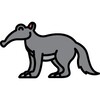 Anteater
Anteater
 Arctic_Fox
Arctic_Fox
 Bear
Bear
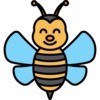 Bee
Bee
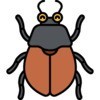 Beetle
Beetle
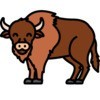 Bison
Bison
 Blue_Tang_Fish
Blue_Tang_Fish
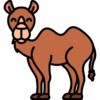 Camel
Camel
 Cat
Cat
 Cameleon
Cameleon
 Cheetah
Cheetah
 Chicken
Chicken
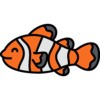 Clown_Fish
Clown_Fish
 Cougar
Cougar
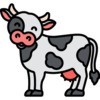 Cow
Cow
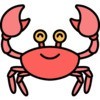 Crab
Crab
 Crocodile
Crocodile
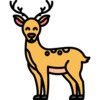 Deer
Deer
 Dog
Dog
 Dolphin
Dolphin
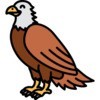 Eagle
Eagle
 Duck
Duck
 Elephant
Elephant
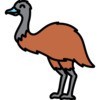 Emu
Emu
 Flamingo
Flamingo
 Fox
Fox
 Frog
Frog
 Giant_Panda
Giant_Panda
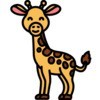 Giraffe
Giraffe
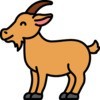 Goat
Goat
 Gorilla
Gorilla
 Guinea_Pig
Guinea_Pig
 Hamster
Hamster
 Hedgehog
Hedgehog
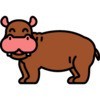 Hippopotamus
Hippopotamus
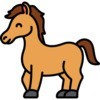 Horse
Horse
 Hummingbird
Hummingbird
 Jaguar
Jaguar
 Jellyfish
Jellyfish
 Kangaroo
Kangaroo
 Killer_Whale
Killer_Whale
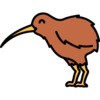 Kiwi
Kiwi
 Koala
Koala
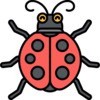 Ladybug
Ladybug
 Lemur
Lemur
 Leopard
Leopard
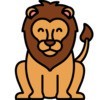 Lion
Lion
 Llama
Llama
 Lobster
Lobster
 Monkey
Monkey
 Mouse
Mouse
 Octopus
Octopus
 Orangutan
Orangutan
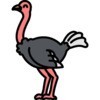 Ostrich
Ostrich
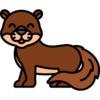 Otter
Otter
 Owl
Owl
 Panther
Panther
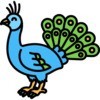 Peacock
Peacock
 Penguin
Penguin
 Pig
Pig
 Pigeon
Pigeon
 Platypus
Platypus
 Polar_Bear
Polar_Bear
 Porcupine
Porcupine
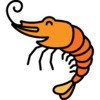 Prawn
Prawn
 Praying_Mantis
Praying_Mantis
 Puffer_Fish
Puffer_Fish
 Rabbit
Rabbit
 Raccoon
Raccoon
 Rat
Rat
 Red_Panda
Red_Panda
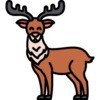 Reindeer
Reindeer
 Rhinoceros
Rhinoceros
 Salmon
Salmon
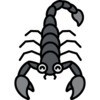 Scorpion
Scorpion
 Seahorse
Seahorse
 Seal
Seal
 Shark
Shark
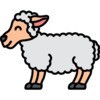 Sheep
Sheep
 Skunk
Skunk
 Sloth
Sloth
 Snail
Snail
 Snake
Snake
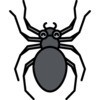 Spider
Spider
 Squirrel
Squirrel
 Starfish
Starfish
 Stingray
Stingray
 Sugar_Glider
Sugar_Glider
 Swan
Swan
 Tiger
Tiger
 Tortoise
Tortoise
 Toucan
Toucan
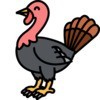 Turkey
Turkey
 Turtle
Turtle
 Walrus
Walrus
 Whale
Whale
 Wolf
Wolf
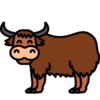 Yak
Yak
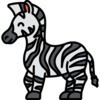 Zebra
Zebra
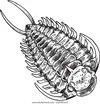 Trilobite
Trilobite
 Tiktaalik
Tiktaalik
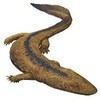 Acanthostega
Acanthostega
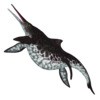 Ichthyosaur
Ichthyosaur
 Pterosaurs
Pterosaurs
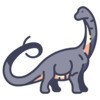 Dinosaur
Dinosaur
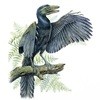 Archaeopteryx
Archaeopteryx
 Archelon
Archelon
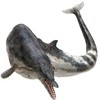 Basilosaurus
Basilosaurus
 Megalodon
Megalodon
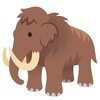 Mammoth
Mammoth
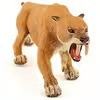 Smilodon
Smilodon
Copyright: www.templatemonster.com (purchase code: 67c7318e09c0a963061015a2)
Toby(Brown) & Milo(White) lived on a farm in Highland, MD, from 2015 to 2022, before moving to Ashburn, VA. In April 2017, the adventurous two-year-old brothers climbed a tree to play.
2. Exodus - The liberation of the Israelites from Egypt
3. Leviticus - Laws for Israel's religious and social life
4. Numbers - The journey of the Israelites in the wilderness
5. Deuteronomy - Moses' speeches and the renewal of the covenant
6. Joshua - The conquest and division of the Promised Land
7. Judges - The time of Israel's judges and cycles of sin
8. Ruth - The story of Ruth and her loyalty
9. 1 Samuel - The life of Samuel and the rise of King Saul
10. 2 Samuel - The reign of King David
11. 1 Kings - The reign of King Solomon and the division of the kingdom
12. 2 Kings - The history of the divided kingdom of Israel and Judah
13. 1 Chronicles - A retelling of Israel's history focusing on David's reign
14. 2 Chronicles - The history of the kings of Judah
15. Ezra - The return of the exiles and the rebuilding of the temple
16. Nehemiah - The rebuilding of Jerusalem's walls and spiritual renewal
17. Esther - The story of Queen Esther saving the Jewish people
18. Job - The story of Job's suffering and his search for answers
19. Psalms - Hymns and prayers expressing a range of emotions
20. Proverbs - Wisdom literature focusing on practical living
21. Ecclesiastes - Reflections on the meaning of life and human experience
22. Song of Solomon - A poetic celebration of love
23. Isaiah - Prophecies of judgment and restoration
24. Jeremiah - Warnings of judgment and promises of hope
25. Lamentations - Expressions of grief over the fall of Jerusalem
26. Ezekiel - Visions and prophecies during the Babylonian exile
27. Daniel - Prophecies about God's sovereignty over nations
28. Hosea - Prophecies about Israel's unfaithfulness and God's love
29. Joel - Prophecies about a locust plague and the coming day of the Lord
30. Amos - Prophecies of judgment against Israel's social injustices
31. Obadiah - Prophecy against Edom
32. Jonah - The story of Jonah's reluctant prophecy to Nineveh
33. Micah - Prophecies of judgment and hope for Israel and Judah
34. Nahum - Prophecy against Nineveh
35. Habakkuk - Dialogues with God on the problem of evil
36. Zephaniah - Prophecies of judgment and the hope of restoration
37. Haggai - Encouragement to rebuild the temple
38. Zechariah - Visions and prophecies about Israel's future
39. Malachi - Prophecies about the coming Messiah
2. Mark - The life and ministry of Jesus, focusing on His actions
3. Luke - The life and teachings of Jesus, emphasizing compassion
4. John - The life, teachings, and divinity of Jesus
5. Acts - The spread of the gospel and the early church's growth
6. Romans - Paul's letter about salvation and righteousness
7. 1 Corinthians - Paul's teachings on Christian unity and church conduct
8. 2 Corinthians - Paul's encouragement and defense of his ministry
9. Galatians - Paul's defense of salvation by faith
10. Ephesians - Paul's teachings on the unity of the body of Christ
11. Philippians - Paul's letter of joy and encouragement in suffering
12. Colossians - Paul's letter emphasizing the supremacy of Christ
13. 1 Thessalonians - Paul's letter encouraging the church in Thessalonica
14. 2 Thessalonians - Paul's letter regarding the second coming of Christ
15. 1 Timothy - Paul's letter on church leadership and conduct
16. 2 Timothy - Paul's final encouragement to Timothy
17. Titus - Paul's letter on church leadership and sound doctrine
18. Philemon - Paul's letter regarding Onesimus, a runaway slave
19. Hebrews - A letter exhorting believers to hold fast to their faith in Christ
20. James - A letter emphasizing practical Christian living
21. 1 Peter - Peter's encouragement to suffering Christians
22. 2 Peter - Peter's warning against false teachers and encouragement to grow in grace
23. 1 John - A letter on love, obedience, and assurance of salvation
24. 2 John - A letter warning against false teachers
25. 3 John - A letter commending hospitality to faithful workers
26. Jude - A letter urging believers to contend for the faith
27. Revelation - John's apocalyptic vision of the end of the world
One of the most pressing concerns is climate change. Rising global temperatures, extreme weather events, and ecological destruction are no longer distant threats but present realities. Scientists have repeatedly warned that we are approaching critical tipping points that could make large parts of the planet uninhabitable. Despite clear evidence, global cooperation remains insufficient, and economic interests often take precedence over environmental responsibility. The consequences of inaction are already visible — devastating wildfires, prolonged droughts, melting ice caps, and rising sea levels are displacing millions. Unless global leaders commit to significant carbon reductions and sustainable policies, the damage may soon become irreversible.
The loss of biodiversity is another consequence of environmental neglect. Species extinction is occurring at an unprecedented rate due to deforestation, habitat destruction, and pollution. The delicate balance of ecosystems is being disrupted, with potentially devastating effects on food chains and the overall health of the planet. Efforts to conserve wildlife and protect natural habitats must be prioritized to prevent further ecological collapse.
Another existential threat is the proliferation of nuclear weapons. The Cold War era may be over, but the number of nuclear-armed states has increased, and geopolitical tensions continue to rise. The risk of accidental or intentional nuclear conflict is higher than ever, yet global disarmament efforts have stalled. A single miscalculation or reckless decision could result in catastrophic destruction, wiping out entire populations. With the increasing sophistication of nuclear arsenals and the development of hypersonic missiles, the ability to launch devastating attacks in minutes raises the stakes even higher. Diplomatic efforts must be reinvigorated to prevent escalation and foster international agreements on arms reduction.
Furthermore, deepening social and economic inequalities contribute to instability and division. The wealth gap between the rich and the poor has widened to unprecedented levels, leading to political unrest, social fragmentation, and increased conflict. Many governments prioritize corporate profits over the well-being of their citizens, exacerbating societal tensions and fueling resentment. The disparity in access to basic resources such as clean water, education, and healthcare leaves millions struggling for survival, while a small elite continues to accumulate unimaginable wealth. If left unchecked, this imbalance will further erode trust in institutions, leading to mass discontent and potential revolutions.
Technology, while offering immense benefits, also poses significant dangers. The rise of artificial intelligence, automation, and digital surveillance raises ethical concerns about privacy, job security, and the concentration of power. If misused, these advancements could lead to widespread societal control, erosion of freedoms, and economic displacement on a massive scale. While AI and automation promise increased efficiency and convenience, they also threaten millions of jobs, creating a crisis of unemployment and economic disparity. Governments and corporations must implement strategies to manage this transition responsibly, ensuring that technological progress does not come at the cost of human dignity and security.
Moreover, the rise of misinformation and the breakdown of trust in factual reporting have further destabilized societies. Social media platforms, driven by profit motives, allow disinformation to spread unchecked, fueling radical ideologies and deepening divisions. The erosion of truth has led to a world where scientific facts are dismissed, conspiracy theories thrive, and people are manipulated into believing narratives that serve powerful interests. Restoring faith in credible journalism and critical thinking is essential for an informed and engaged global population.
Another significant challenge is the depletion of natural resources. Humanity is consuming the Earth's resources at an unsustainable rate, leading to deforestation, water shortages, and biodiversity loss. The overexploitation of natural resources is driven by a growing global population and an economic model that prioritizes short-term profits over long-term sustainability. If current consumption patterns continue, future generations will face severe shortages of essential materials, food, and water. It is imperative to adopt sustainable practices, invest in renewable energy, and protect the planet's ecosystems to ensure the survival of all species.
Political instability and the erosion of democratic institutions also pose a significant risk to humanity's future. In many countries, authoritarianism is on the rise, and democratic values are under threat. Governments are increasingly using surveillance, censorship, and repression to maintain control, limiting freedoms and undermining the rights of individuals. The suppression of dissent, the manipulation of elections, and the weakening of the rule of law contribute to societal unrest and hinder progress. Protecting democratic principles, ensuring transparency, and fostering civic engagement are crucial to maintaining a just and equitable society.
The global refugee crisis is another symptom of a world in turmoil. Conflicts, climate change, and economic hardship have forced millions of people to flee their homes in search of safety and stability. Many nations, however, have responded with hostility, closing their borders and implementing strict immigration policies. This not only exacerbates human suffering but also fuels xenophobia and division. A more compassionate and coordinated approach to migration is needed, one that addresses the root causes of displacement and provides support to those in need.
At the heart of these crises lies a fundamental issue: human nature itself. Throughout history, humanity has exhibited a tendency toward greed, short-term thinking, and self-interest at the expense of the greater good. While cooperation and compassion are also part of human nature, they are often overshadowed by the pursuit of power, wealth, and dominance. This inherent flaw manifests in political corruption, economic exploitation, and environmental destruction. If we are to prevent self-destruction, a shift in human consciousness is necessary. Education, ethical leadership, and cultural transformation must work together to encourage values of sustainability, empathy, and collective responsibility.
Despite these grim realities, hope remains. History has shown that humanity is capable of remarkable resilience and transformation. Global cooperation, responsible leadership, and collective action can steer us away from disaster. There are numerous examples of societies overcoming seemingly insurmountable challenges through determination and unity. The eradication of diseases, the advancement of human rights, and significant technological breakthroughs remind us that positive change is possible.
However, time is running out. Governments, corporations, and individuals must acknowledge the urgency of the situation and take immediate steps to reverse our course. The fate of future generations depends on the choices we make today. Leaders must act with integrity, citizens must demand accountability, and the world must unite in a shared commitment to securing a sustainable and just future. The window for action is narrowing, but if we act decisively, there is still hope for humanity to change its trajectory and build a world that is equitable, secure, and sustainable for generations to come.
One of the most shocking aspects of the American healthcare system is the exorbitant cost of medical procedures and hospital stays. A simple ambulance ride can cost thousands of dollars, while an overnight stay in a hospital can amount to tens of thousands. Surgeries, even those considered routine in other countries, often come with six-figure price tags. For instance, an appendectomy can cost anywhere from $10,000 to $50,000, while childbirth without complications may exceed $30,000. The uninsured and underinsured are left with little choice but to avoid seeking medical attention altogether, fearing the insurmountable debt that might follow. In some cases, patients are even denied treatment for life-threatening conditions if they cannot prove their ability to pay.
The price of prescription drugs in the U.S. further exacerbates the crisis. Americans pay significantly higher prices for medications compared to citizens of other countries, even when the same drugs are produced by the same manufacturers. The pharmaceutical industry, with its powerful lobbying influence, has successfully prevented meaningful regulation on drug pricing. Medications for chronic conditions, such as insulin for diabetics or inhalers for asthma patients, are priced astronomically high. A vial of insulin, which can cost as little as $10 in other countries, can be priced at over $300 in the United States. As a result, many individuals, especially those with chronic illnesses, are forced to ration their medications or forgo them entirely, leading to preventable complications and, in some cases, premature death.
Health insurance, meant to provide financial protection against medical expenses, often fails to deliver on its promise. High premiums, deductibles, and copays mean that even those with insurance may find themselves drowning in medical bills. Many employer-sponsored insurance plans have high out-of-pocket costs, and even those with government assistance programs like Medicare and Medicaid may struggle with coverage limitations. The complex and bureaucratic nature of insurance policies further compounds the problem, as many patients find their claims denied or face unexpected expenses due to hidden fees and fine-print exclusions. Medical debt has become a leading cause of bankruptcy in the U.S., trapping families in financial despair. In 2021 alone, over 100 million Americans were found to have some level of medical debt, with many resorting to crowdfunding and charity in desperate attempts to cover their bills.
The consequences of this broken system extend beyond individual suffering. Delayed or neglected medical treatment leads to worsening public health outcomes, increased emergency room visits, and overall higher healthcare costs. Preventable diseases escalate into life-threatening conditions, straining an already overburdened healthcare infrastructure. Mental health services, already underfunded, are often inaccessible due to high costs, leading to untreated mental illnesses that contribute to homelessness, crime, and suicide rates.
Additionally, racial and socioeconomic disparities further highlight the inequities in the American healthcare system. Minority communities, particularly Black and Hispanic populations, face significantly higher barriers to healthcare access. Lack of insurance, systemic discrimination, and lower-quality care contribute to higher rates of maternal mortality, chronic disease, and premature death among these communities. Rural areas also suffer from a lack of hospitals and healthcare providers, forcing residents to travel long distances for basic medical services or forego them altogether.
Addressing the crisis of American healthcare requires systemic reform. Price regulation, greater transparency in medical billing, and the expansion of public healthcare programs could alleviate much of the financial strain on patients. A shift away from a profit-driven healthcare model to a patient-centered system is necessary to ensure that access to medical care is treated as a fundamental human right rather than a privilege for the wealthy. Universal healthcare models, successfully implemented in countries like Canada, the UK, and Germany, demonstrate that comprehensive care is achievable without imposing financial ruin on citizens.
Furthermore, curbing the influence of the pharmaceutical and insurance industries on policy-making is crucial to creating a fairer and more accessible healthcare system. Until meaningful changes are made, millions of Americans will continue to face the impossible choice between financial stability and their health, with devastating consequences for individuals and society as a whole.
● A pandemic has the potential to cause massive devastation, but it is unlikely to lead to the complete extinction of humanity. While some pandemics, such as the Black Death and COVID-19, have caused widespread suffering and death, humanity has a strong ability to adapt, develop medical treatments, and mitigate the impacts over time.
● An asteroid impact could threaten humanity's existence if it's large enough. It could cause massive destruction, fires, tsunamis, and a "nuclear winter" by blocking sunlight, disrupting global temperatures and food production. While rare, asteroid impacts have been linked to mass extinctions, and scientists continue to monitor potential threats. 📽
● Climate change is unlikely to cause complete extinction but could lead to severe disruptions, such as extreme weather, rising sea levels, and food and water shortages. These impacts could threaten societies and ecosystems, causing widespread suffering, but not necessarily extinction.
● A full-scale nuclear war could cause humanity’s extinction. Immediate explosions would be devastating, and the aftermath, including nuclear winter, could block sunlight, disrupt food production, and lead to famine, ecosystem collapse, and long-term environmental damage, making survival extremely difficult. 📽
● A gamma-ray burst (GRB) could threaten humanity by emitting intense radiation that strips away the ozone layer, leaving Earth vulnerable to harmful solar radiation. This could lead to mass extinctions and disrupt ecosystems. However, the likelihood of a GRB occurring close enough to Earth to cause such an event is extremely low. 📽
● A solar storm could cause significant disruptions, including power grid damage, satellite failures, and communication issues. Air travel could face radiation risks, and infrastructure like healthcare and transportation might be severely impacted, leading to a prolonged recovery and economic losses. 📽
●
 Triple-click to select a question.
Triple-click to select a question.● Who are the richest people in the world?
● What are the fastest animals on Earth?
● Which countries have the most powerful military forces in the world?
● Which companies have the highest car sales globally?
● What are the longest-living animals and plants on Earth?
● Who are the historical figures responsible for the most killings of people?
● How many galaxies and stars are there in the universe?
● Which animals kill the most people?
● What are the most expensive things in the world?
● Which countries have the highest GDP?
● What would happen if the Yellowstone supervolcano erupted?
Timeless Marvels: Architectural Wonders across the Ages
Abu Simbel is a pair of ancient rock temples in southern Egypt, built by Pharaoh Ramses II around 1264 BCE to glorify himself and his queen Nefertari. The temples are renowned for their monumental scale, intricate carvings, and alignment that allows sunlight to illuminate the inner sanctum on specific days of the year. In the 1960s, they were relocated in an incredible engineering feat to save them from submersion caused by the creation of the Aswan High Dam’s reservoir, Lake Nasser.
Al-Khazneh, also known as the Treasury, is one of Petra's most famous and iconic structures. Carved into the sandstone cliffs in the 1st century AD, it is believed to have been the mausoleum of Nabataean King Aretas IV. The façade, with its elaborate columns, intricate carvings, and blending of Greek, Egyptian, and Mesopotamian architectural styles, exemplifies the advanced engineering and artistic achievements of the Nabataean civilization. Though originally thought to be a treasury due to the urn-shaped motif at the top of the structure, recent research suggests it was likely a royal tomb.
The Alhambra is a stunning palace and fortress complex located in Granada, Spain, renowned for its intricate Islamic architecture and beautiful gardens. It was originally constructed in the 13th century by the Nasrid dynasty and later expanded by subsequent rulers. The palace is famous for its exquisite decorative elements, including ornate arches, tilework, and reflecting pools, showcasing the art and culture of medieval Spain.
Angkor Wat is a massive temple complex in Cambodia, originally built in the 12th century as a Hindu temple dedicated to Vishnu and later converted to a Buddhist site. Renowned for its grand scale and intricate carvings, it is the largest religious monument in the world. Surrounded by a vast moat, its iconic towers symbolize Mount Meru, a sacred mountain in Hindu and Buddhist cosmology.
Aqueduct of Segovia is an ancient Roman structure in Spain, celebrated for its remarkable engineering and preservation. Built around the 1st century AD, it transported water from the nearby mountains to the city using over 160 arches made of unmortared granite. This iconic landmark is both a testament to Roman ingenuity and a UNESCO World Heritage Site.
The Buckingham Palace is the official residence of the British monarch in London and a symbol of the United Kingdom's monarchy. Originally built as a townhouse in 1703, it became the royal residence in 1837 during Queen Victoria's reign. Known for its magnificent architecture, it is also the site of ceremonial events like the Changing of the Guard.
The Burj Khalifa, located in Dubai, United Arab Emirates, is the tallest building in the world, standing at 828 meters (2,717 feet) with 163 floors. Completed in 2010, it serves as a mixed-use skyscraper with residences, hotels, offices, and observation decks offering panoramic views of the city. Its design is inspired by Islamic architecture, and it is a symbol of Dubai's ambition and modernity., located in Dubai, United Arab Emirates, is the tallest building in the world, standing at 828 meters (2,717 feet) with 163 floors. Completed in 2010, it serves as a mixed-use skyscraper with residences, hotels, offices, and observation decks offering panoramic views of the city. Its design is inspired by Islamic architecture, and it is a symbol of Dubai's ambition and modernity.
The Cathedrale Notre Dame The Cathédrale Notre-Dame de Paris, commonly known as Notre-Dame, is a medieval Catholic cathedral located in the heart of Paris, France. Constructed between 1163 and 1345, it is a masterpiece of French Gothic architecture, renowned for its flying buttresses, stained glass rose windows, and intricate sculptures. The cathedral, a UNESCO World Heritage Site, gained further global recognition through Victor Hugo's novel The Hunchback of Notre-Dame and is undergoing restoration following a devastating fire in 2019.
Chichen Itza is a large pre-Columbian archaeological site located in the Yucatan Peninsula of Mexico. It was a major city of the Maya civilization, thriving between the 9th and 12th centuries, and is famous for its iconic pyramid, El Castillo, which served as a temple to the god Kukulkan. As a UNESCO World Heritage Site and one of the New Seven Wonders of the World, it remains a symbol of Mayan culture and advanced astronomical knowledge.
Christ the Redeemer is a colossal statue of Jesus Christ located atop Mount Corcovado in Rio de Janeiro, Brazil. Completed in 1931, the Art Deco-style statue stands 30 meters (98 feet) tall, with an additional 8-meter (26-foot) pedestal, and has become an iconic symbol of Christianity and Brazilian culture. As a UNESCO World Heritage Site and one of the New Seven Wonders of the World, it attracts millions of visitors annually for its breathtaking views and spiritual significance.
The Colosseum, also known as the Flavian Amphitheatre, is an iconic Roman structure located in the heart of Rome, Italy. Completed in 80 AD under Emperor Titus, it was used for gladiatorial contests, public spectacles, and other events, capable of seating up to 50,000 spectators. As a UNESCO World Heritage Site and one of the New Seven Wonders of the World, it stands as a testament to ancient Roman engineering and culture, drawing millions of visitors annually.
The Eiffel Tower, located in Paris, France, is a world-famous wrought-iron lattice structure built as the centerpiece of the 1889 World's Fair. Designed by Gustave Eiffel's company, it stands 330 meters (1,083 feet) tall and was initially criticized but later became a beloved symbol of France and global architectural innovation. Today, it is one of the most visited monuments in the world, offering stunning views of Paris from its observation decks.
The Empire State Building, located in New York City, was completed in 1931 and was the tallest building in the world until 1970. Standing at 443.2 meters (1,454 feet) including its antenna, the skyscraper is a masterpiece of Art Deco architecture and a symbol of American industrial strength and innovation. It attracts millions of visitors each year who come to see its observation decks, offering panoramic views of the city and beyond.
The Forbidden City, located in the heart of Beijing, China, was the imperial palace for nearly 500 years, serving as the home of Chinese emperors and their households from the Ming dynasty to the end of the Qing dynasty. Completed in 1420, it is a vast complex covering around 180 acres and consists of nearly 1,000 buildings, showcasing traditional Chinese palatial architecture. As a UNESCO World Heritage Site, it stands as one of the most well-preserved and largest palace complexes in the world, symbolizing the power and grandeur of imperial China.
Gobekl Tepe, located in southeastern Turkey, is an ancient site dating back to around 11,000 BCE, making it one of the world's oldest known religious structures. It consists of large stone pillars arranged in circles, with intricate carvings of animals, and was likely used for ceremonial purposes by hunter-gatherers before the advent of agriculture. The site's purpose remains debated, but it is believed to have been a significant pilgrimage destination, possibly linked to early death cults and ritualistic practices.
The Golden Gate Bridge, completed in 1937, is an iconic suspension bridge that spans the Golden Gate Strait, connecting San Francisco to Marin County, California. Known for its striking Art Deco design and vibrant orange-red color, it was the longest suspension bridge in the world at the time of its completion. As a symbol of innovation and resilience, it remains one of the most photographed and recognized landmarks in the world.
The Great Pyramid of Giza, located on the outskirts of Cairo, Egypt, is the largest and oldest of the three pyramids on the Giza Plateau. Built during the Fourth Dynasty of the Old Kingdom around 2580–2560 BCE for Pharaoh Khufu, it originally stood at 146.6 meters (481 feet), although it now reaches 138.8 meters (455 feet) due to the loss of its outer casing stones. As one of the Seven Wonders of the Ancient World, the pyramid remains an enduring symbol of ancient Egyptian civilization, showcasing extraordinary architectural and engineering achievements.
The Great Wall of China is a vast network of fortifications built primarily during the Ming Dynasty (1368–1644), although earlier walls were constructed as far back as the 7th century BCE. Stretching over 13,000 miles, the wall was designed to protect Chinese states from invasions and raids by nomadic tribes from the north. It is considered one of the most impressive architectural feats in history, blending military, logistical, and artistic elements, and it remains a UNESCO World Heritage Site, symbolizing China's strength and perseverance.
Hagia Sophia, located in Istanbul, Turkey, is a historic architectural marvel that has served as a cathedral, mosque, and museum. Originally constructed as a Christian cathedral in 537 CE during the Byzantine Empire, it was the largest church in the world for nearly 1,000 years. After the Ottoman conquest of Constantinople in 1453, it was converted into a mosque, and in the 20th century, it became a museum, before being reconverted into a mosque in 2020. Hagia Sophia is renowned for its massive dome, intricate mosaics, and blend of Christian and Islamic architectural elements, making it a symbol of cultural and religious significance.
Himeji Castle, located in Himeji, Japan, is one of the most well-preserved and iconic castles in the country. Originally built in 1581, it is renowned for its elegant white exterior and complex defensive design, which includes a maze of paths to confuse attackers. Known as "White Heron Castle" due to its resemblance to a bird in flight, it is a UNESCO World Heritage Site and a prime example of Japanese feudal architecture.
The Kaaba, located at the heart of the Masjid al-Haram mosque in Mecca, Saudi Arabia, is the most sacred site in Islam. Muslims around the world face towards it during daily prayers, a practice known as the Qibla. It is also the focal point of the Hajj pilgrimage, where millions of Muslims visit each year as part of one of the Five Pillars of Islam.
La Pedrera, also known as Casa Milà, is one of Antoni Gaudí's masterpieces in Barcelona, completed between 1906 and 1912. Its undulating stone façade and unique, organic design set it apart, with features like wrought-iron balconies and a roof dotted with sculptural chimneys resembling warriors. Recognized as a UNESCO World Heritage site in 1984, La Pedrera now serves as a cultural center, offering visitors a glimpse into Gaudí's architectural genius.
Machu Picchu, the ancient Incan city nestled in the Andes Mountains of Peru, is one of the most iconic archaeological sites in the world. Believed to have been built in the 15th century under the rule of Inca emperor Pachacuti, it was likely a royal estate or religious retreat. Rediscovered in 1911 by Hiram Bingham, Machu Picchu is renowned for its sophisticated dry-stone construction, terraces, and stunning views, making it a UNESCO World Heritage Site and a major draw for tourists from around the globe.
The Palace of Versailles, located just outside Paris, France, is a symbol of the absolute monarchy of Louis XIV, who transformed a hunting lodge into a grand palace in the 17th century. Known for its stunning architecture, including the Hall of Mirrors and vast gardens designed by André Le Nôtre, it became the seat of political power in France for over a century. As a UNESCO World Heritage site, Versailles is a major tourist attraction, offering insights into the grandeur of French royal history and the cultural influence of the time.
The Palace of Westminster, located on the banks of the River Thames in London, is home to the British Parliament and a symbol of the UK's democratic system. The building, originally constructed in the 11th century, has undergone several expansions and renovations, with the current Gothic-style structure completed in the mid-19th century. Known for its iconic clock tower, now called Big Ben, it remains a vital political and architectural landmark, attracting millions of visitors each year.
The Parthenon, located on the Acropolis in Athens, Greece, was built between 447 and 438 BCE and dedicated to the goddess Athena. Its Doric design and massive proportions symbolize the glory of ancient Greece, particularly Athens, at the height of its power. Despite suffering damage over centuries, the Parthenon remains a UNESCO World Heritage site and an enduring symbol of classical art and democracy.
The Sagrada Familia is a monumental basilica in Barcelona designed by Antoni Gaudí, known for its unique blend of Gothic and curvilinear Art Nouveau styles. Construction began in 1882 under architect Francisco de Paula del Villar, but Gaudí took over in 1883, dedicating the rest of his life to its design. Although still unfinished, it is a UNESCO World Heritage Site and was consecrated in 2010, with an anticipated completion in 2026.
Saint Basils Cathedral in Moscow, a masterpiece of Russian architecture, was commissioned by Ivan the Terrible in the 16th century to commemorate victories over the Tatars. Known for its vibrant onion domes, the cathedral features ten chapels, each crowned with uniquely colored domes. Over the centuries, it has undergone numerous restorations, preserving its distinctive, asymmetrical design which combines elements of both Eastern and Western architectural styles.
The Sistine Chapel, located in Vatican City, is renowned for its breathtaking frescoes, particularly the ceiling painted by Michelangelo. The artwork, which includes iconic scenes such as The Creation of Adam, depicts various biblical stories from Genesis and was completed between 1508 and 1512. In addition to Michelangelo's ceiling, the chapel also features The Last Judgment on the altar wall, painted later by the artist between 1536 and 1541, making it a masterpiece of Renaissance art.
The Statue of Liberty, a gift from France to the United States, was dedicated on October 28, 1886, and has become a global symbol of freedom and democracy. Designed by French sculptor Frédéric Auguste Bartholdi, it was intended to commemorate the centennial of American independence and to celebrate the friendship between France and the U.S. Standing in New York Harbor, it serves as a welcoming beacon to immigrants and visitors, symbolizing hope and the pursuit of liberty.
Stonehenge, located on Salisbury Plain in England, is a prehistoric monument built during the Neolithic and Bronze Ages, with its construction spanning multiple phases from around 3100 BCE to 1600 BCE. Initially, it consisted of a circular ditch and bank, followed by the erection of massive sarsen stones and smaller bluestones. The purpose of Stonehenge remains a topic of debate, with theories suggesting it was used for religious rituals, astronomical observations, and even as a burial site.
The Taj Mahal, located in Agra, India, is a stunning white marble mausoleum built by Emperor Shah Jahan in memory of his beloved wife, Mumtaz Mahal, who passed away in 1631. Construction began in 1632 and was completed in 1654, involving over 20,000 workers and artisans. The monument is renowned for its exquisite symmetry, intricate inlay work, and beautiful gardens, making it a symbol of eternal love and one of the most recognized architectural wonders in the world.
Westminster Abbey is one of London's most iconic landmarks, originally built in the 11th century by King Edward the Confessor. It is renowned for being the site of royal coronations, with every monarch since William the Conqueror crowned there, and for housing the tombs of significant figures, including monarchs and writers like Geoffrey Chaucer. The Abbey also features the Coronation Chair, and its rich history continues today with notable events such as the funerals of monarchs, including Queen Elizabeth II.









